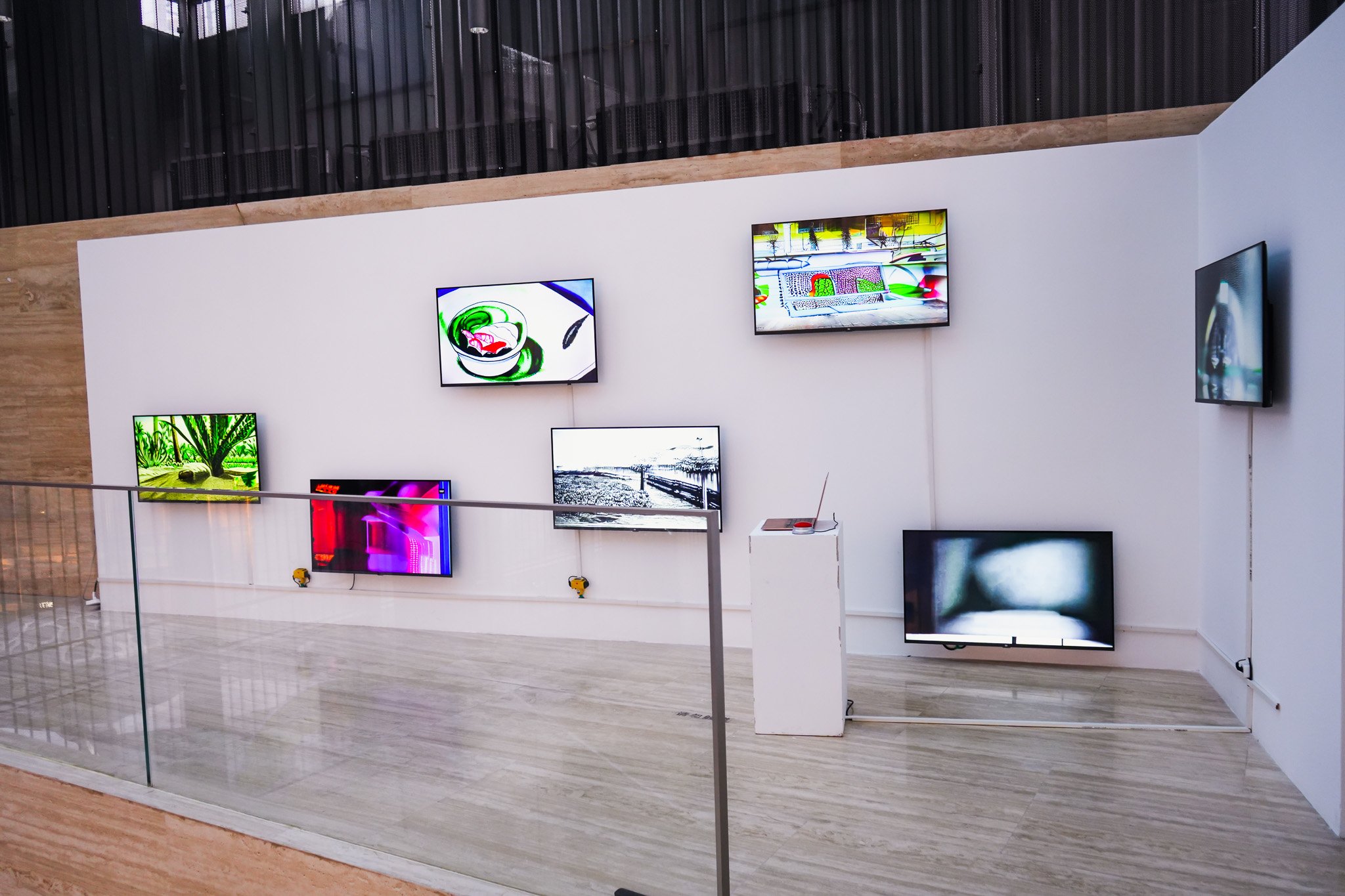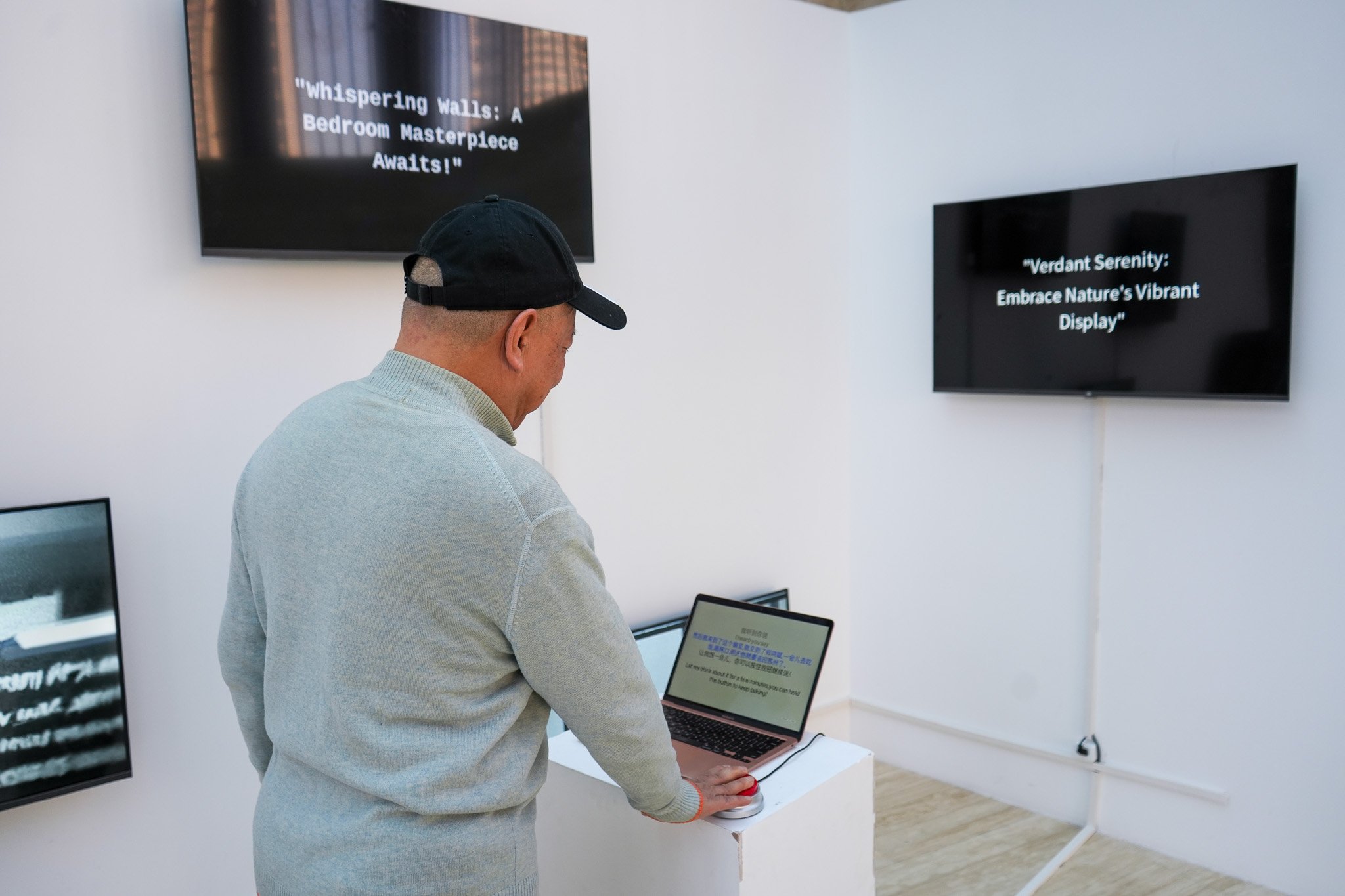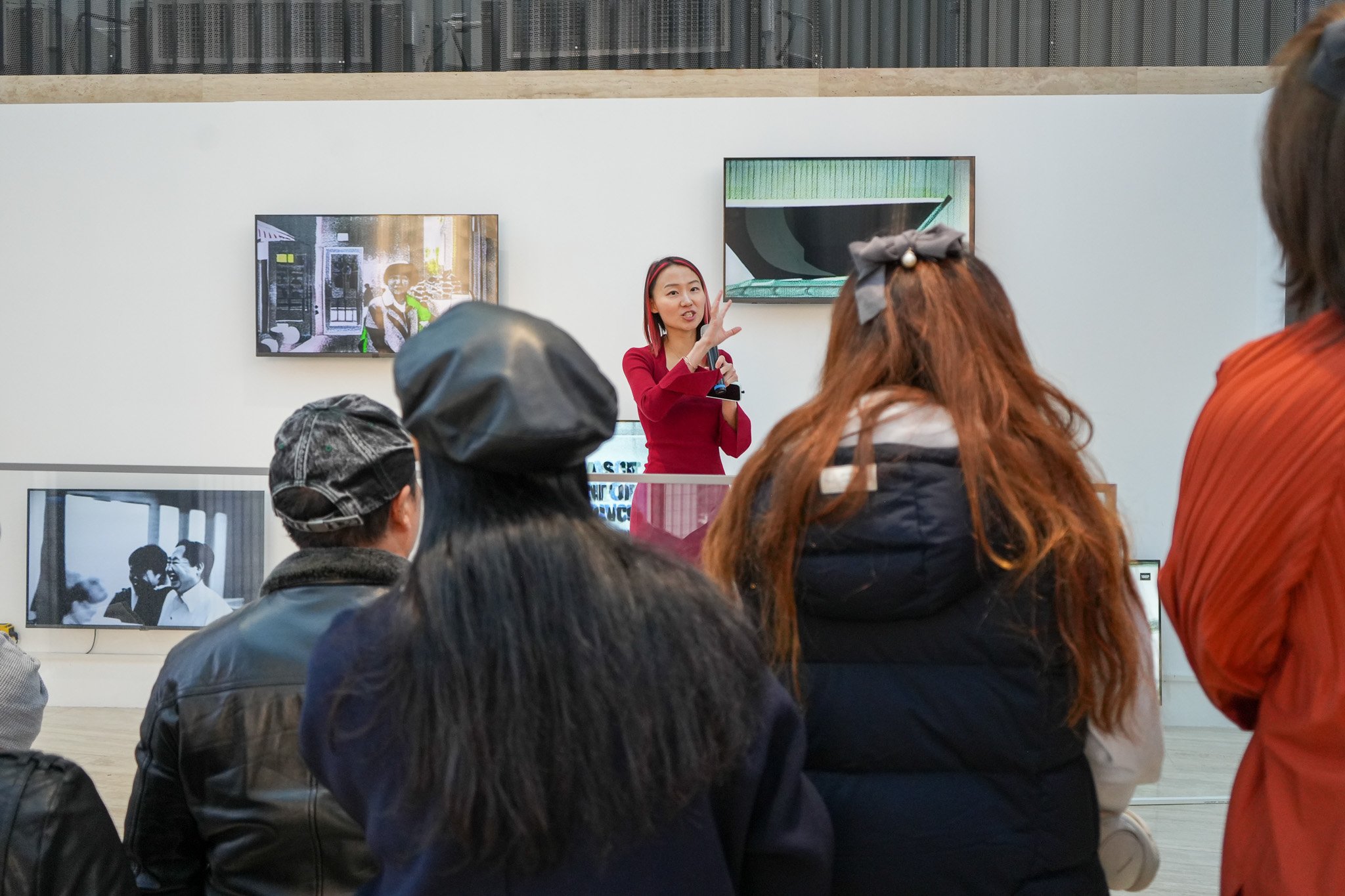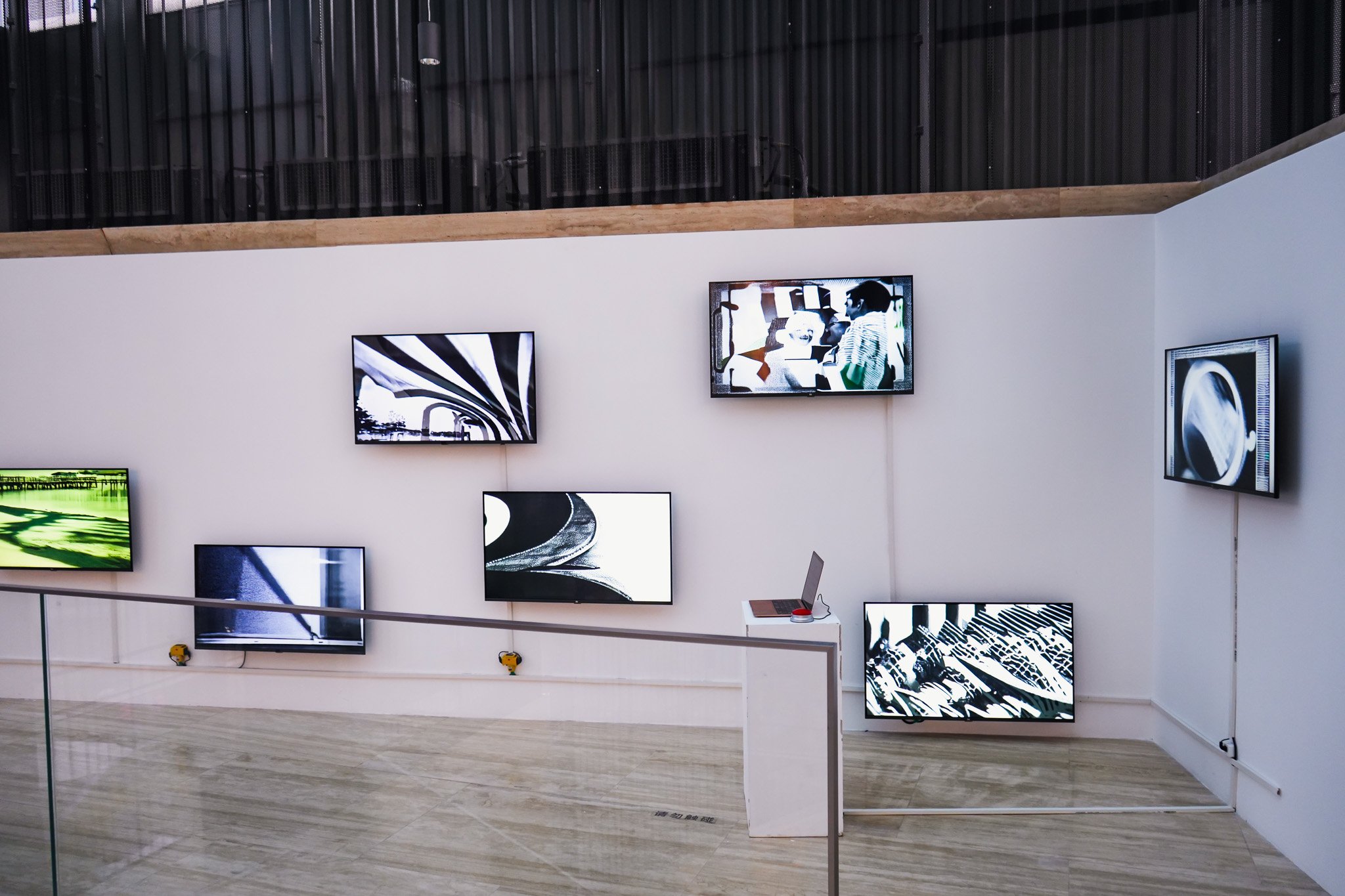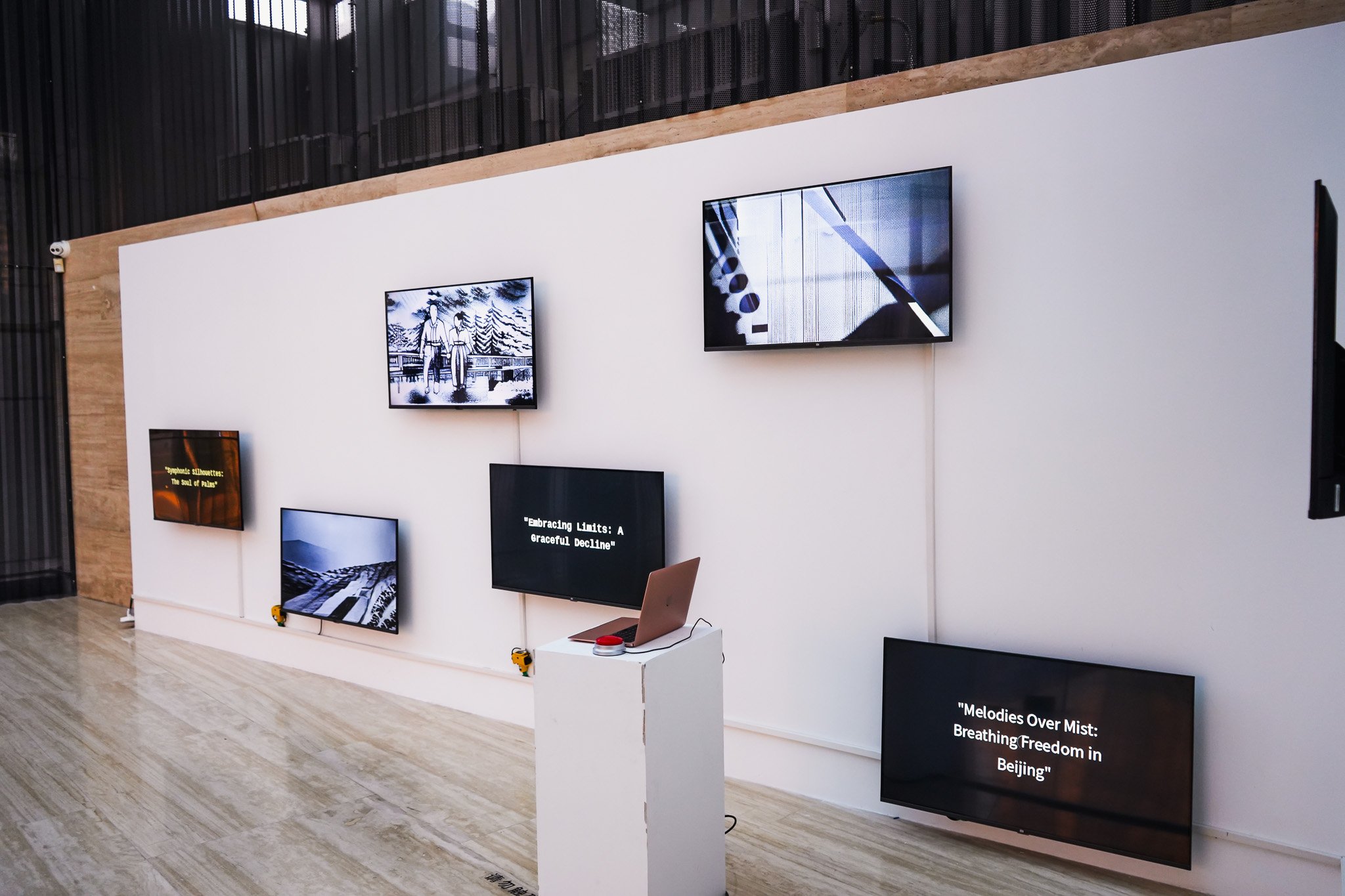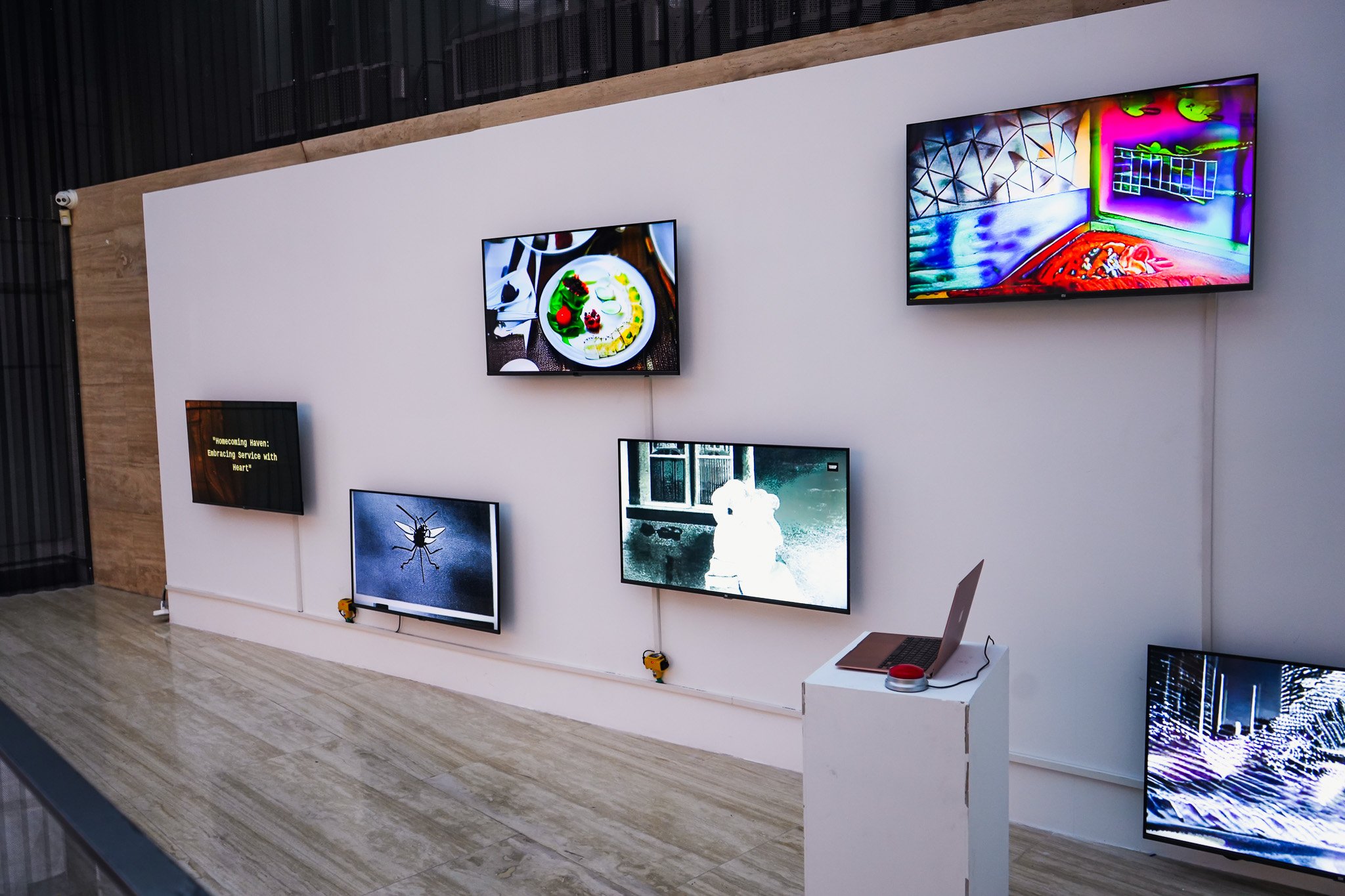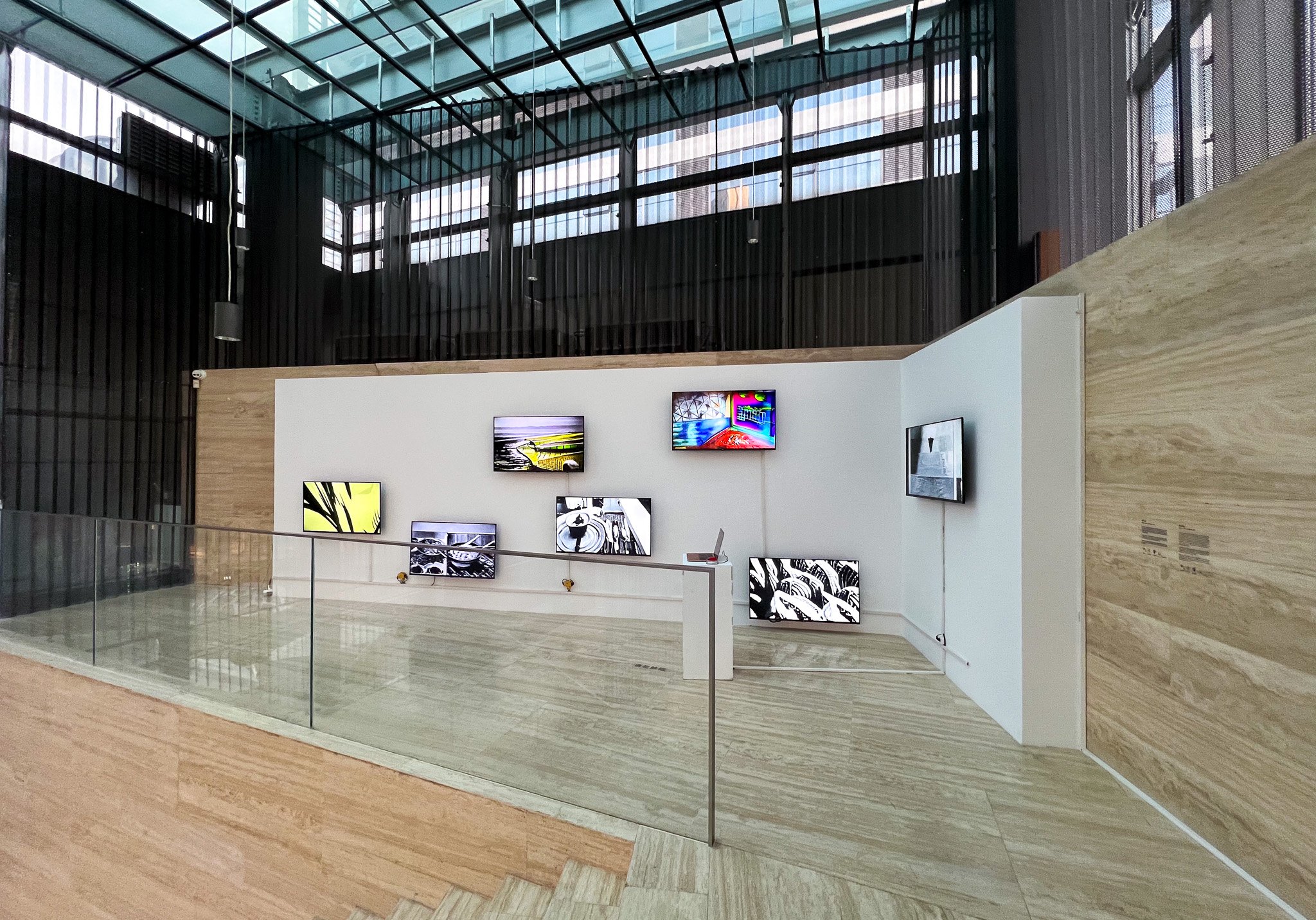Progenitorial Hysteresis 祖细迟滞
12.23.2023 – 04.13.2024
Duende Art Museum, China 巽美术馆
Preface
This marks Li Jiabao's inaugural solo exhibition in China, presenting a comprehensive display of twelve works that reflect her passionate fascination with and conscious critique of technology/science as an artist, designer, and tech researcher. Simultaneously, the exhibition is conceived as a live laboratory for her and her team (collaborating with various scientists, engineers, and AI specialists on many projects): exploring symbiosis between different species and conducting creative tests and narratives concerning the perception/cognition of reality. Upon entering the exhibition hall, we encounter mice, bats, octopuses, squids, the artist herself, and—stem cells. Functioning as a laboratory, it aims to dismantle inter-species divisions, proposing a model for a multi-species future, revealing the subtle but consequential changes in our present environment and the latent alterations in our ecology that have gone unnoticed. More importantly, by uniting scientific research, technological application, and artistic creation, Jiabao's endeavor seeks to confront humanity's inertia and offer alternative solutions akin to proto-cellular states.
The most primitive and yet-to-be-fully characterized cells are stem cells. They are alive, possess regenerative properties, can continuously grow and proliferate, and have the ability to repair and reconstruct damaged organs. If our body is considered a society where each individual cell is trained to adapt to a highly specialized societal role, then stem cells are akin to untrained students, holding the potential to pursue any industry in the future. Therefore, we invite you to envision yourself as that student, much like an artist, both being and doing. Immerse yourself in this concept, open up a completely new perspective, and engage in this exhibition. The selected works primarily intertwine two major themes: the environment - the Earth's surface, and health - the internal aspects of the human body. These pieces showcase the interconnected yet non-divisive nature of these two directions.
One aspect involves the artist herself or humanity as the protagonist, probing the socially regulated relationships between individuals and between humans and nature. This is particularly evident in three pieces related to the research experiments on women's menstrual blood. Menstrual Garden incorporates valuable protein components extracted from menstrual blood into different scent bottles, culminating in a marvelous "organ garden." This creation prompts respect for human life and women's health, while reflecting on the societal taboos surrounding women and the resultant power/privilege issues. Sentient Clit: the Pussification of BioTech combines stem cell research from menstrual blood, attempting to cultivate 3D bioprinted organs capable of generating neurosensory responses in a laboratory setting. It intertwines (the artist herself) in performance and digital media to challenge the male-dominated narratives in technology, advocating for a reevaluation of existing societal ethics complexities. Gift is a new artwork created by Jiabao for her mother, crafting an artificial heart using stem cells from her own menstrual blood. Here, the connection between women and their relationship with the world returns to the origins of life, even preceding those origins—a realm where our knowledge about proto-cells existing before our life's inception remains scarce.
Furthermore, the works in another direction are entirely focused on animals-a deliberate attempt to decenter from human-centric perspectives without any discordance. For instance, Chthulucene dismantles the supposed human supremacy and blindness by showcasing the octopus's "skill" of passing down wisdom through generations without concern for species destruction. As students, in the not-so-distant future, when we might face extinction due to environmental devastation, how do we adapt and learn from other species? In Nocturne Fugue, the complexity of the bat language system presents a challenge that even human science and artificial intelligence require further in-depth research to gradually comprehend. If the aforementioned two pieces emphasize the inherent instincts of animals, Squids Map delves into the conceptual behavior of animals. It's a work filled with empathy and imagination, inspired by the artist's current state of existence. Unlike animals that roam freely, transcending border zones, humans moving back and forth across different borders and boundaries must constantly maintain a sense of "belonging" and adapt accordingly.
The bidirectional works mutually exert tension in the exhibition, and the concept of "proto-cellular states" reminds us of the necessity and consciousness in shifting perspectives when entering different sections of the laboratory. Upon arriving at the first floor, we observe animals, and they, in turn, observe us. Hence, it's best to set aside the aura that places "humans" as the rulers of the universe or all things, to humble ourselves and learn from animals. When on the second floor, the artist redirects us to focus on humans, delving into the dissection and reconstruction of the internal human body structure. The immersive experience of interspecies interaction and cohabitation, the reality of human and non-human companionship, all lie within this exhibition. Moreover, it involves more practical and specific considerations: "How do humans dwell in the world?" (From Donna J. Haraway's When Species Meet). Yet, entrenched stagnation, as Jiabao puts it, questions: "In what ways does technology affect our ability to perceive reality? It shapes our perception of reality by disguising true experiences, rendering us unconscious and unaware of what is happening." Therefore, as the most intricate clinical experiment in human history, can stem cells bring about a turning point?
前言
这是李佳宝在国内的第一次个人展览,全面呈现作为艺术家、设计师与科技研究人员的她基于科技/科学的热切着迷与自觉批判的十二组作品。同时,展览也设置为她及其团队(很多项目由她与不同的科学家、工程师、人工智能工程师合作)的实验室现场:关于不同物种之间共生、关于对现实的感/认知的创造性测试与叙述。走进展厅,我们遇见老鼠、蝙蝠、章鱼、鱿鱼、艺术家自己以及——干细胞;作为实验室,它旨在破除种间划分,建议一个多物种未来可能的模型,揭示了此时此在,我们并未察觉到所处环境与生态潜藏的已然改变。更重要的是,通过将科学研究、科技运用与艺术创作的相互联合,佳宝的实践所作的努力在于直面人类的这种迟滞性并给予类-祖细(胞)状态的替代性方案。
最为原始且尚未充分特征化的细胞即干细胞,它是活的,具再生性,可以不断生长、增殖,可以修复、再造受损器官,假若我们的身体是一个社会,每一个个体细胞都被训练以适应社会的高度分工,那么,干细胞就是一个未受过专业训练的学生,它具备未来从事任何行业的潜能。由此,我们邀请您,如艺术家所是、所做,设想自己就是那个学生,置身其内,打开全新的视觉来参与本展览。此次挑选的作品主要与环境-地球表面、健康-人体内部这两大议题交错相关,彰显了相互拉扯却不撕裂的两个方向。
其一为艺术家自己、或人本身作为主角,叩问被规范了的人与人、人与自然的社会性关系,尤其体现在三组与女性月经经血的研究实验相关联的作品中。《月经花园》提取了经血中极具价值的蛋白质成分加入装有月经血的不同气味瓶,实验成果/作品最终生成了一个美妙的“器官花园”,它提示的是尊重人类生命与女性健康,反省社会性女性禁忌及由此导致的权力/利问题;《感知之花:生物科技的柔性变革》结合了经血中的干细胞研究,尝试在实验室中培育出能产生神经-感知反应的 3D 生物打印器官,并混合了(艺术家本人)表演、数字等媒介进行创作与传播,作品挑战了科技领域里的男性主导叙事,倡议关于现有社会伦理复杂性的重新考量;《礼物》是佳宝为了她的妈妈所创作的一件新作品,用她自己月经血的干细胞制作了一颗人造心脏。在这里,女性(之间)及其与世界的连接重新回到了生命的起点、甚至生命起点之前——我们至今对存在于我们生命起点之前的祖细胞知之甚少。
进而,另一方向的作品全然聚焦于动物——去人类中心化的一种尝试也就毫不违和。比如《触生世》以海洋章鱼代代相传其智慧而不担心物种毁灭的“技能”来拆解所谓人类至上的局限性与盲目性。作为学生,在不久的未来,当我们可能因为环境被破坏殆尽而濒临灭绝时,如何适应并向其他物种学习?而在《夜曲赋格》,蝙蝠语言系统的复杂程度则是人类科学乃至人工智能也需要继续深入研究才能逐渐接近理解的。若说上述两件作品强调了动物们的器质性本能,那么《鱿鱼地图》则探讨了动物的观念性行为。这是一件充满共情与想象力的作品,启发于艺术家本人目前的生存状态,较之于能够自由穿梭并跨越了边界地带的这类动物,往返于不同国界、边境的人则需要时刻保持“归属”并做出应对。
彼此牵引的双向作品构成了展览的整体张力,“祖细状态”也提醒我们进入实验室不同区间时切换视角的自觉性与必要性。当来到第一层楼,我们看着动物,动物也看着我们,于是最好搁置那个以“人”作为宇宙或万物主宰的光环,以至拜动物为师;当位于第二层楼,艺术家又把我们拉回到人本身,直抵人体内部构造的拆分与重造。多物种互动、共居的幻境,人类与非人类的伴生现实,皆在这个展览的沉浸式体验之中;之外,涉及更切实、更具体的,亦即“人如何居住在世界中?”(《When Species Meet》by Donna J. Haraway);但是,固化的迟滞——正如佳宝所言:“科技以怎样的方式影响我们感知现实的能力?科技通过伪装对现实的真实体验,来塑造我们对现实的感知。于是,我们对正在发生的一切变得毫无意识,也毫无察觉。”那末,作为人类历史上面临的最复杂的一个临床实验——干细胞, 它能否带来转机?
王 景 Wang Jing
First Floor
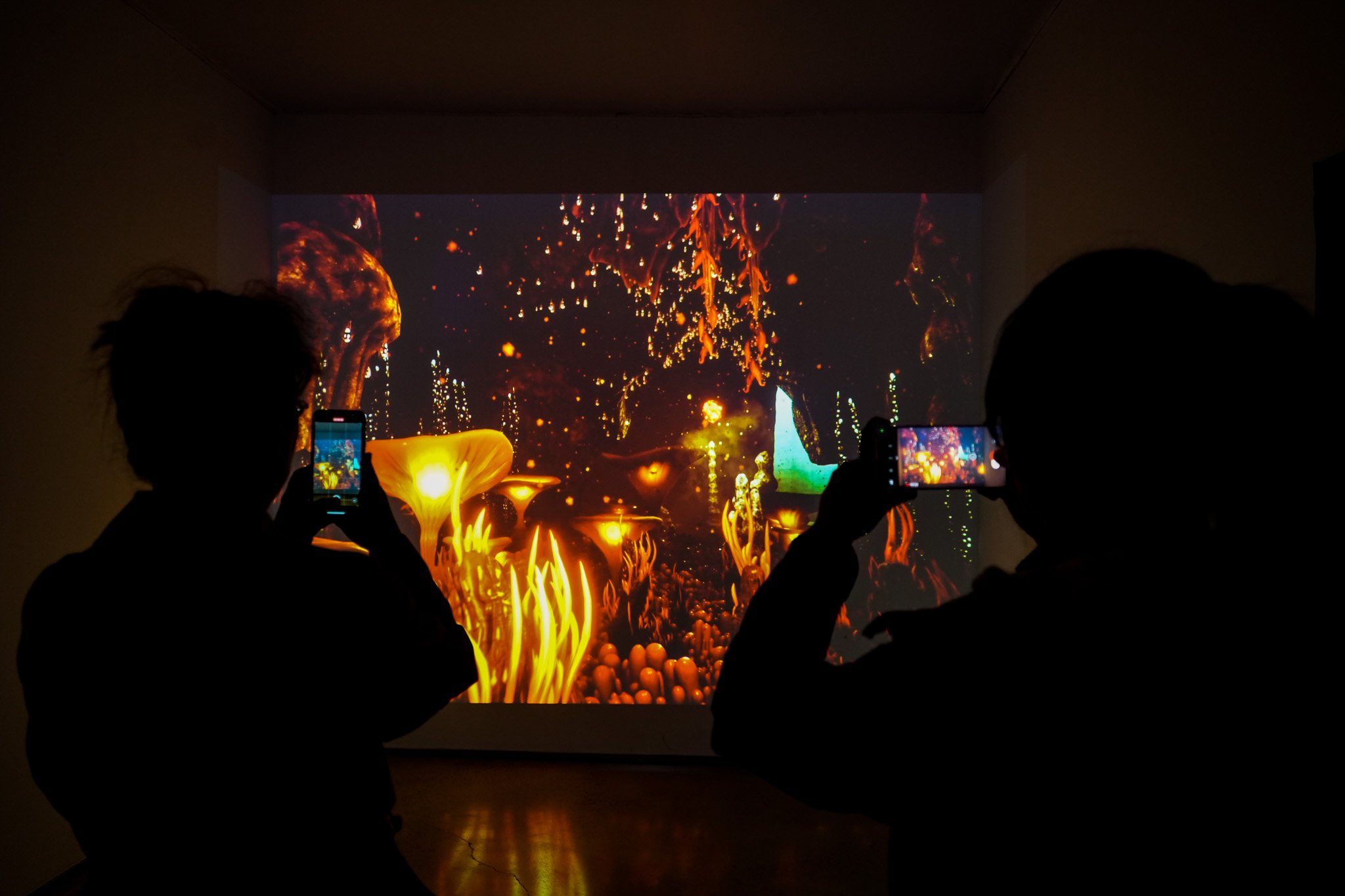
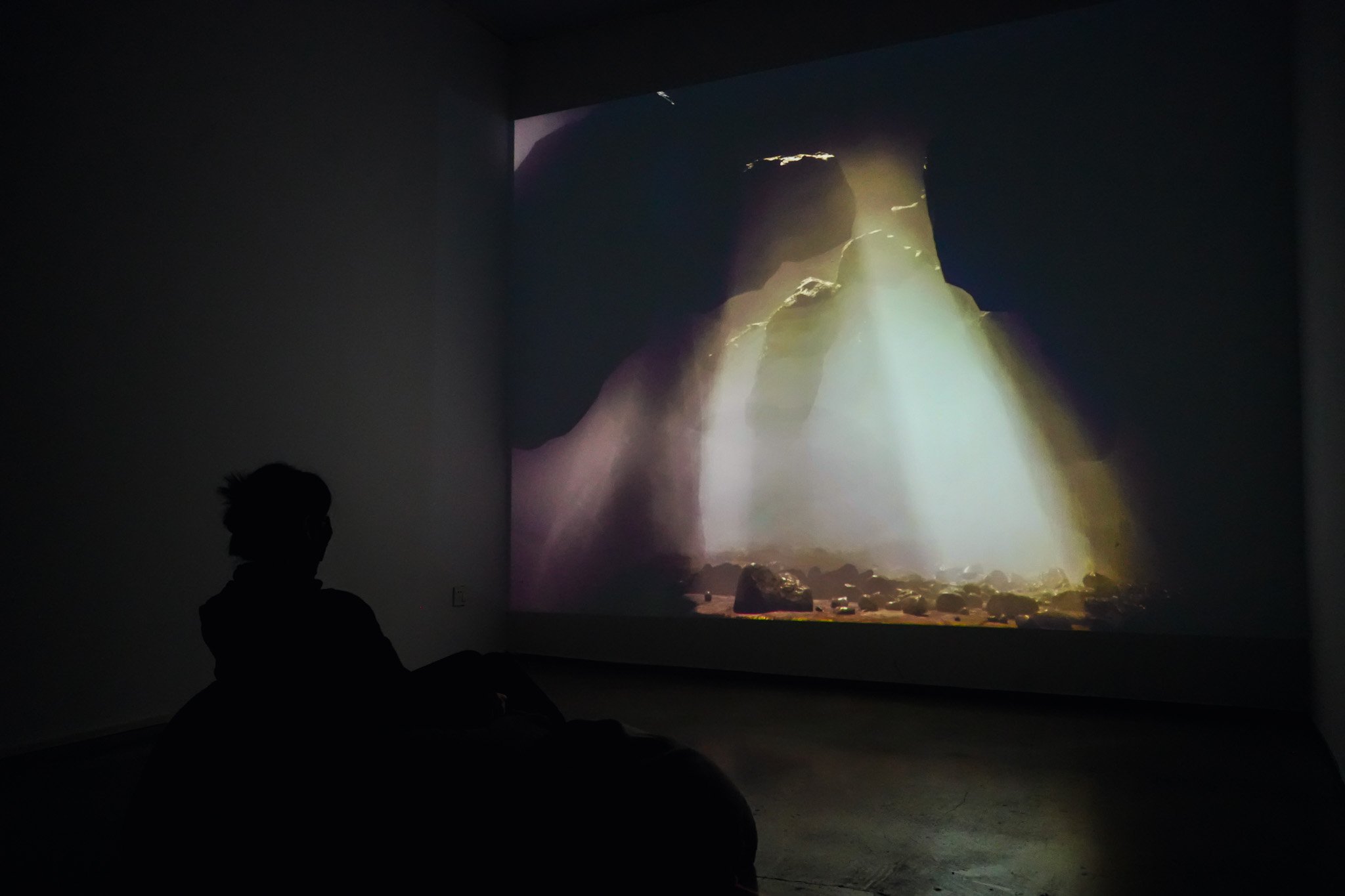
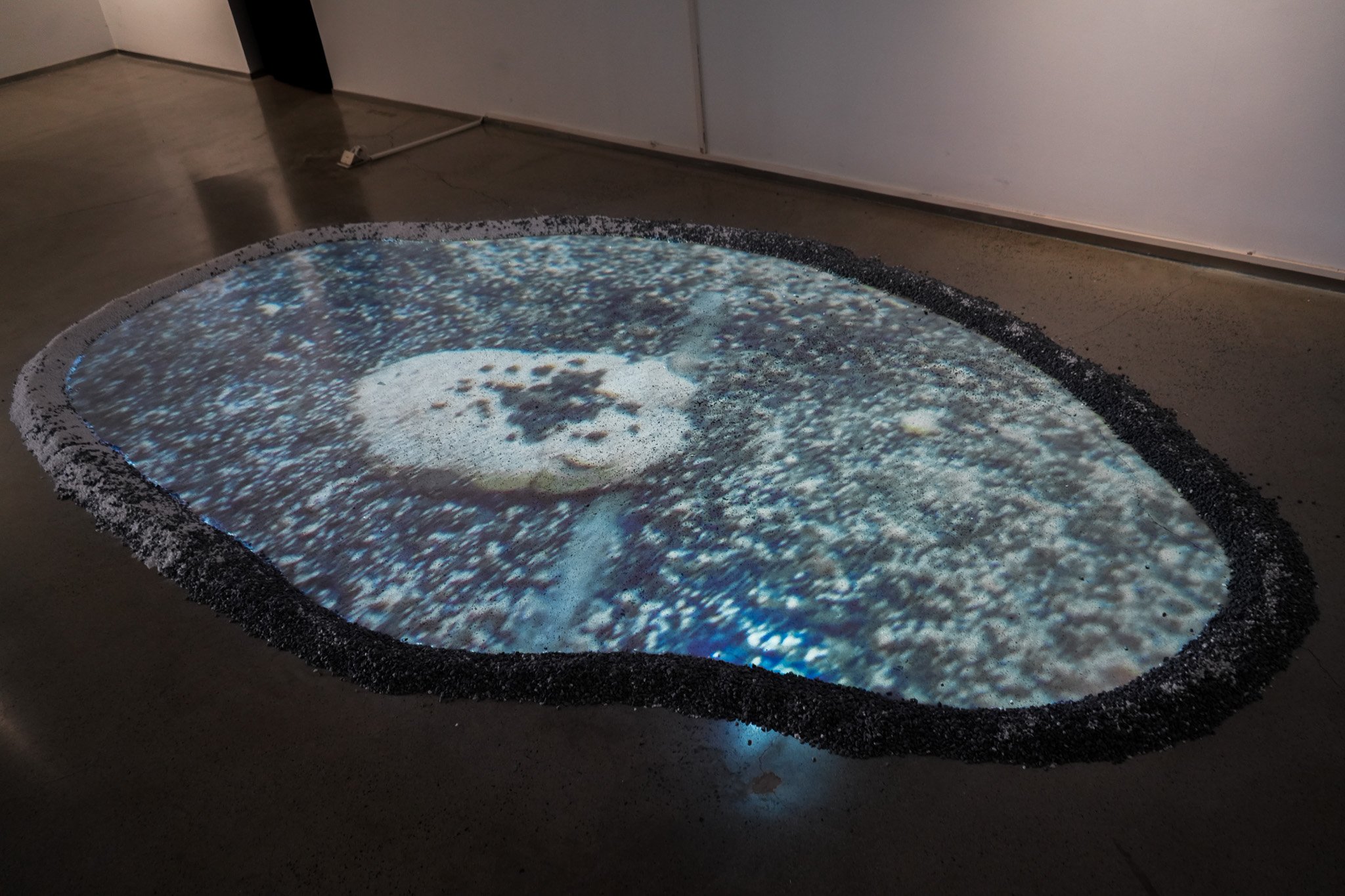
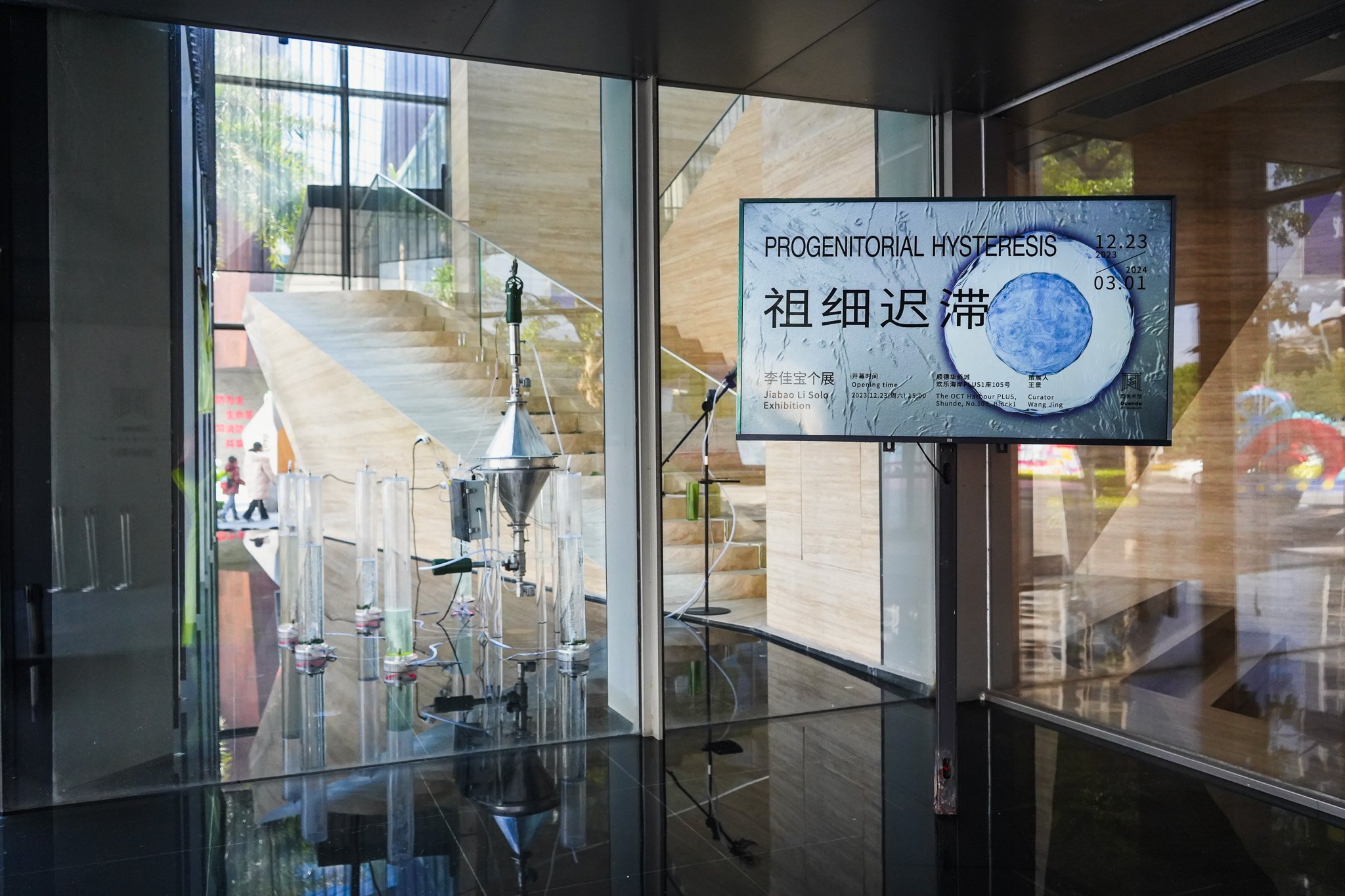
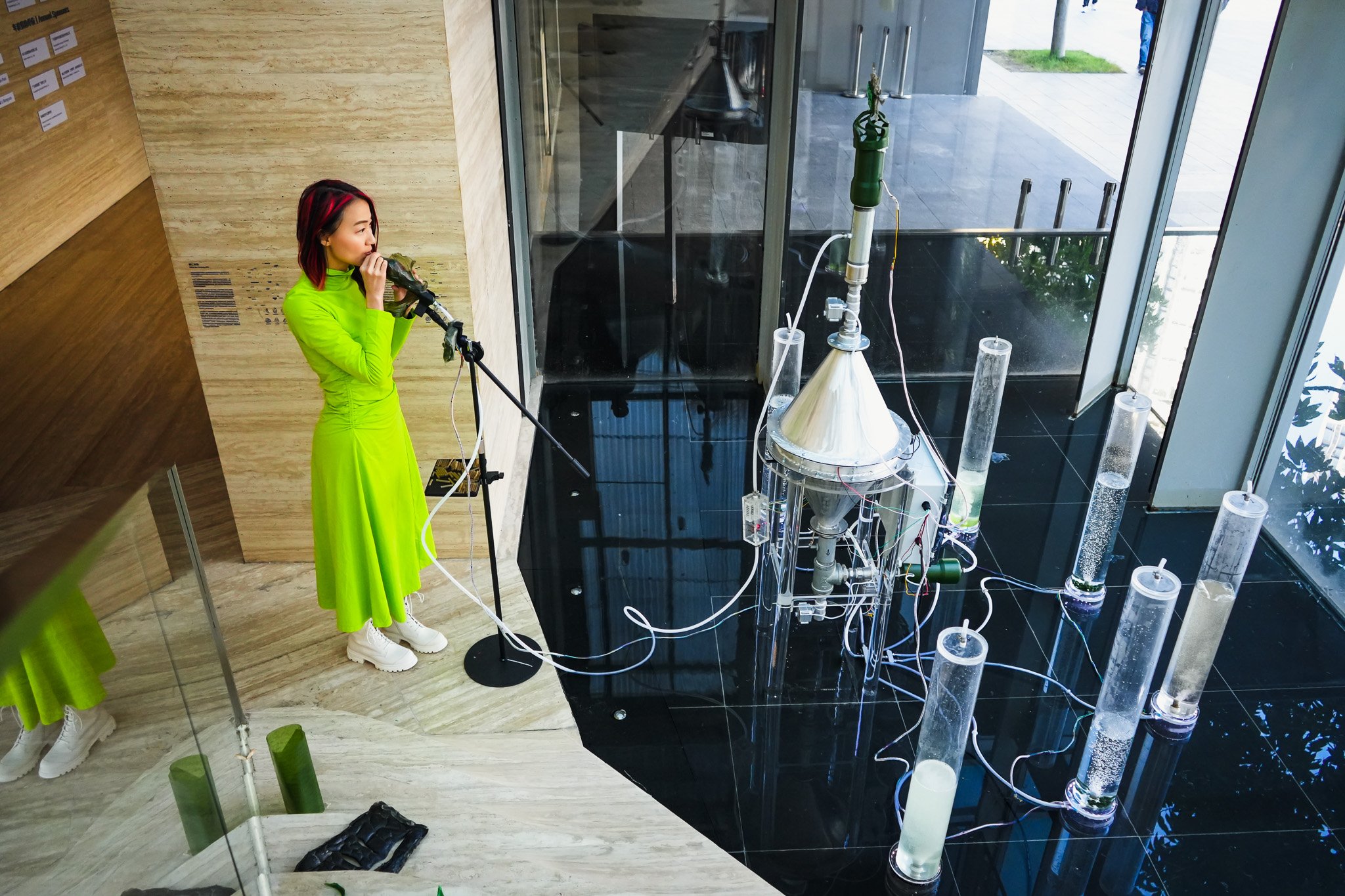
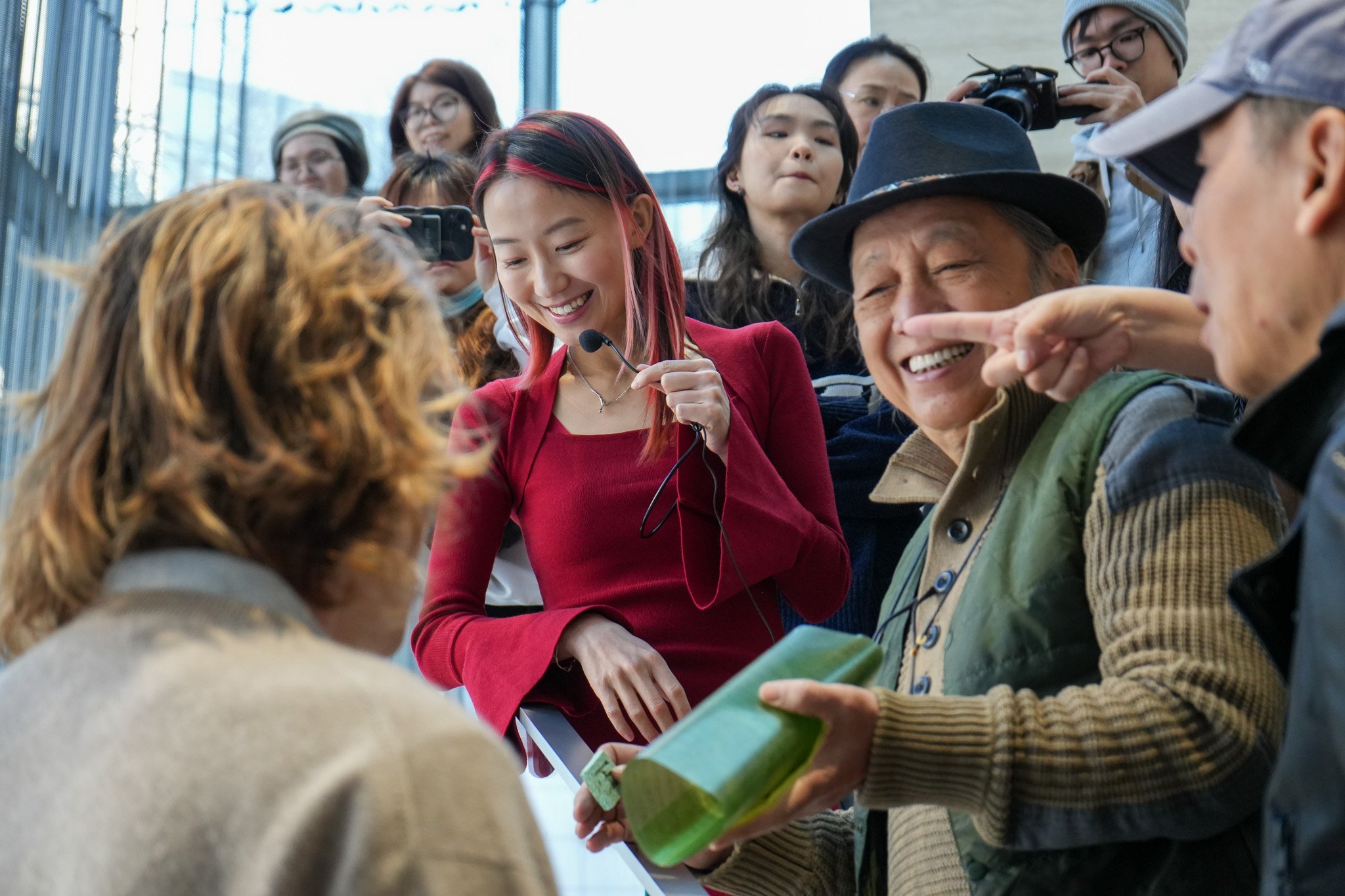
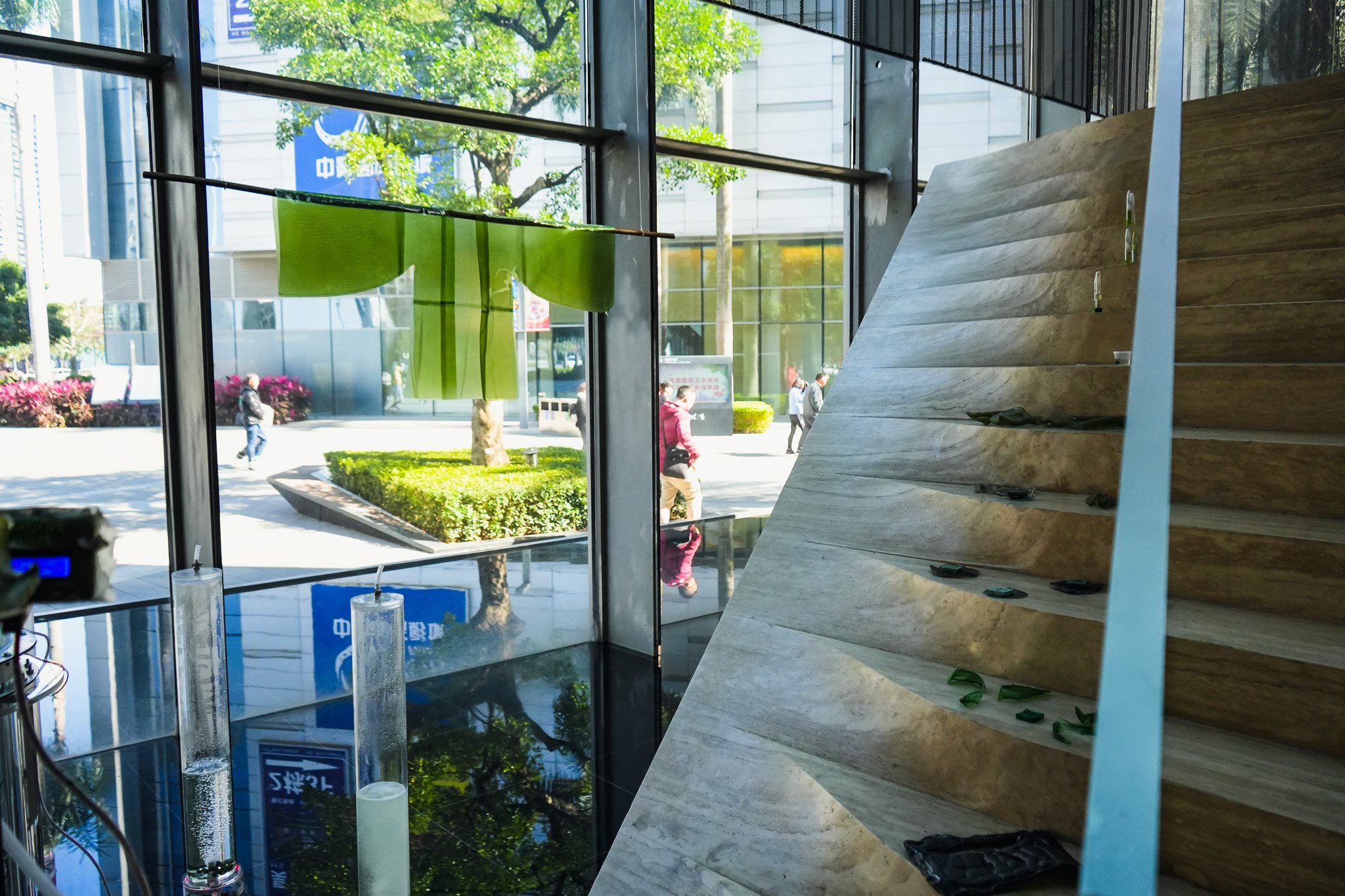
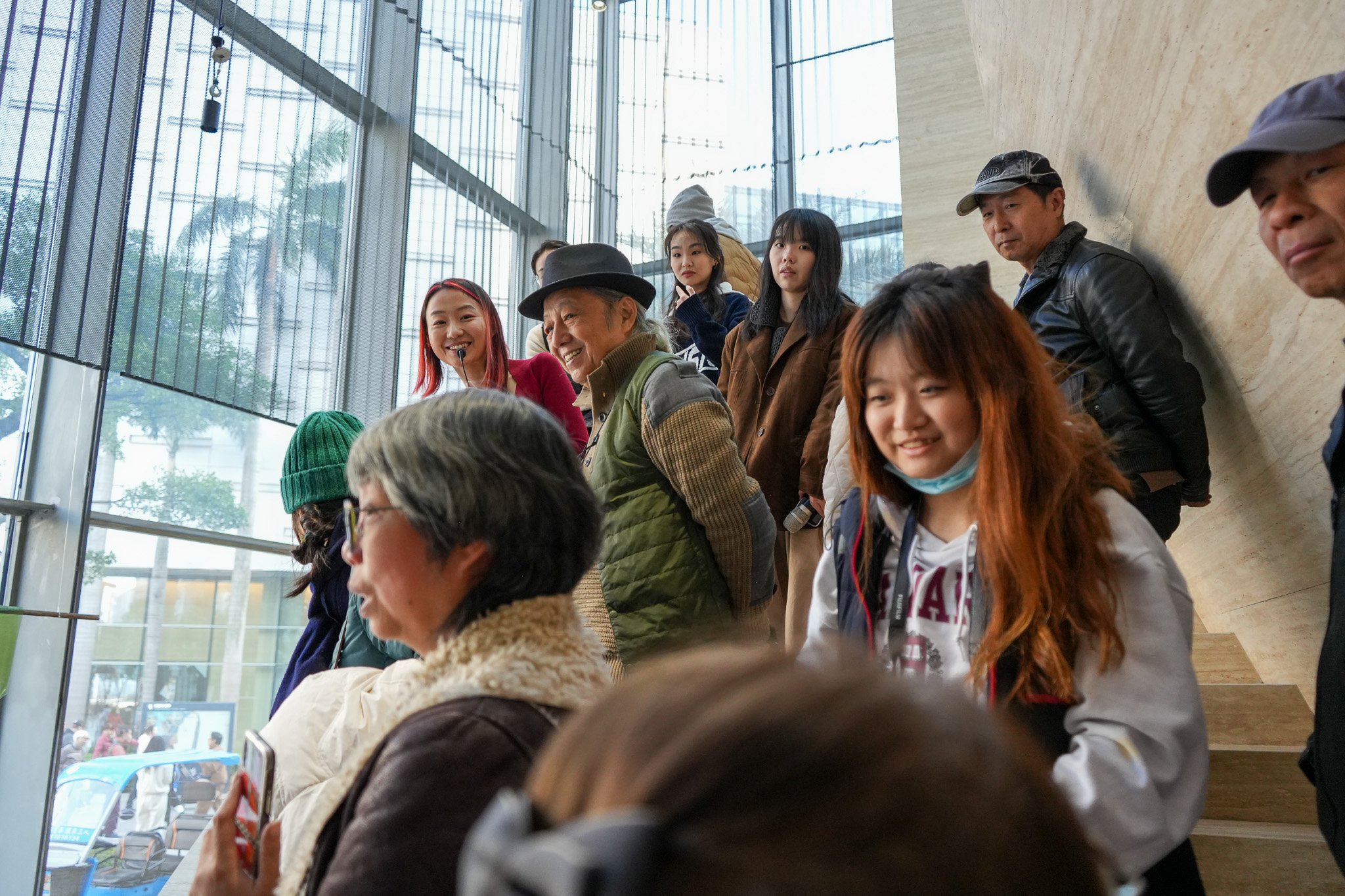
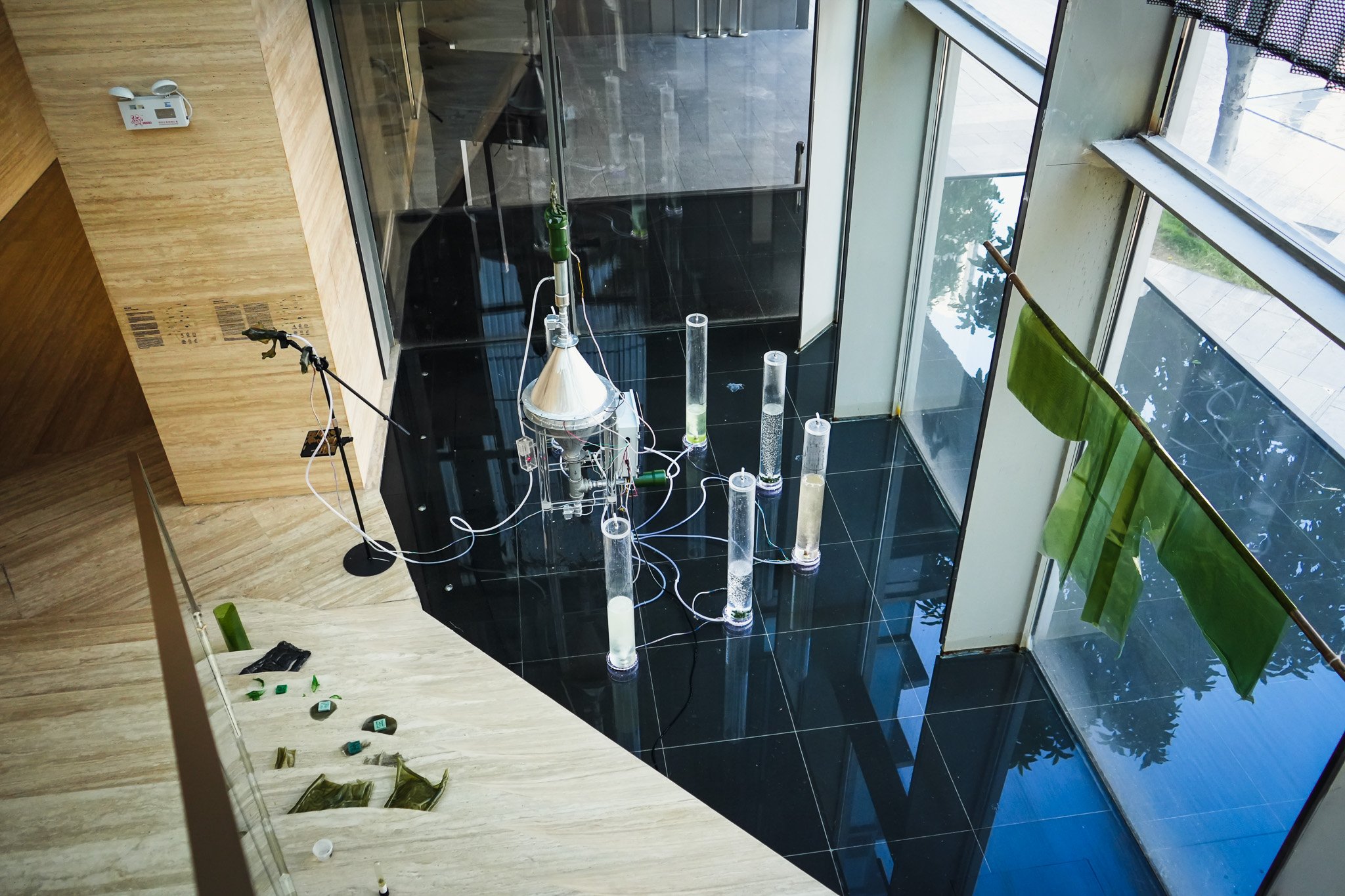

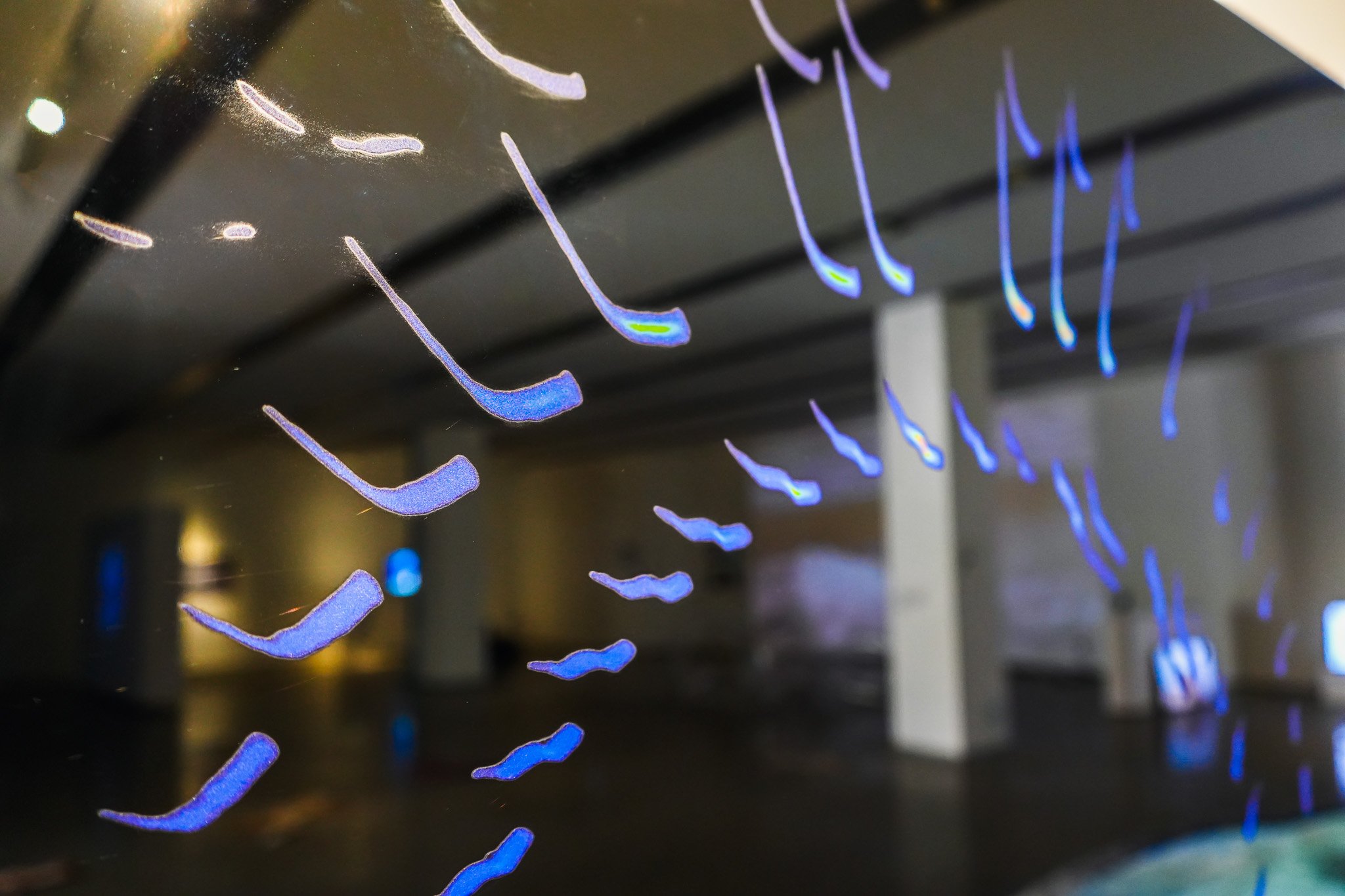
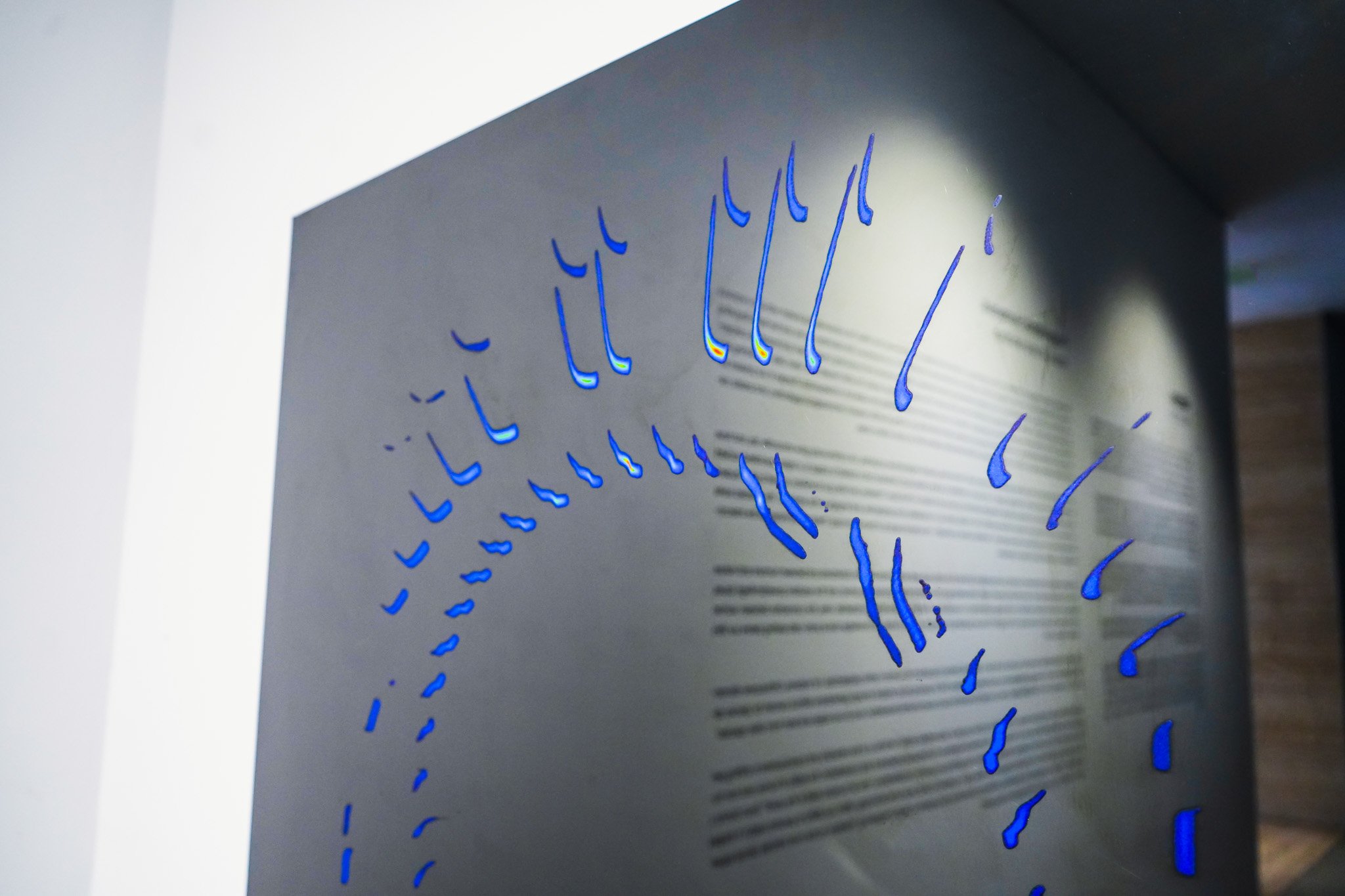
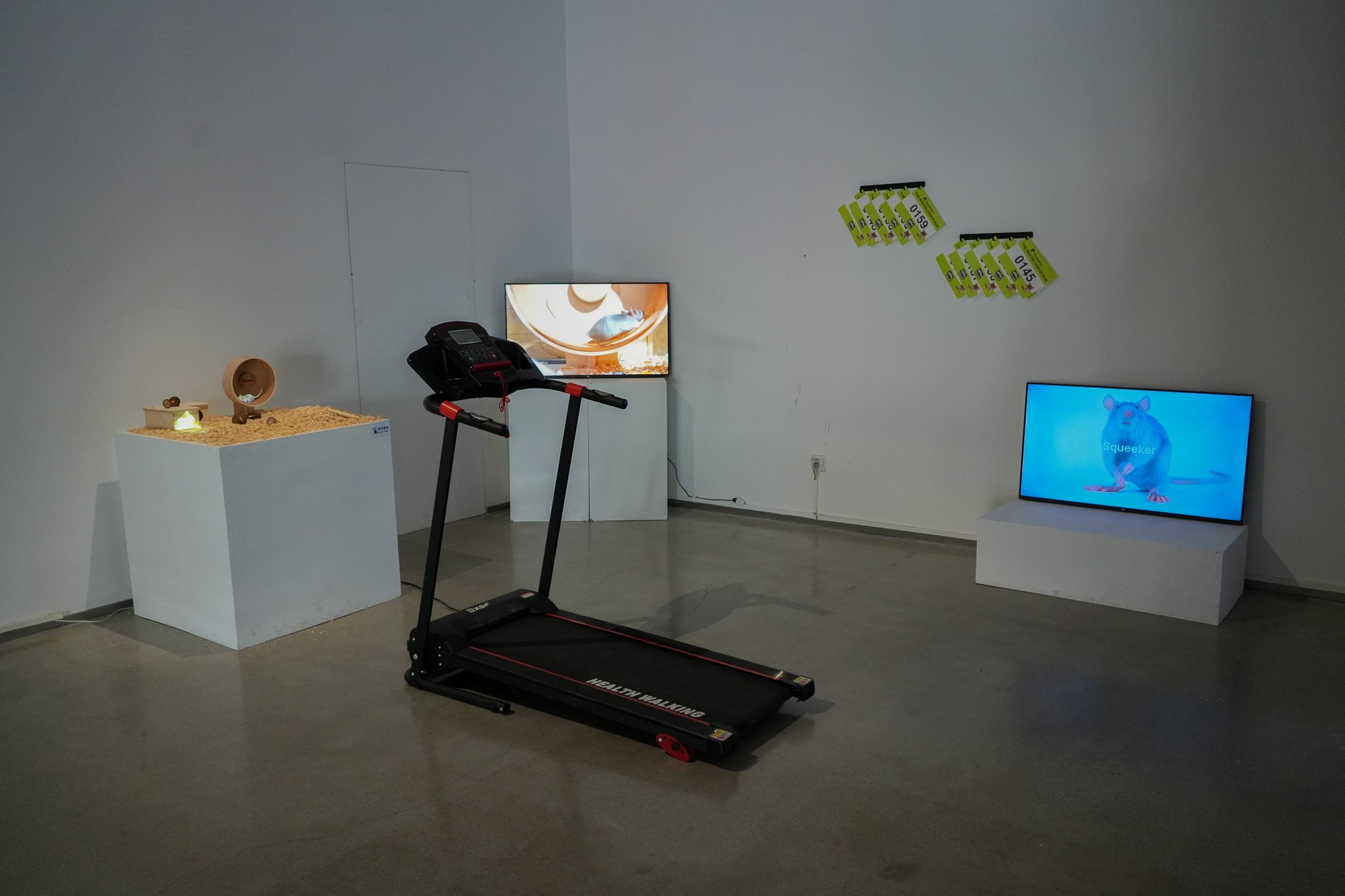
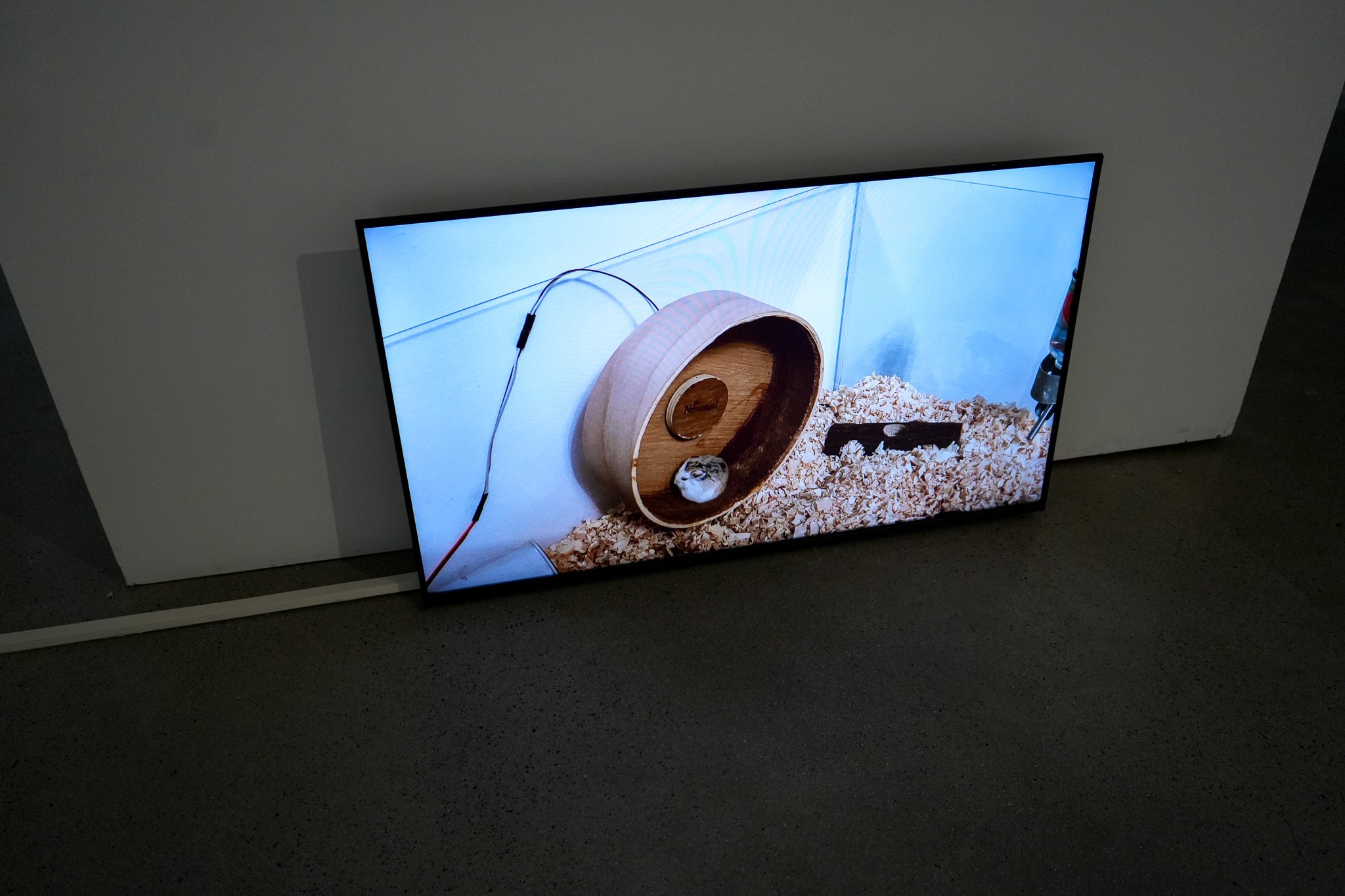
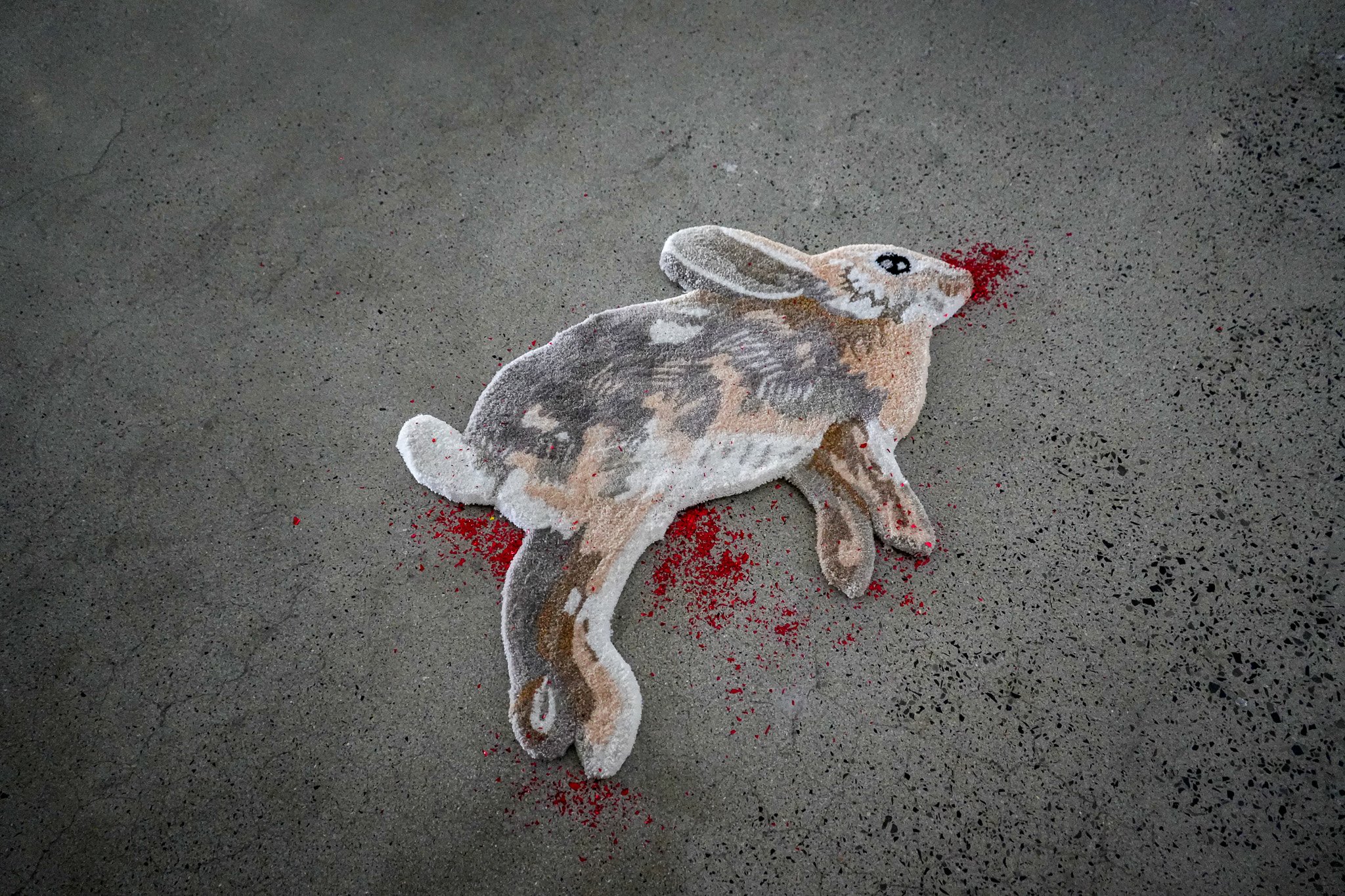
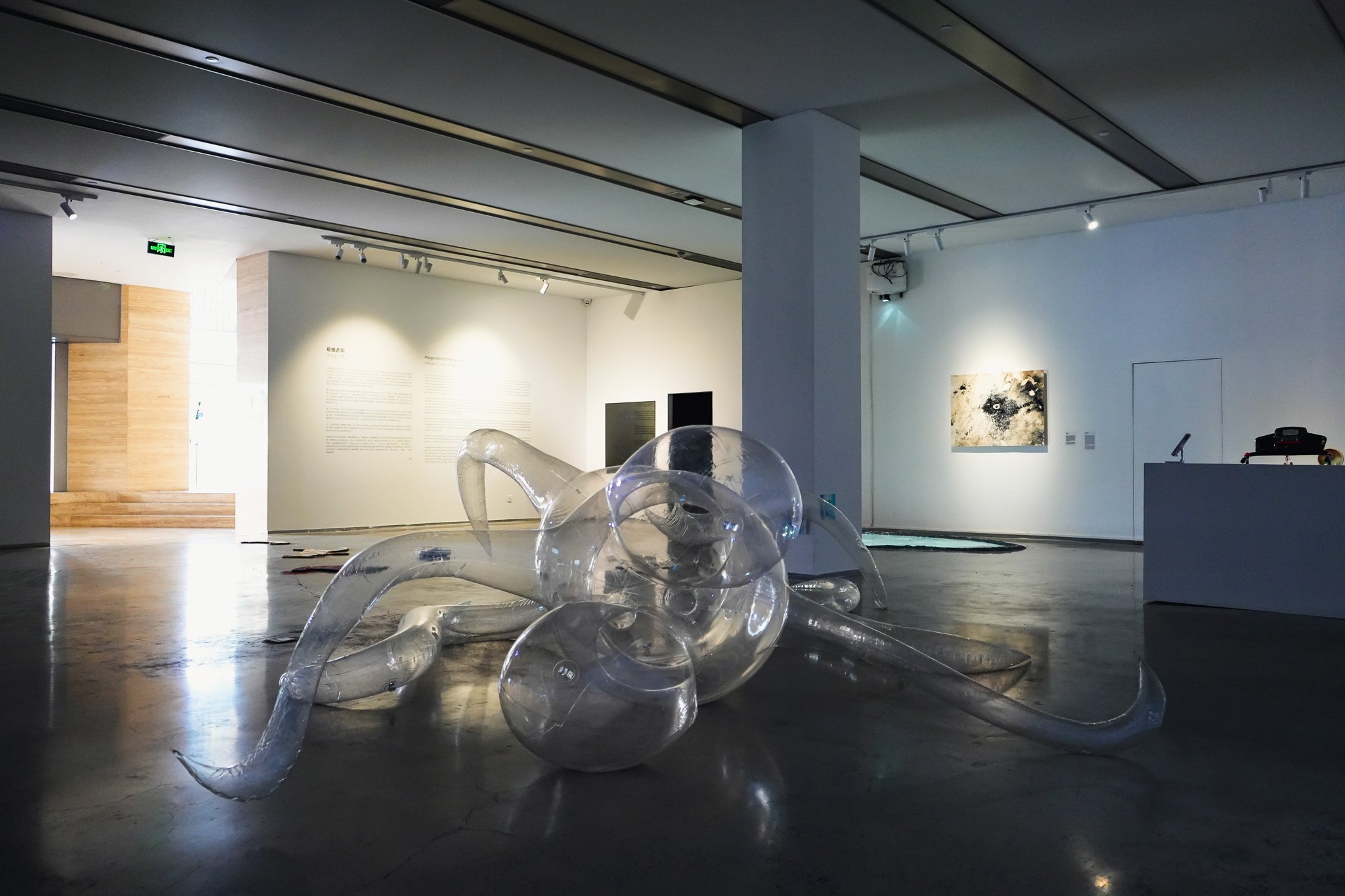
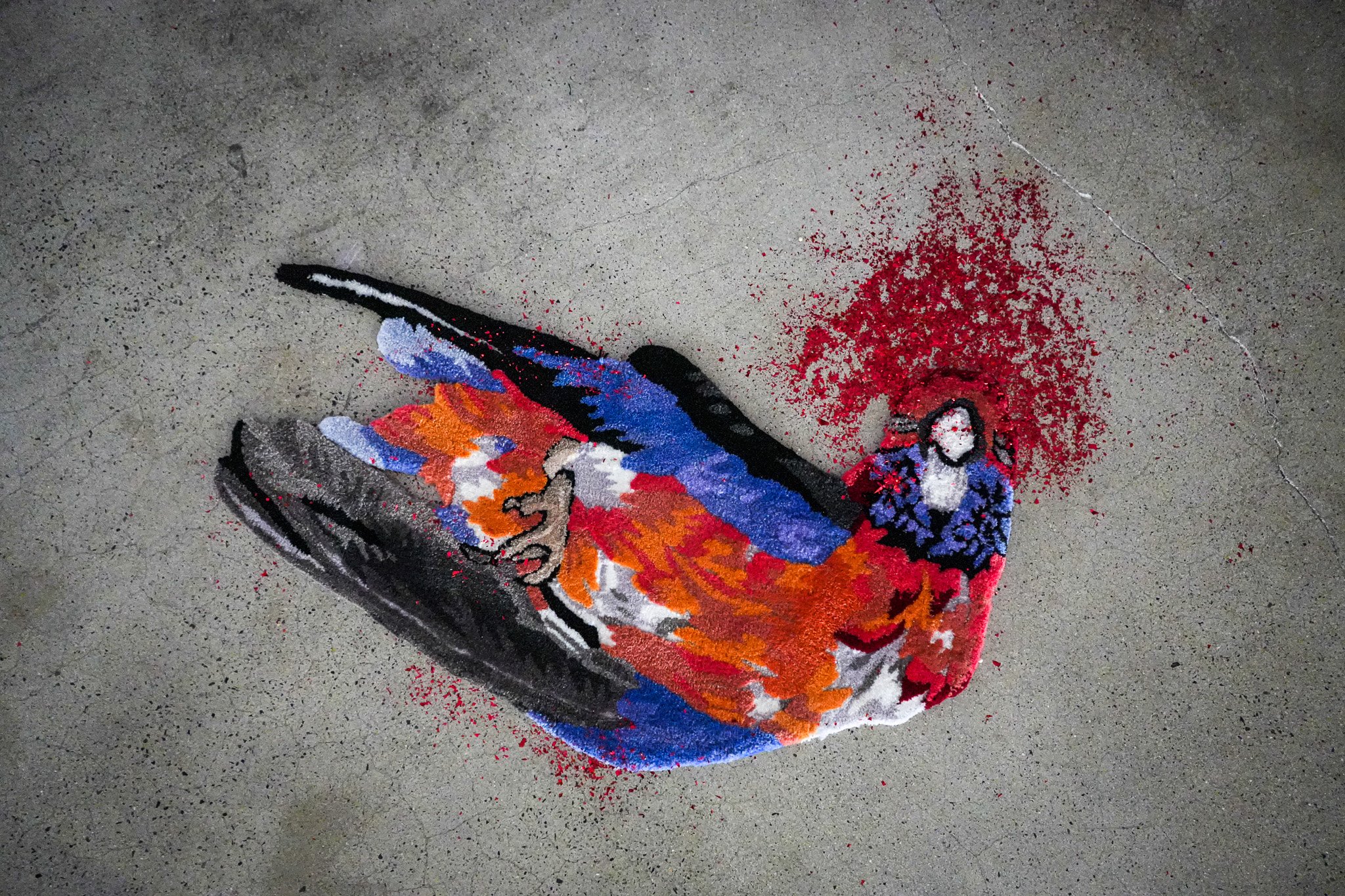
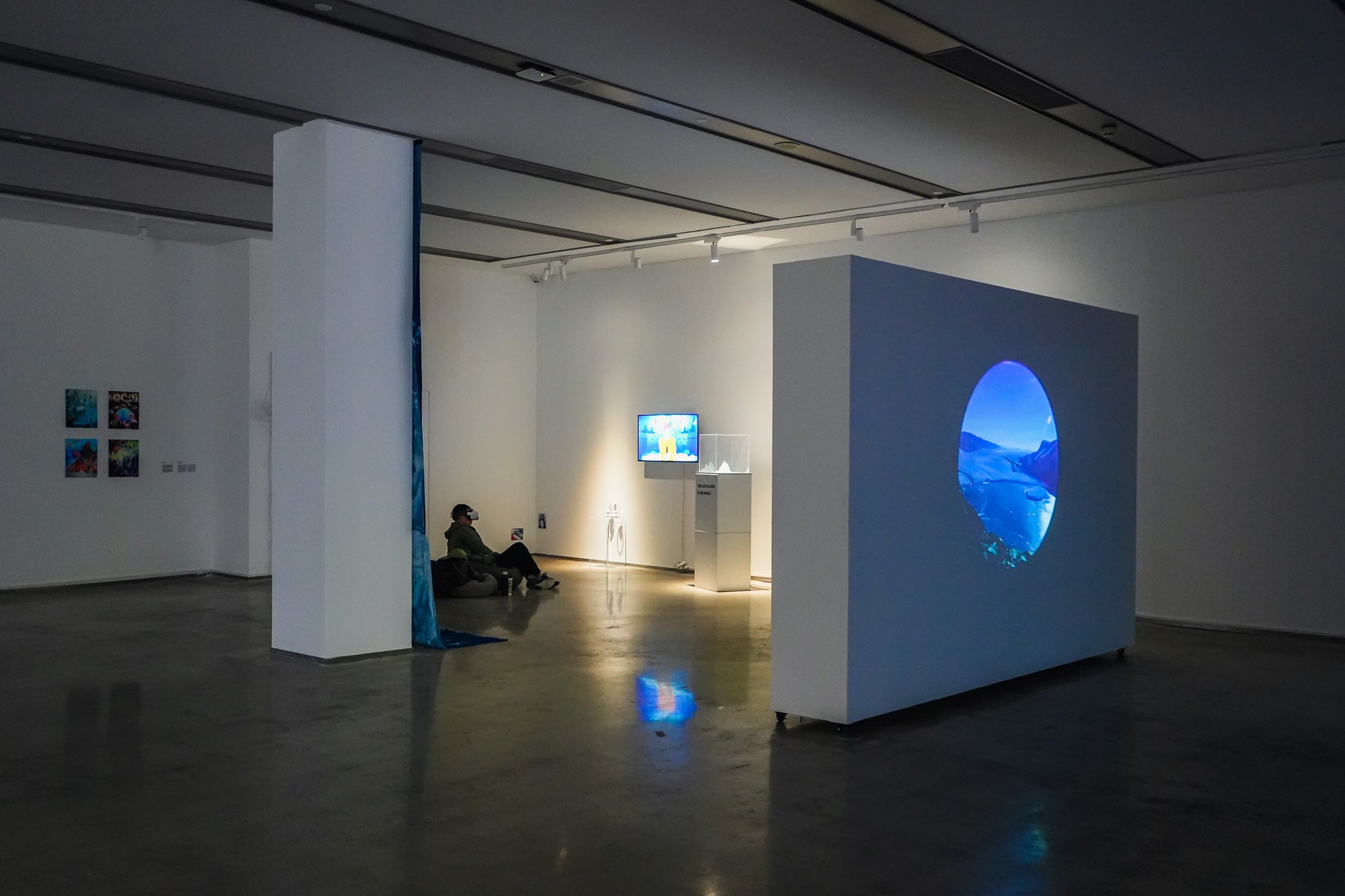
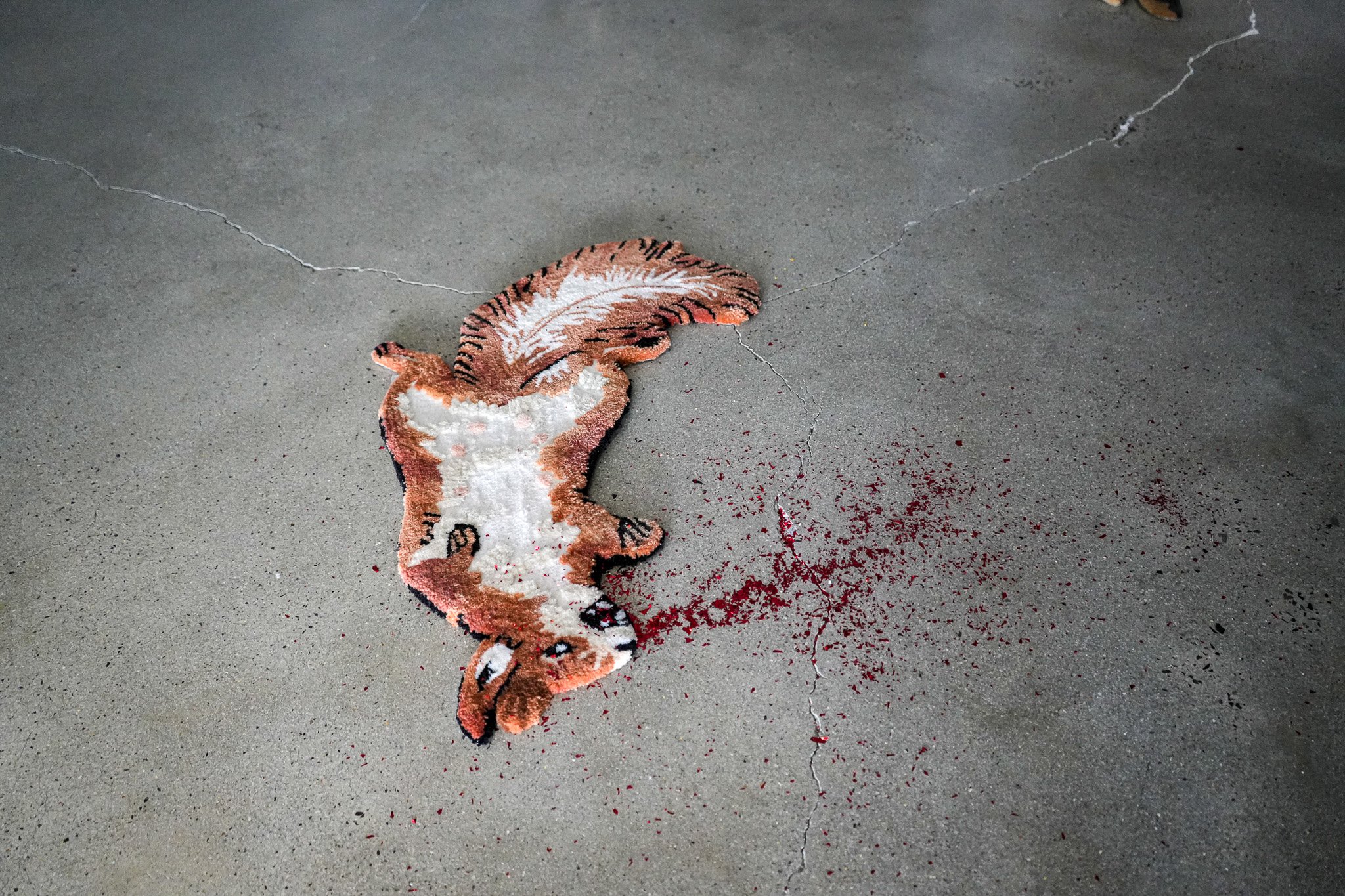
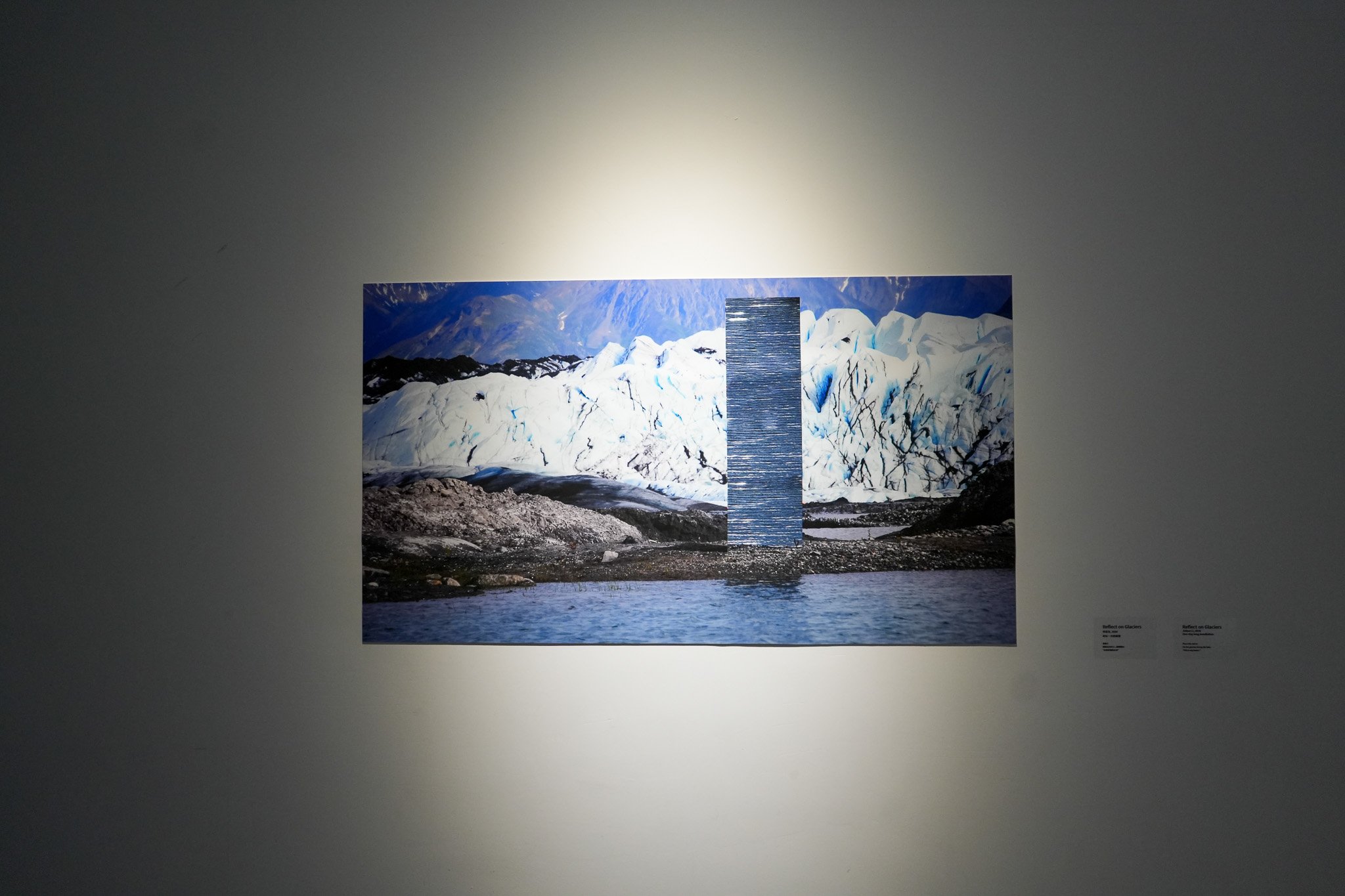
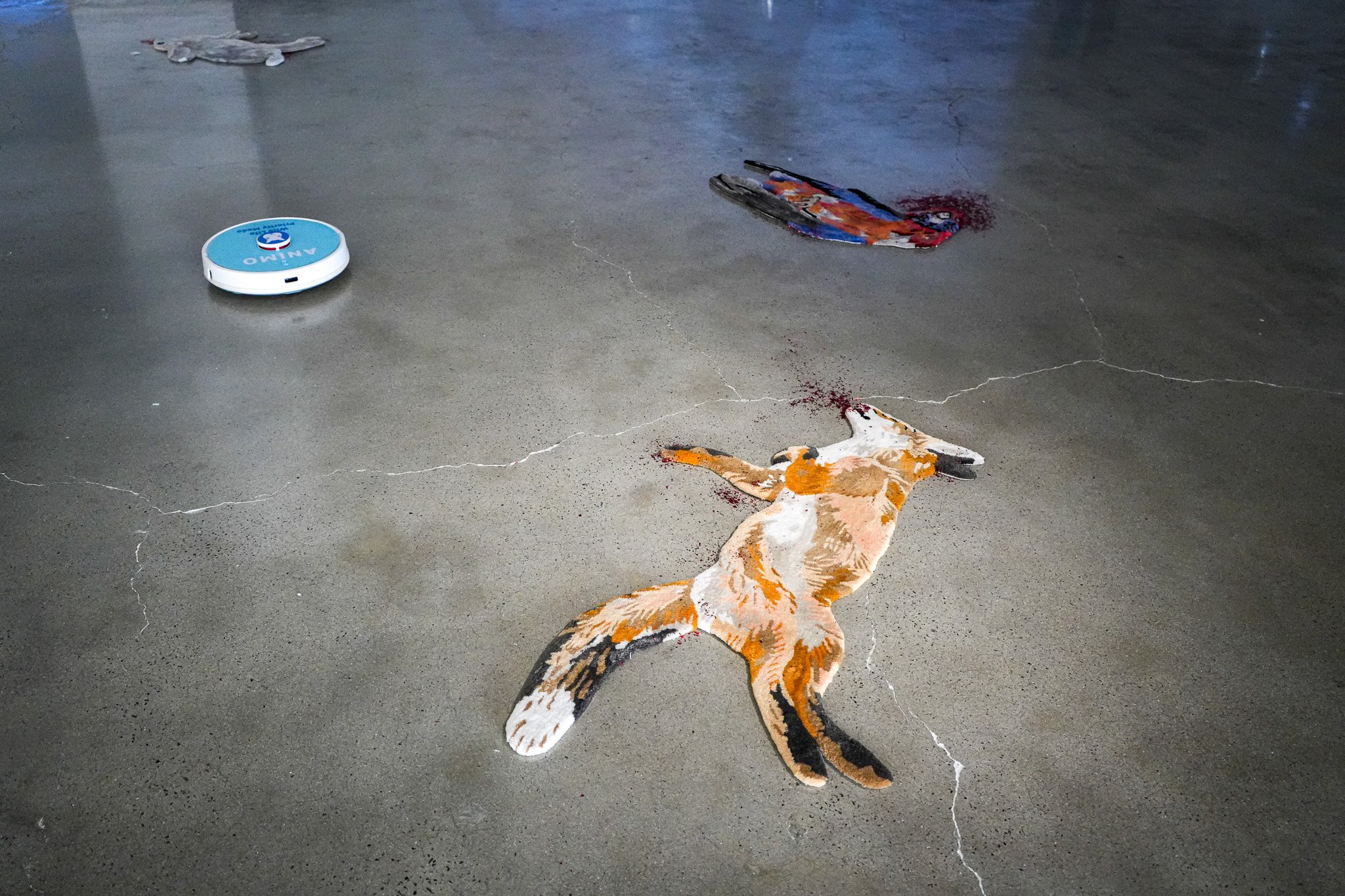
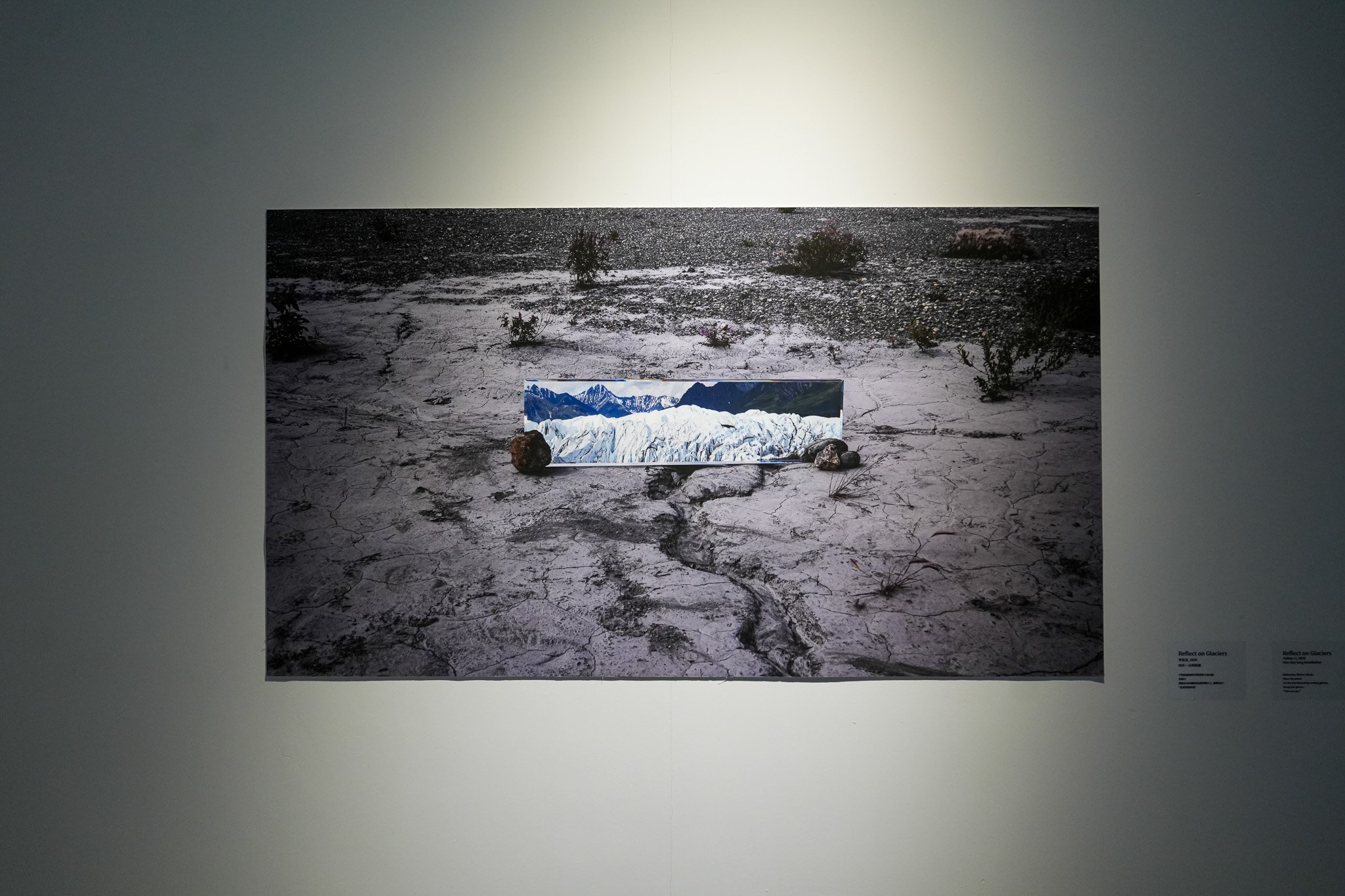
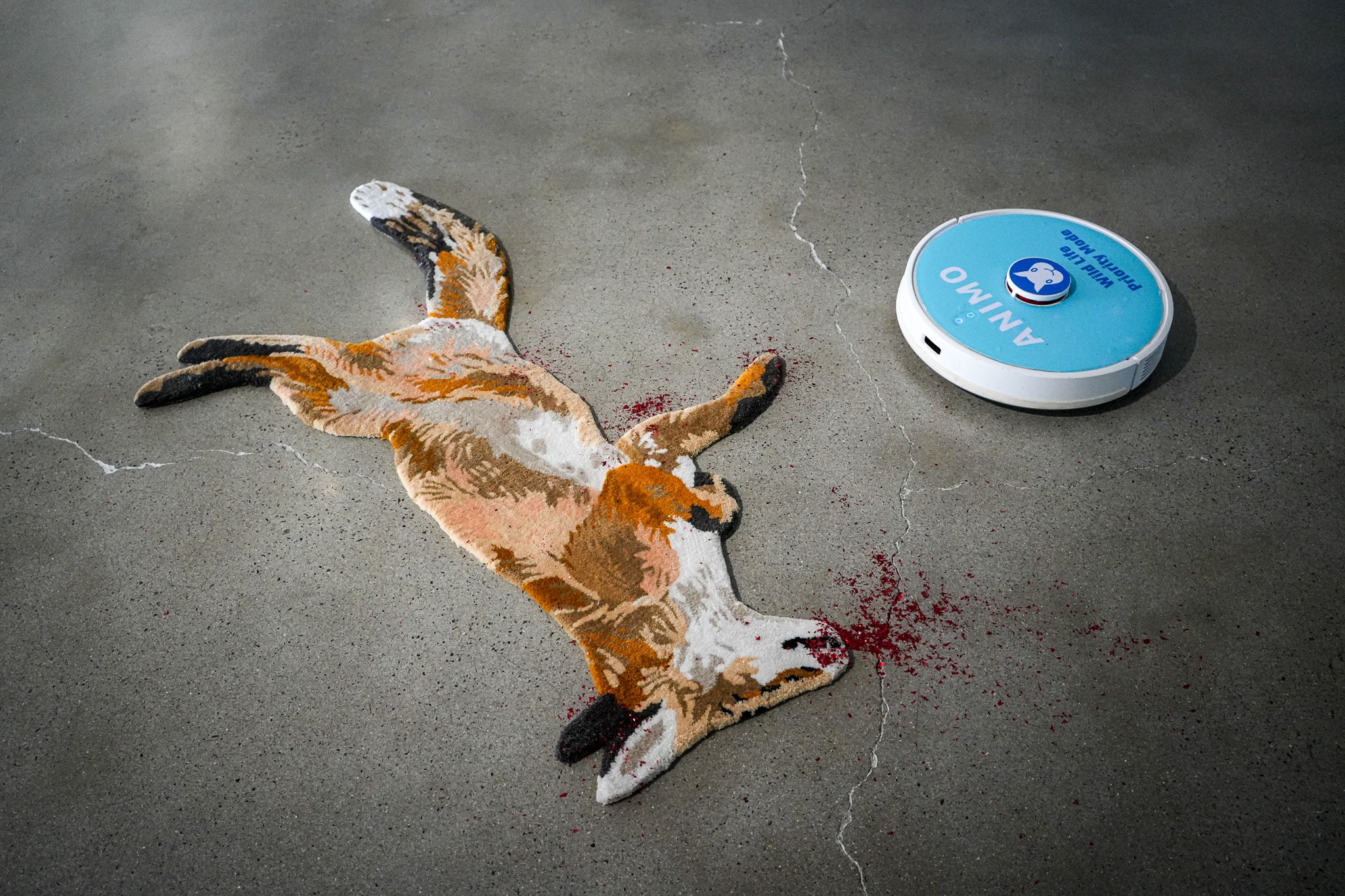
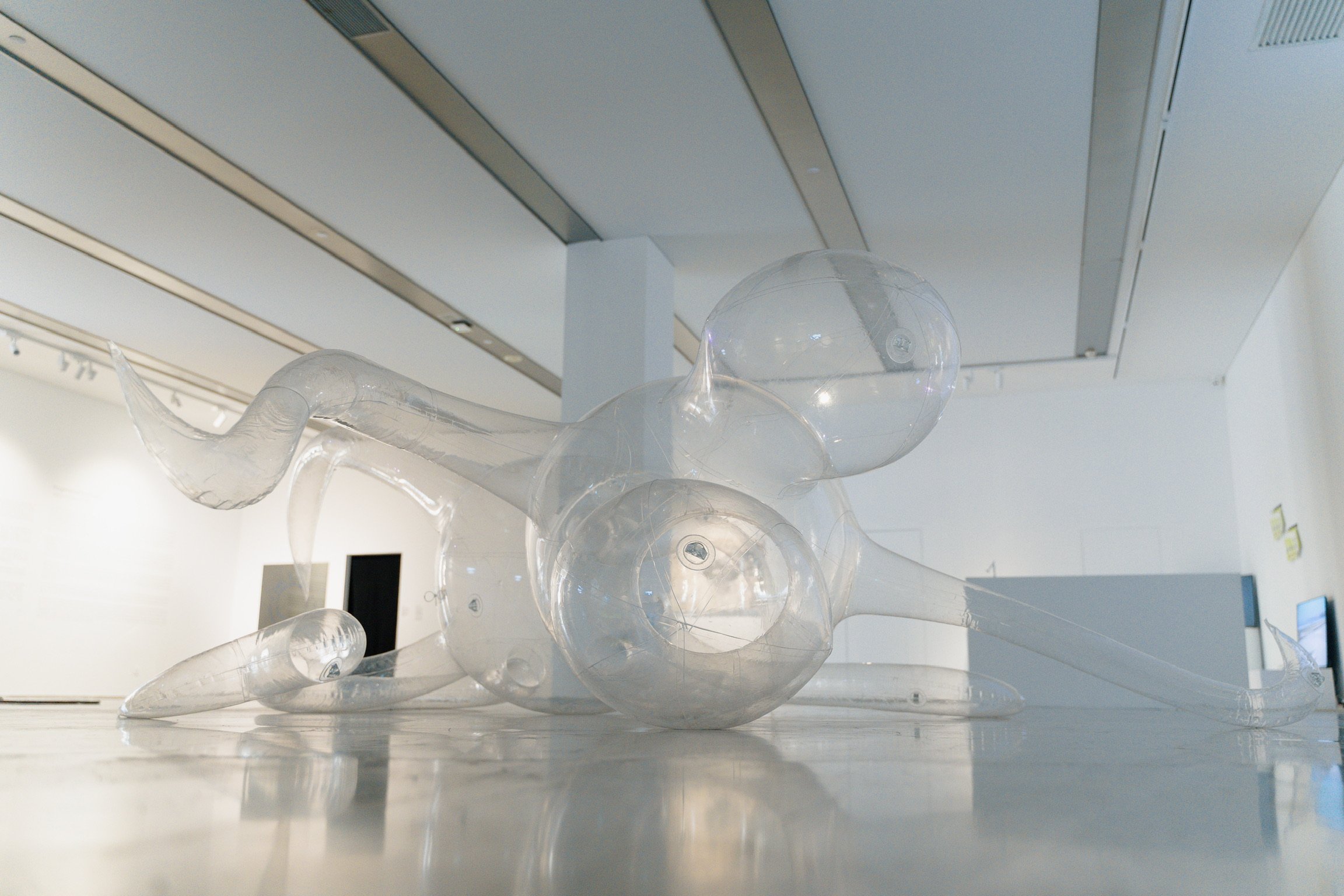
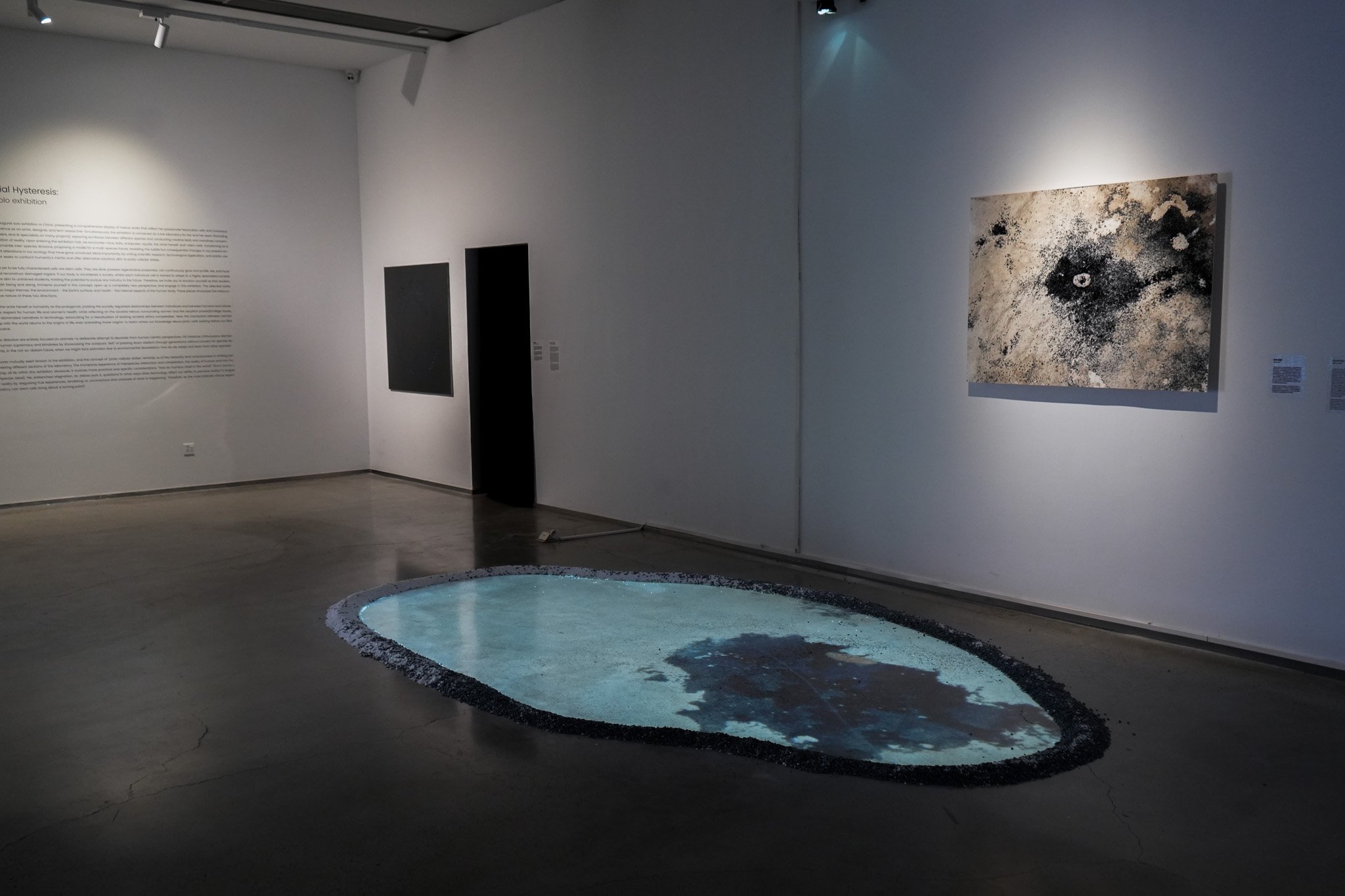
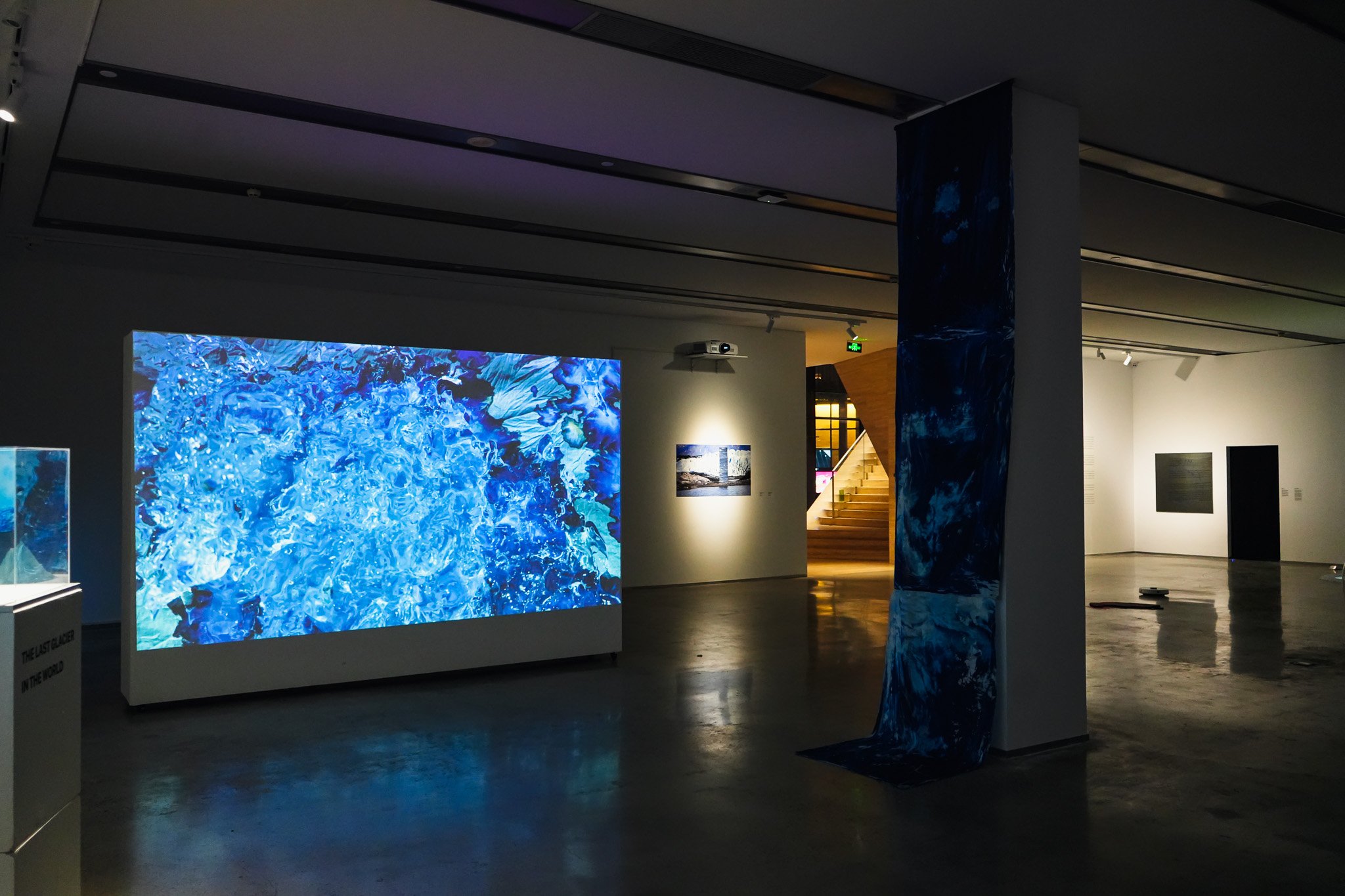
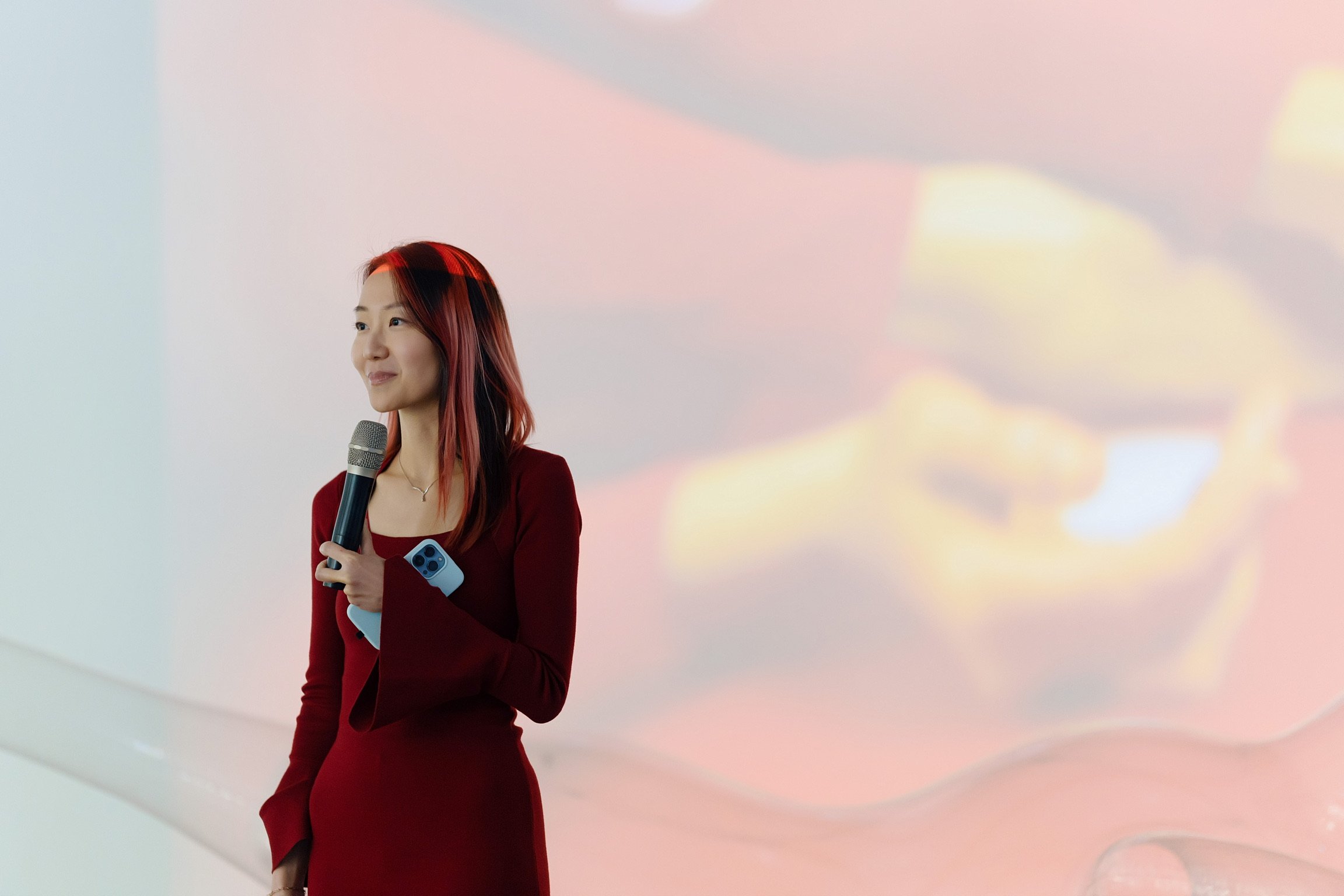
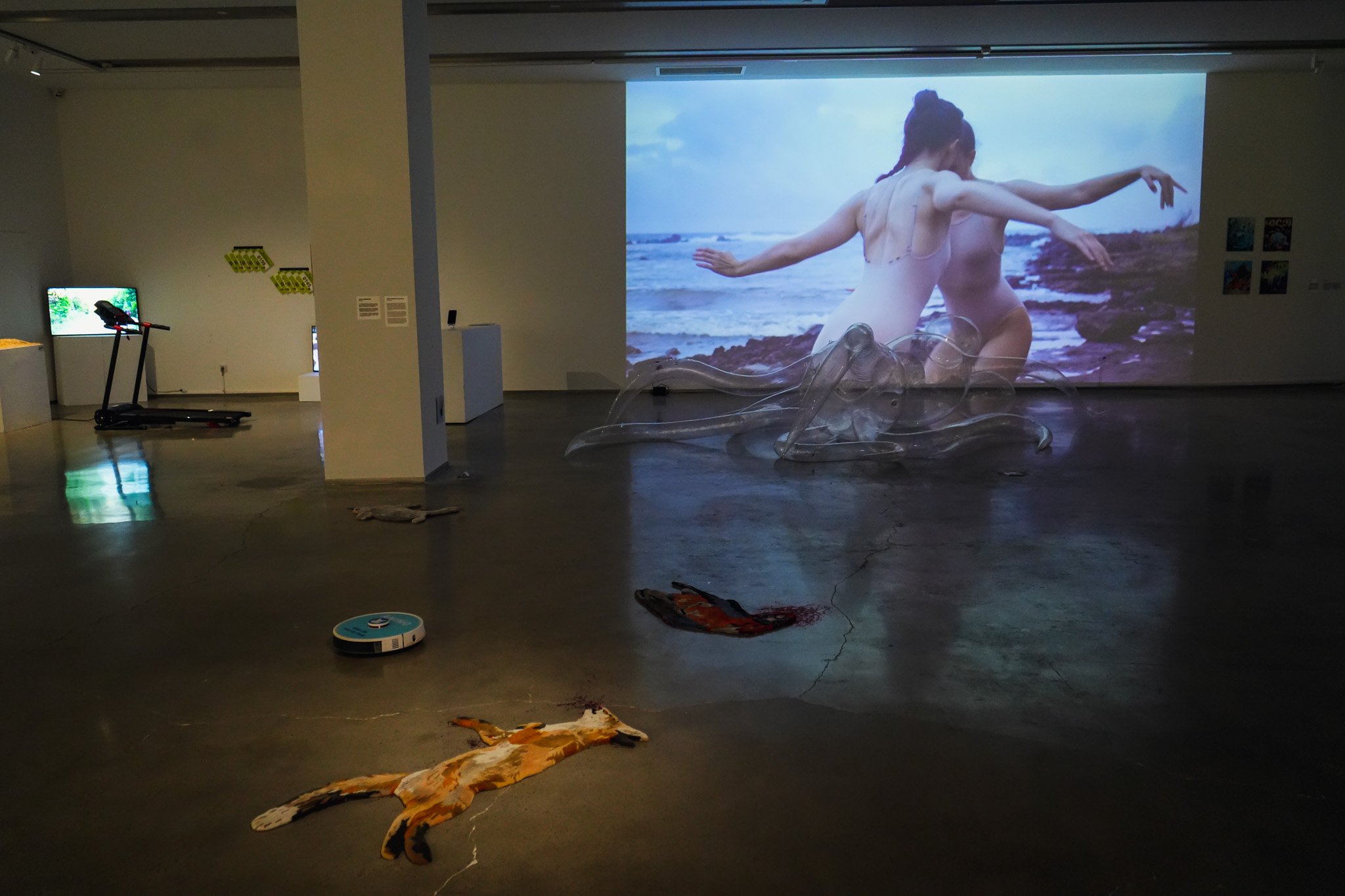
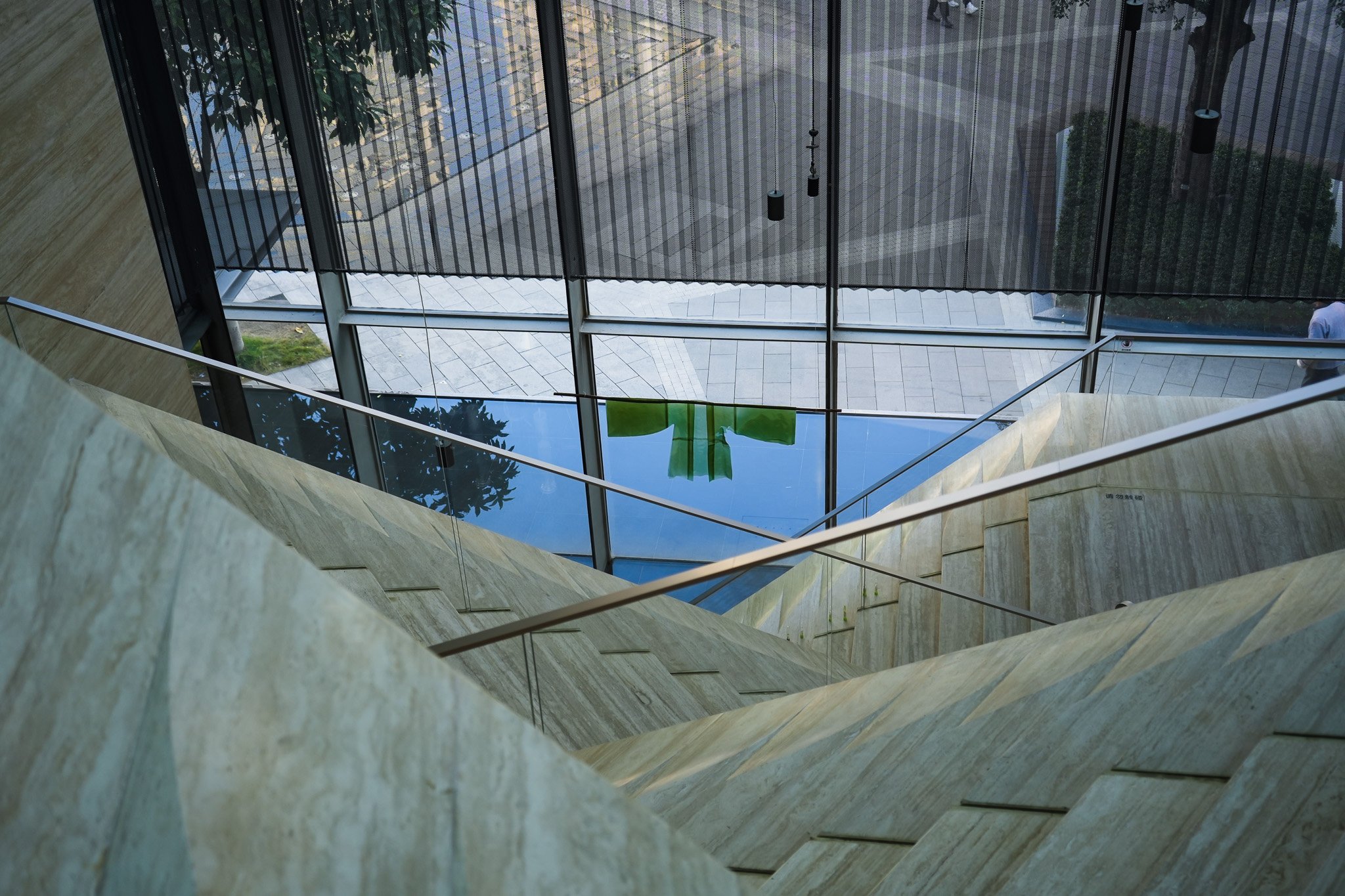
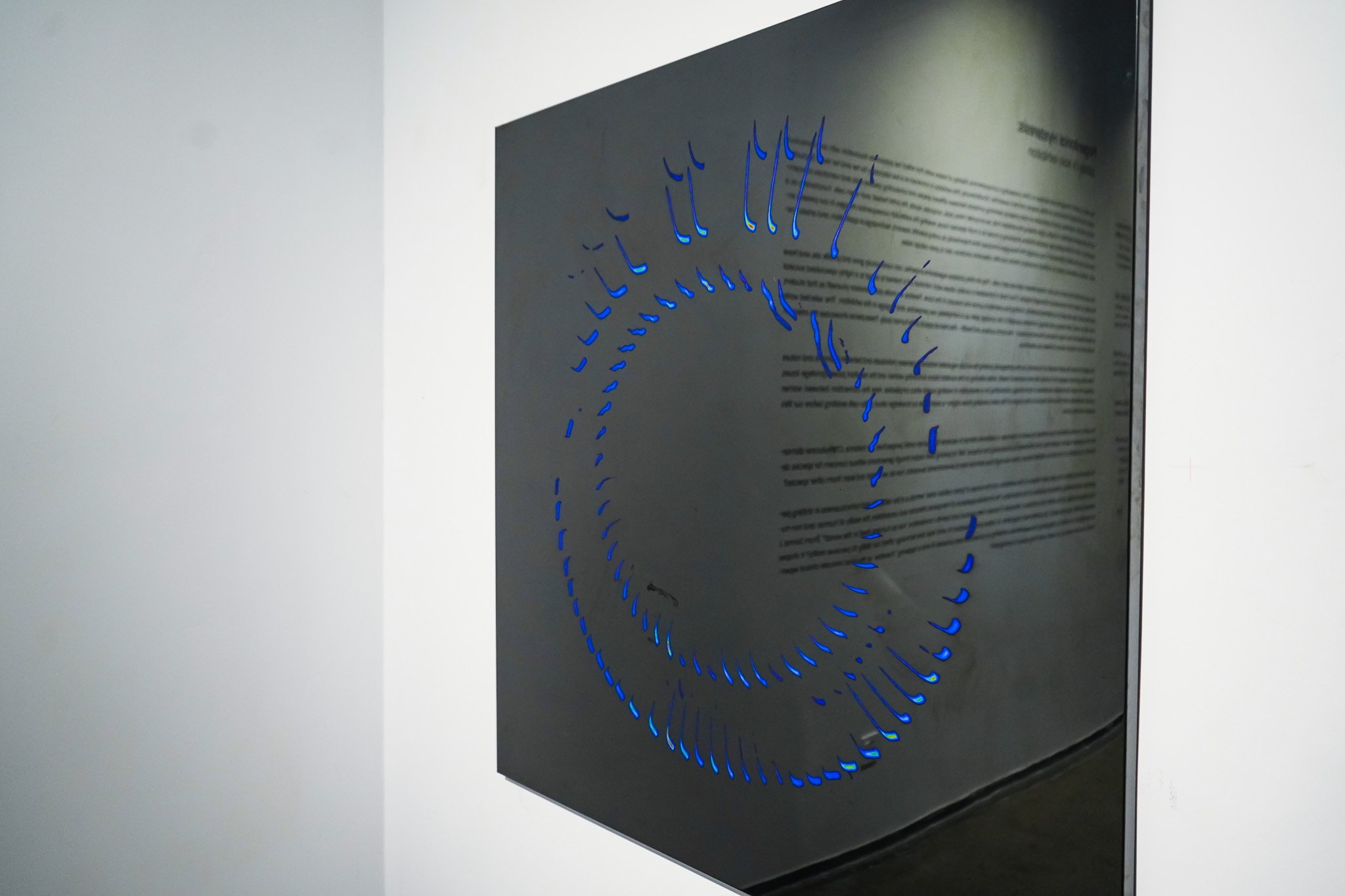
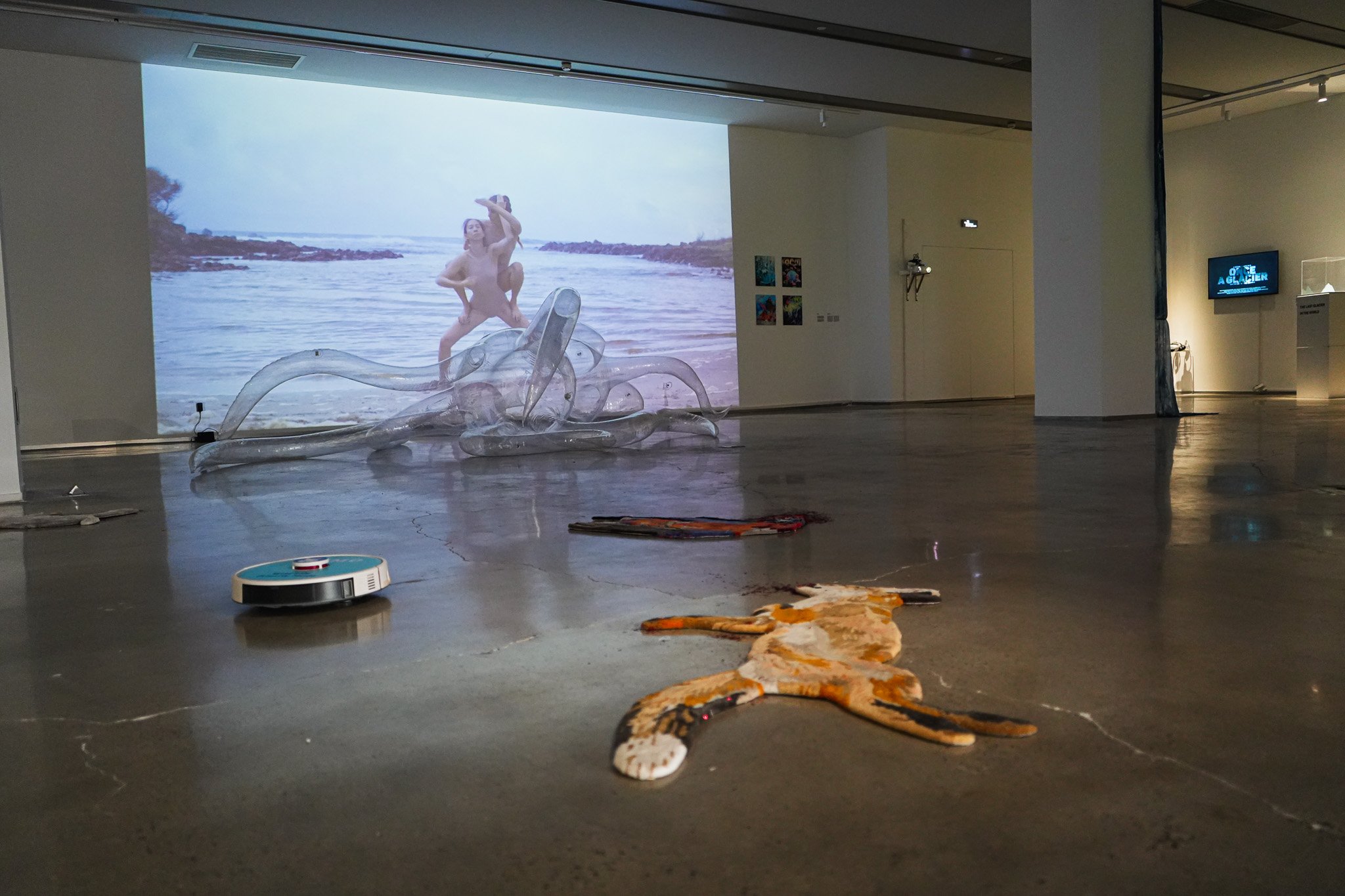
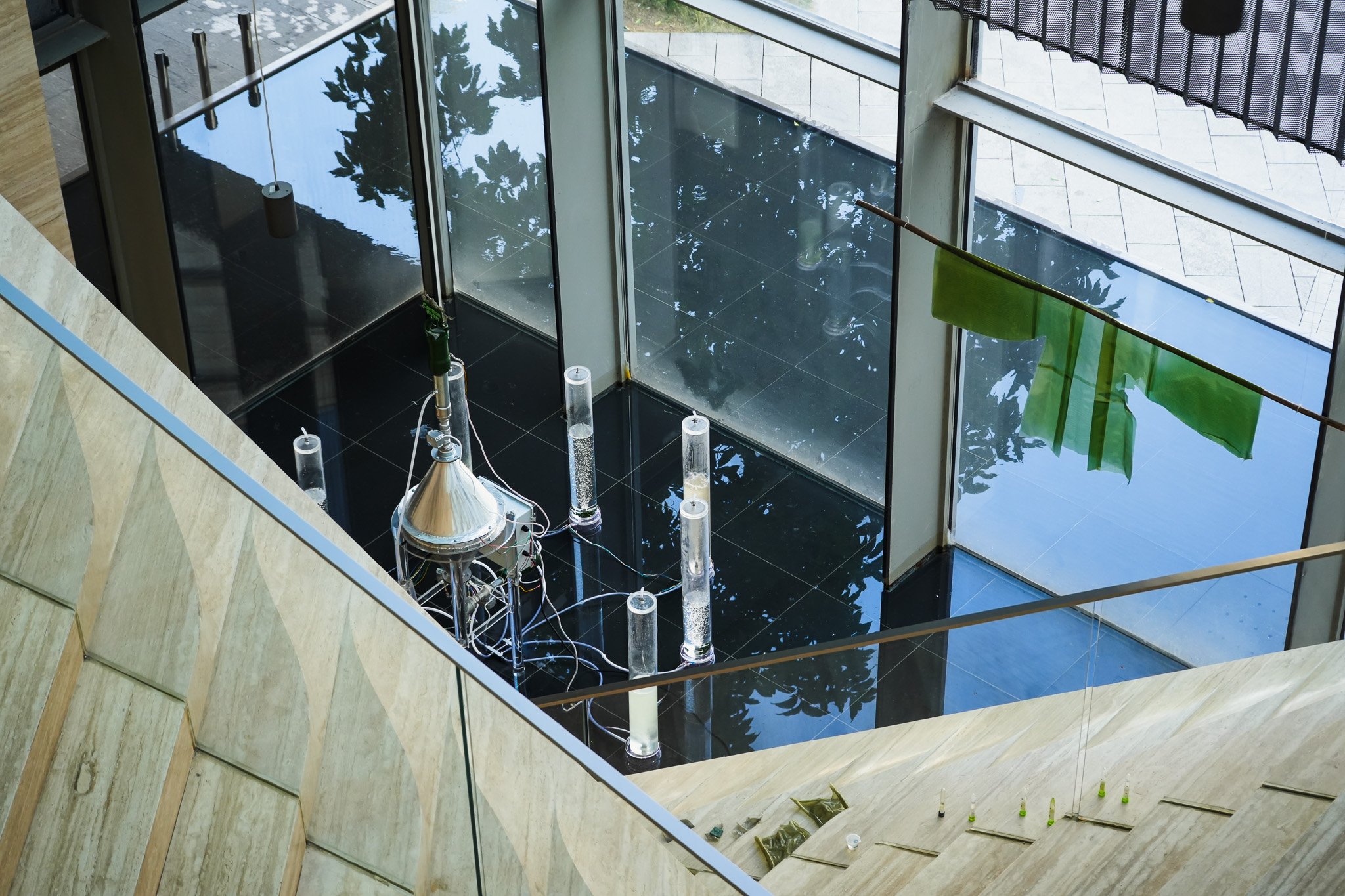
Second Floor

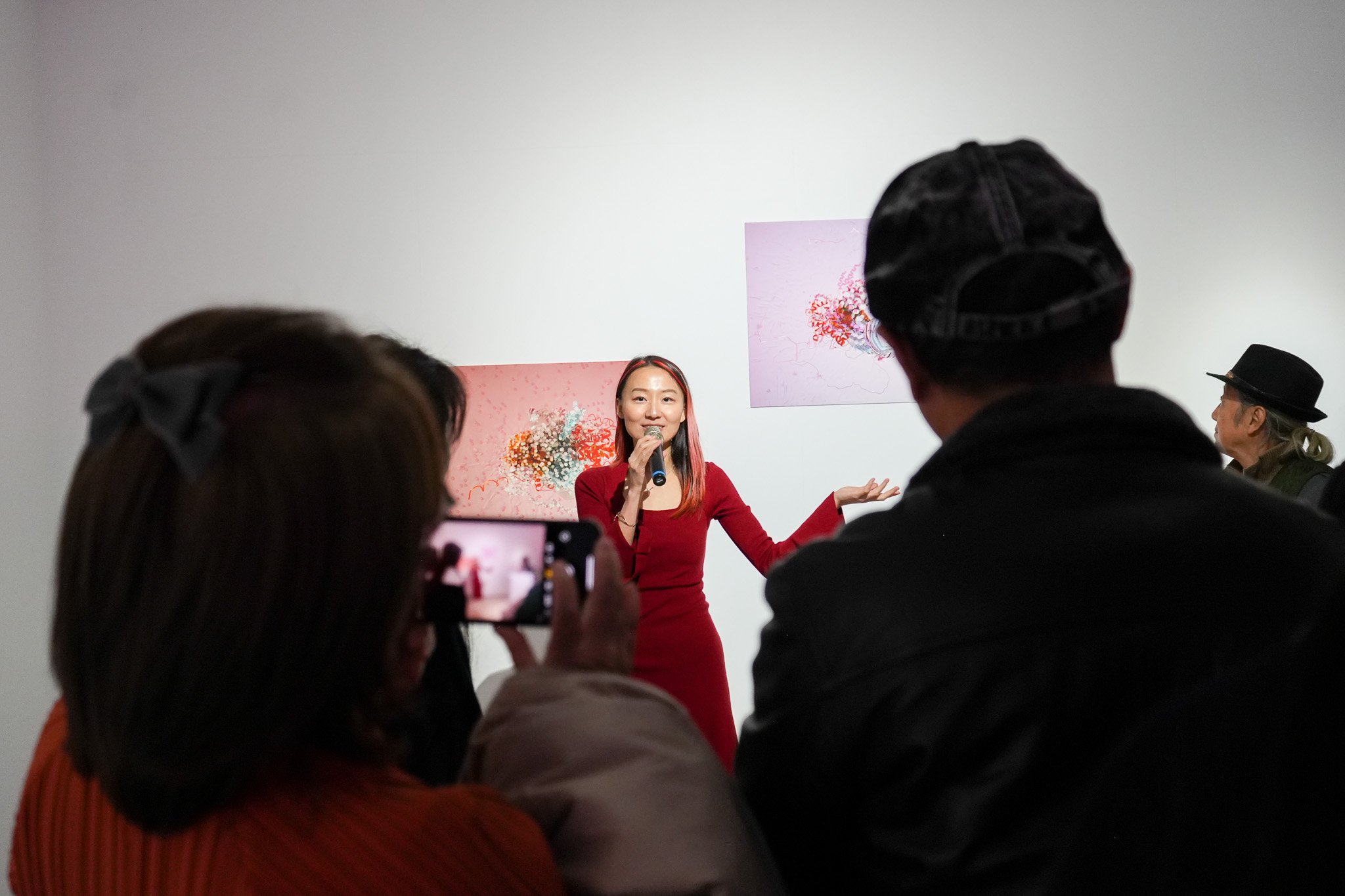
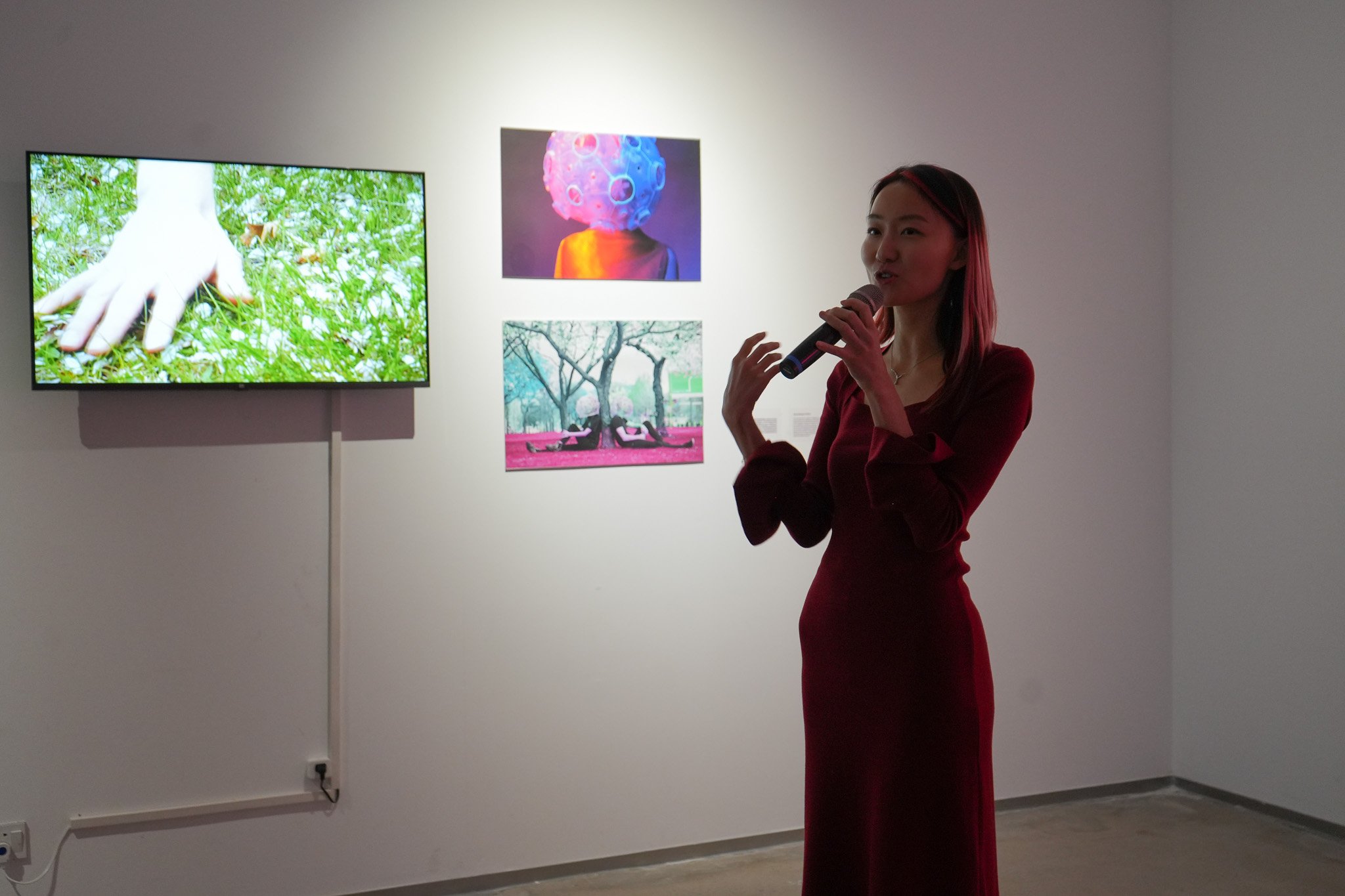
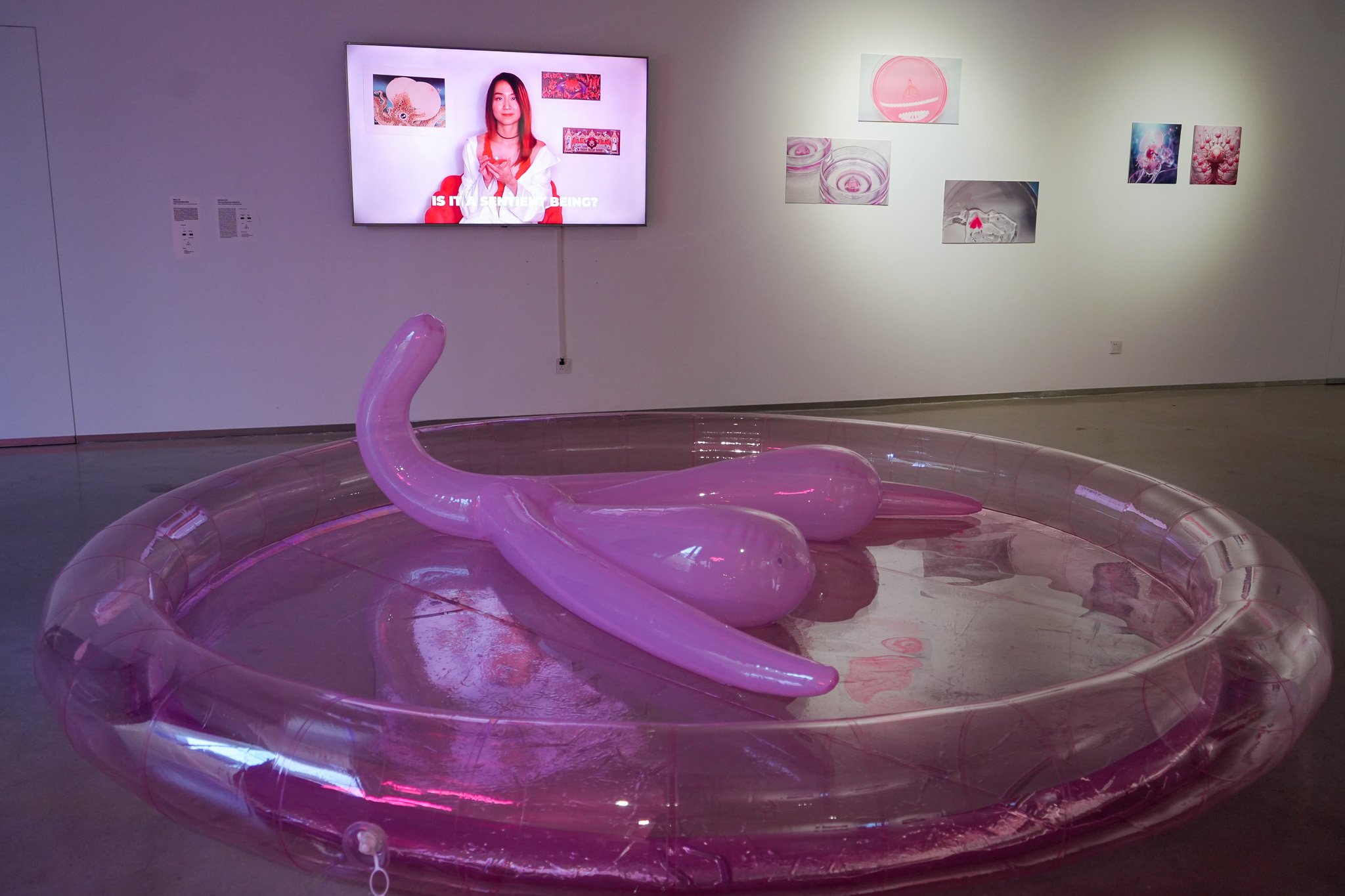
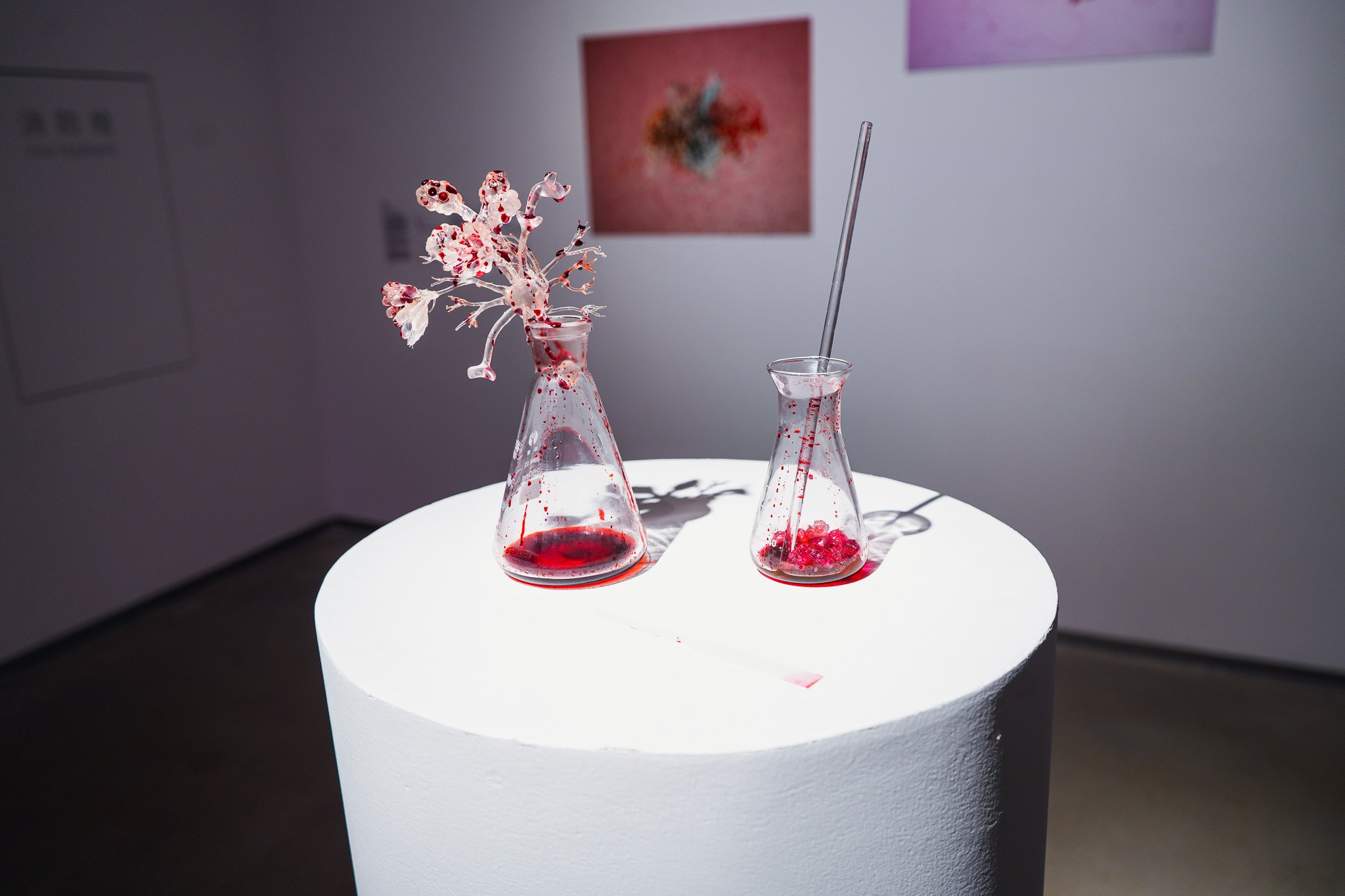

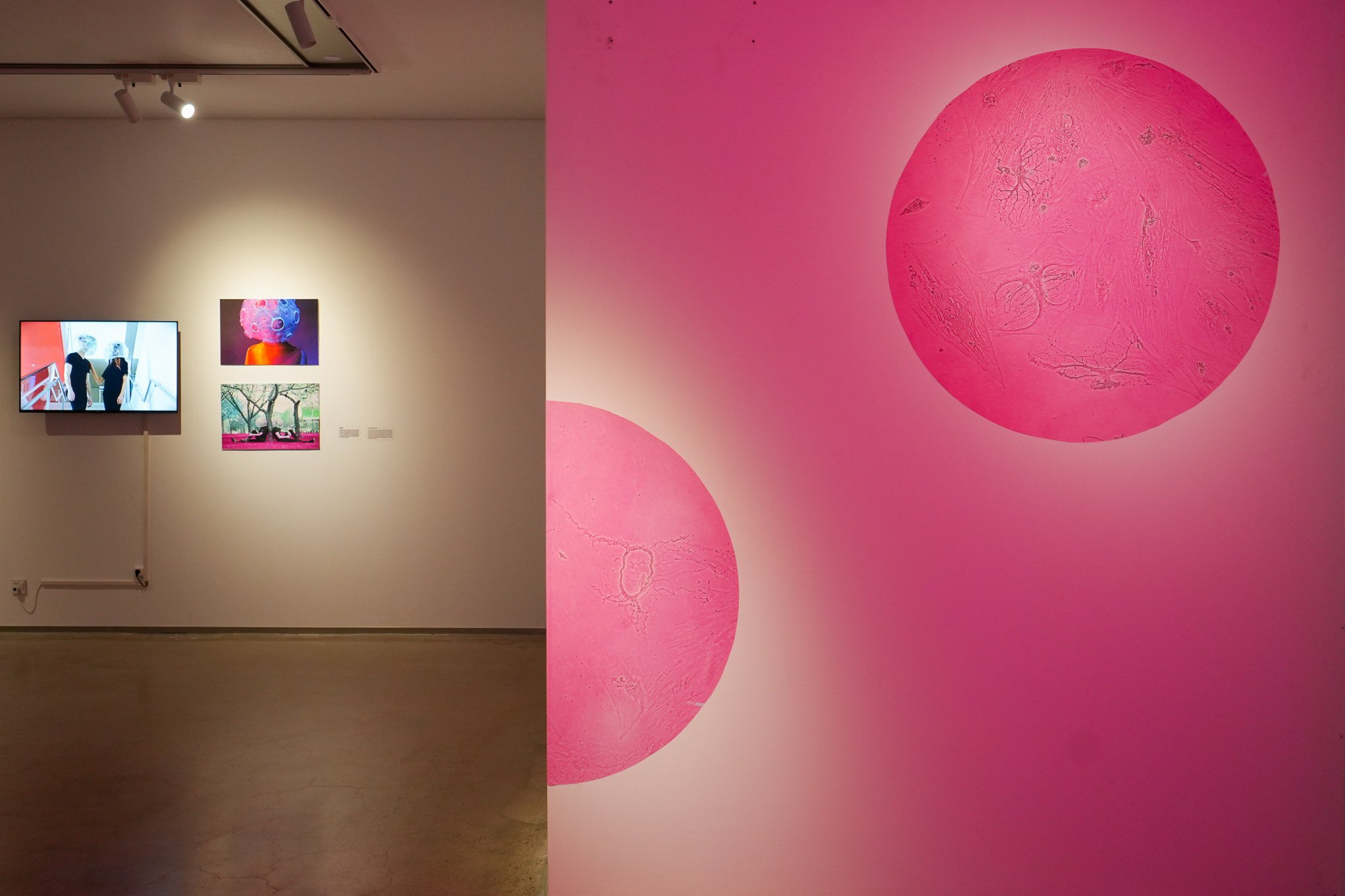
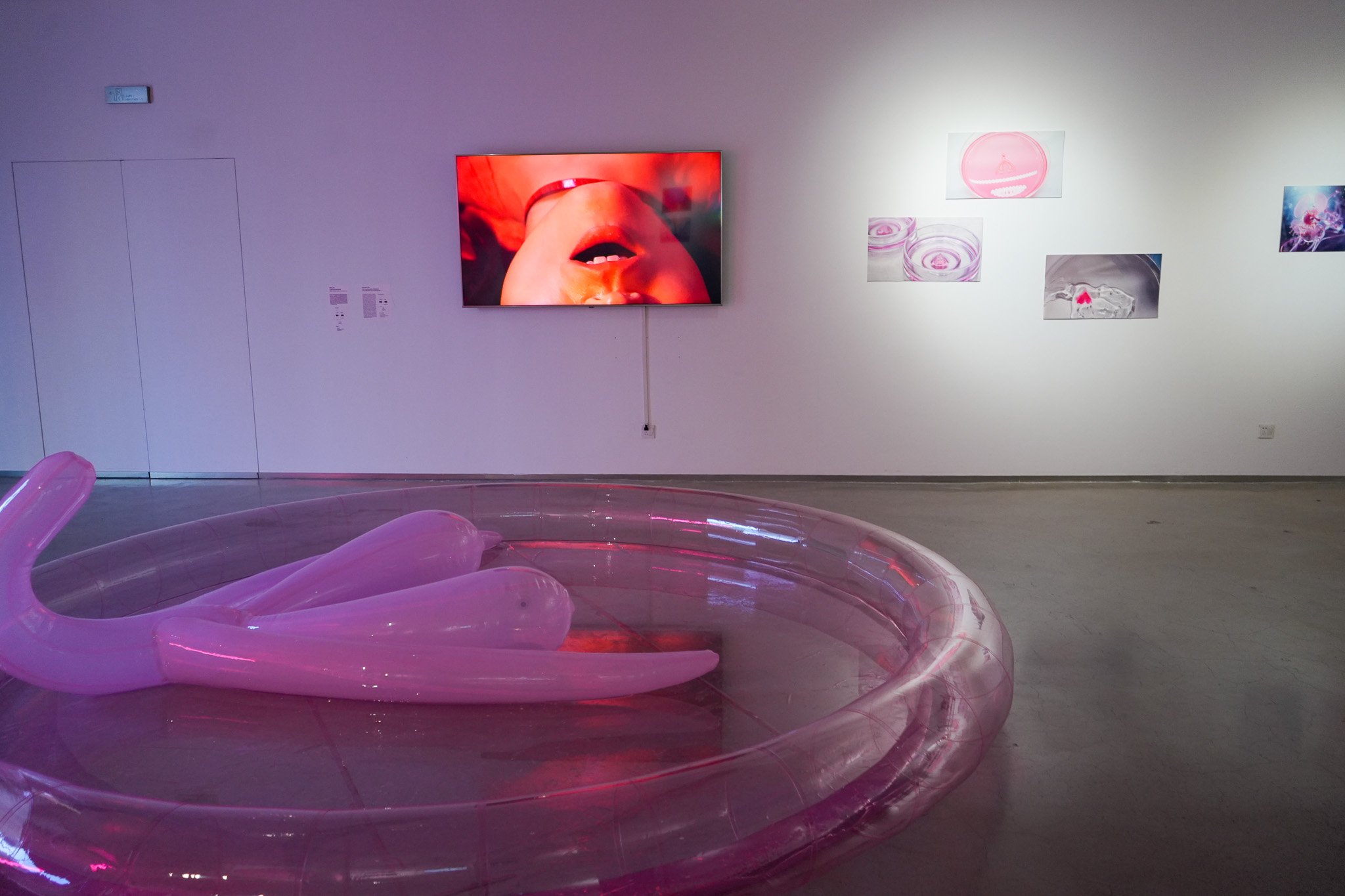
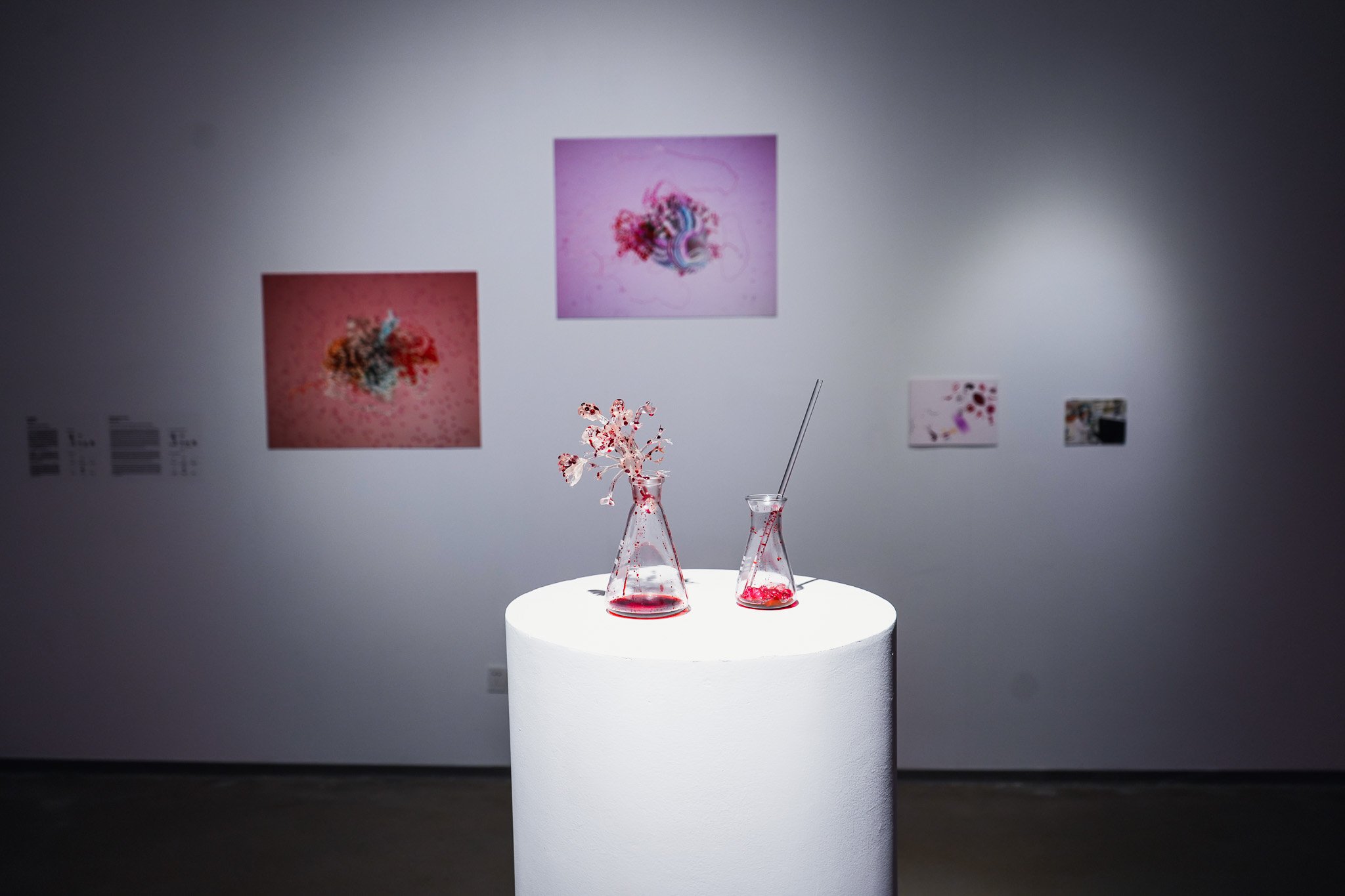
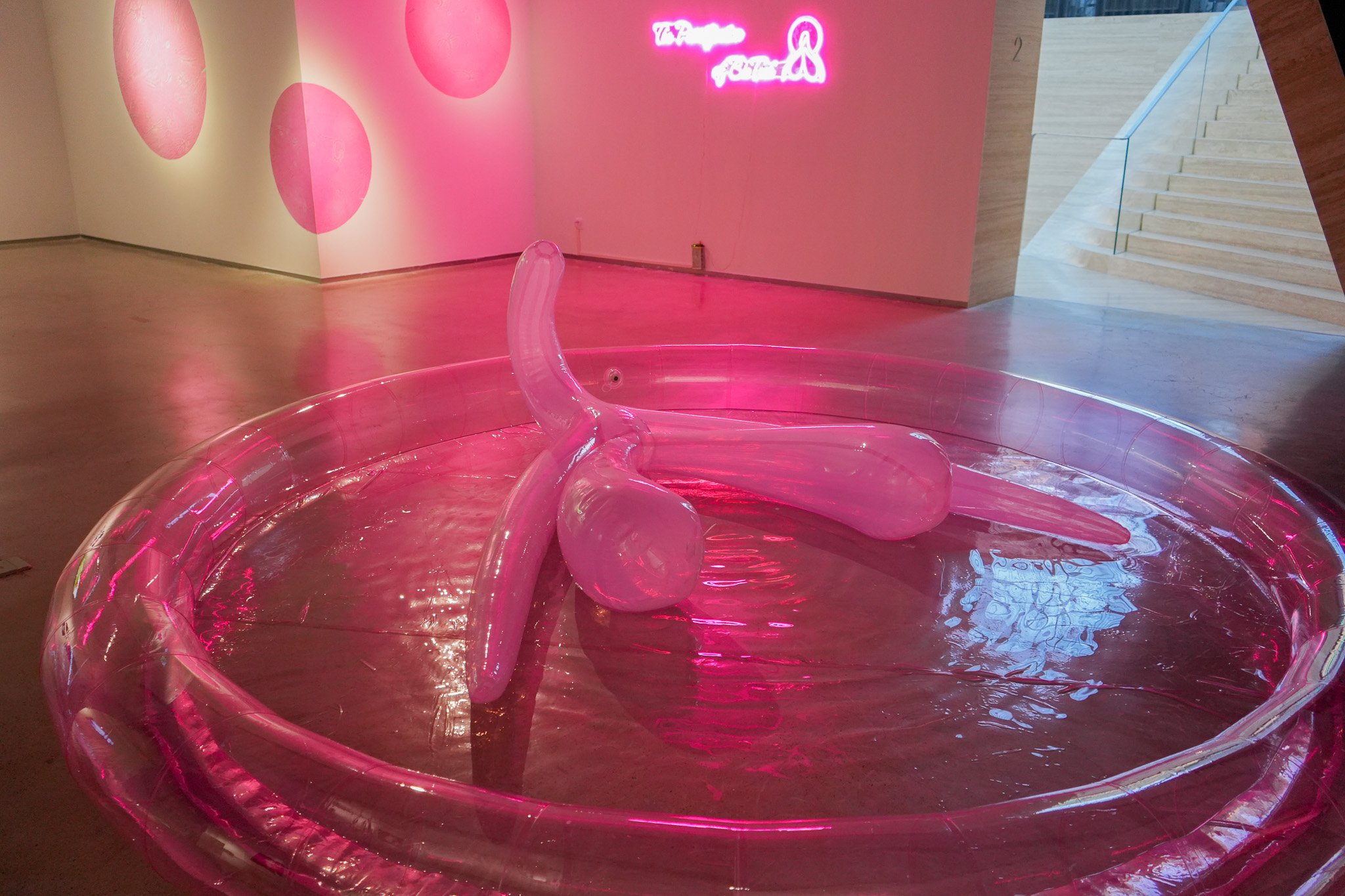
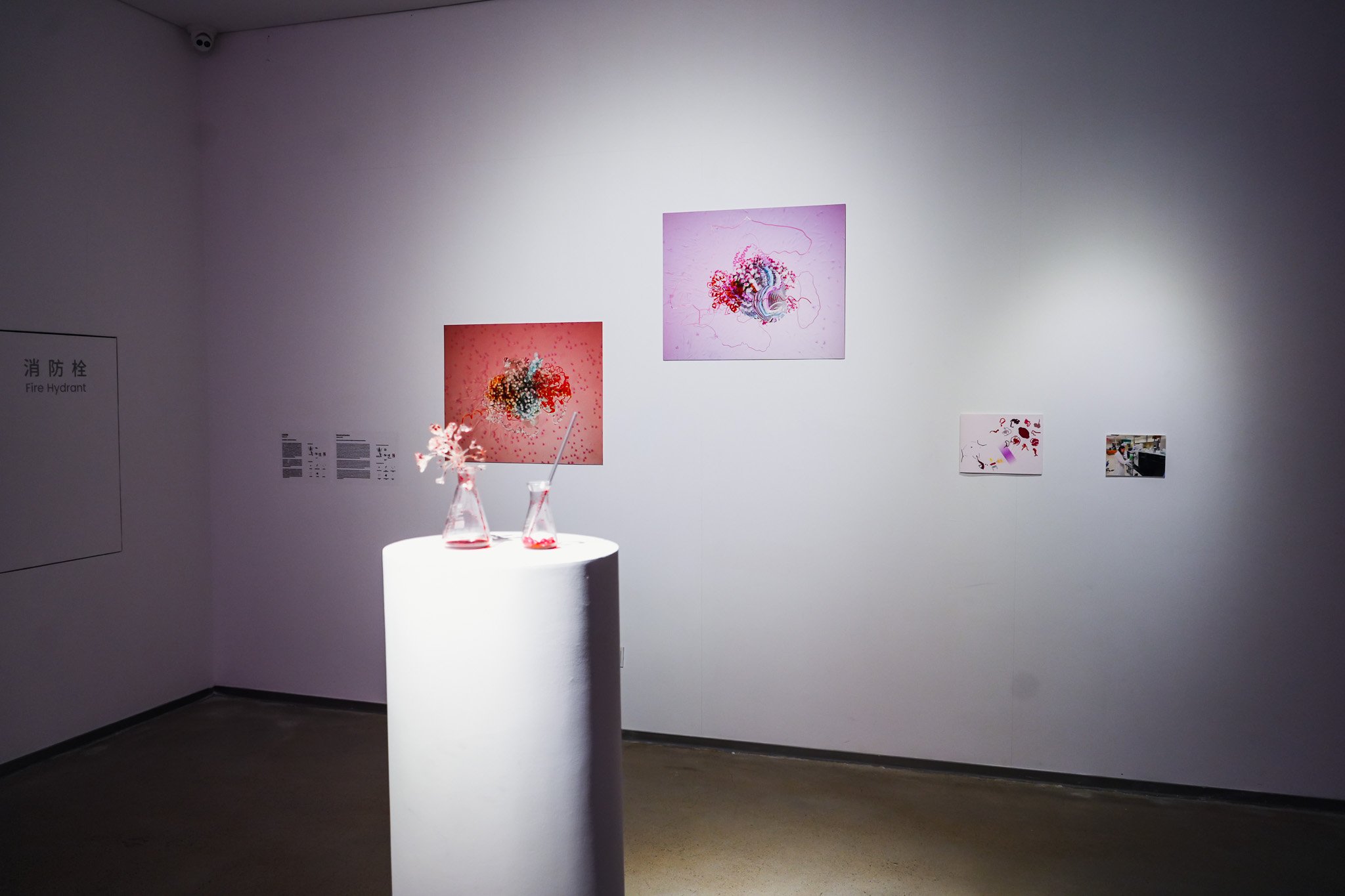
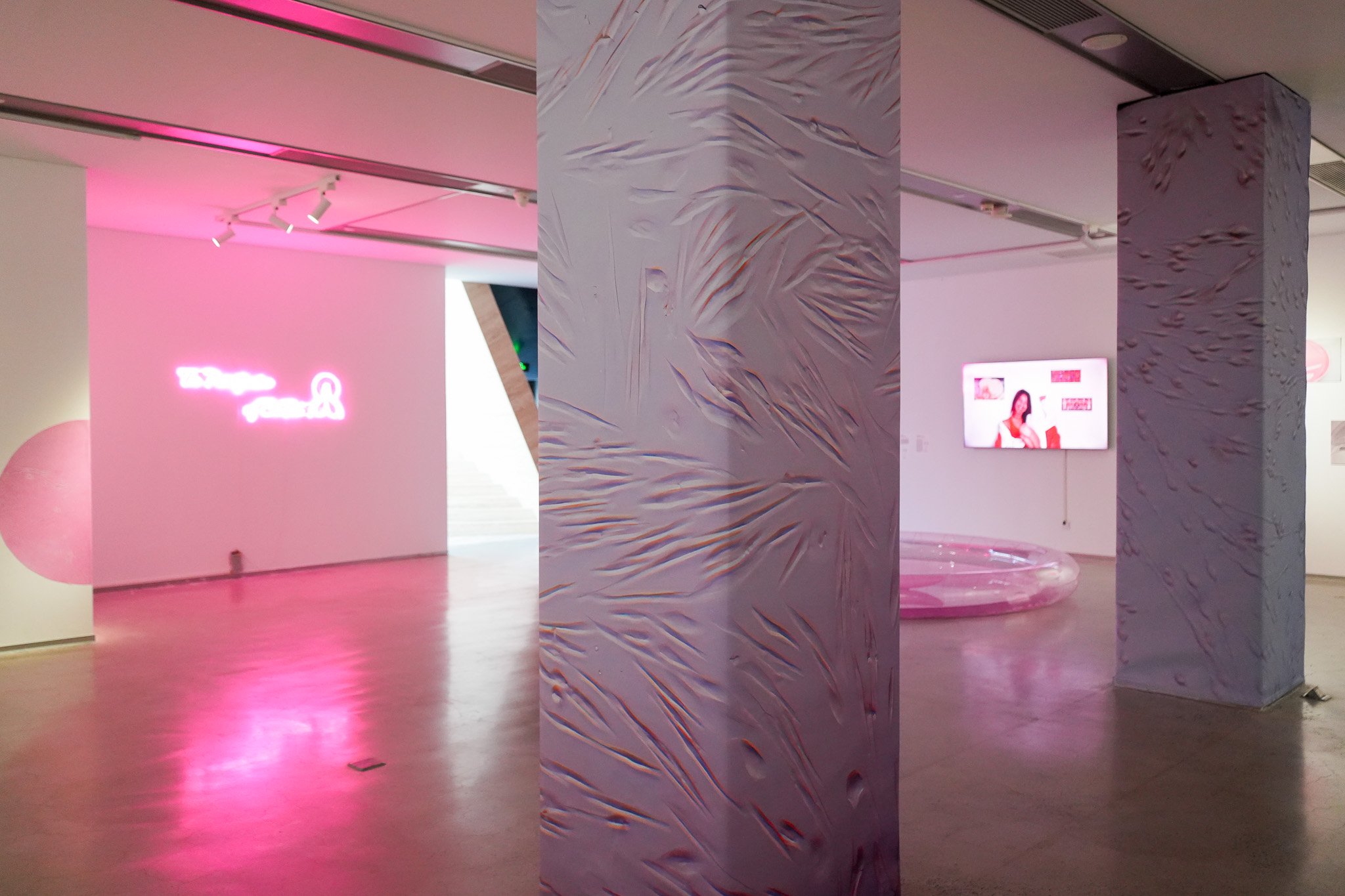
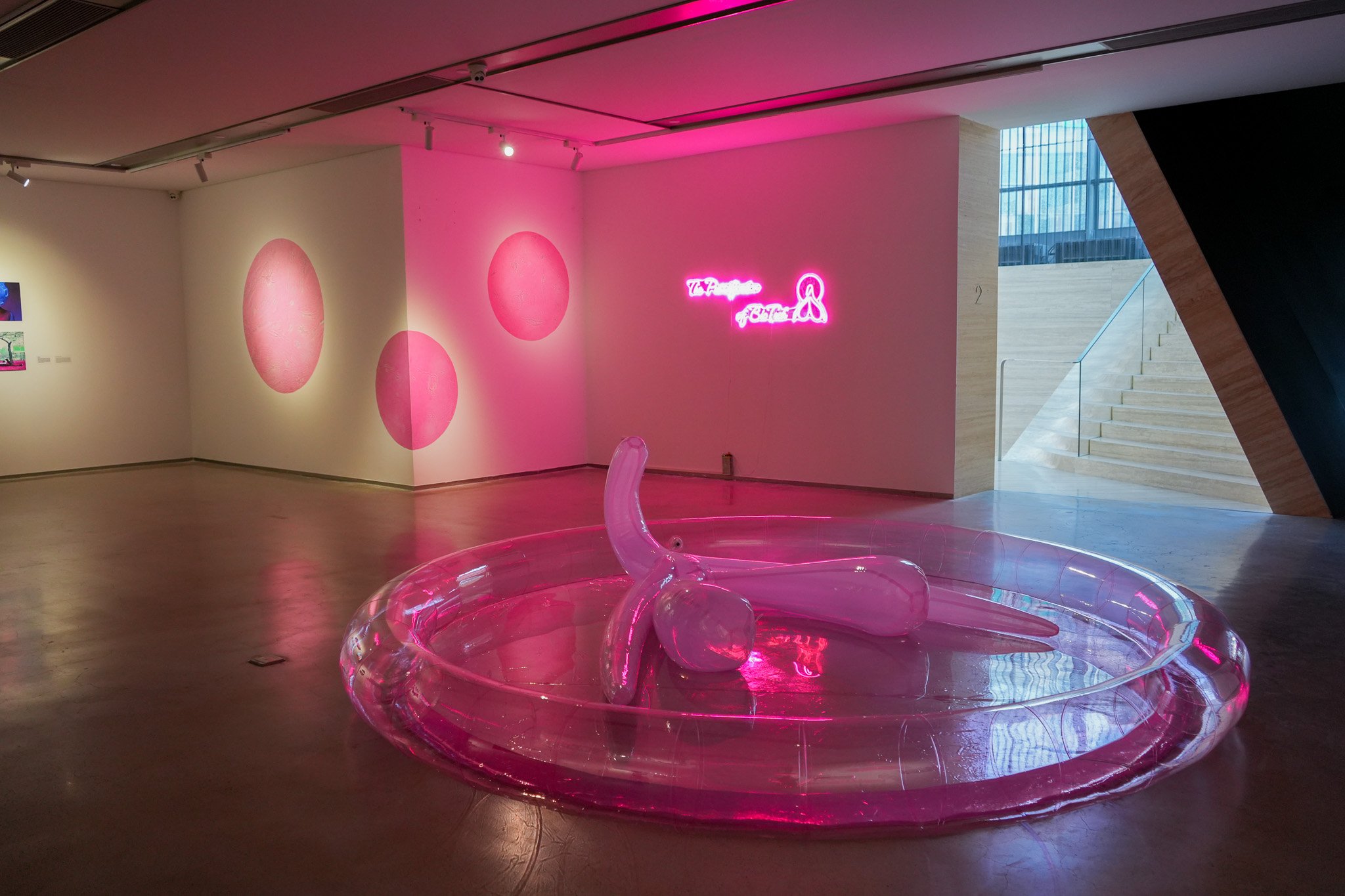
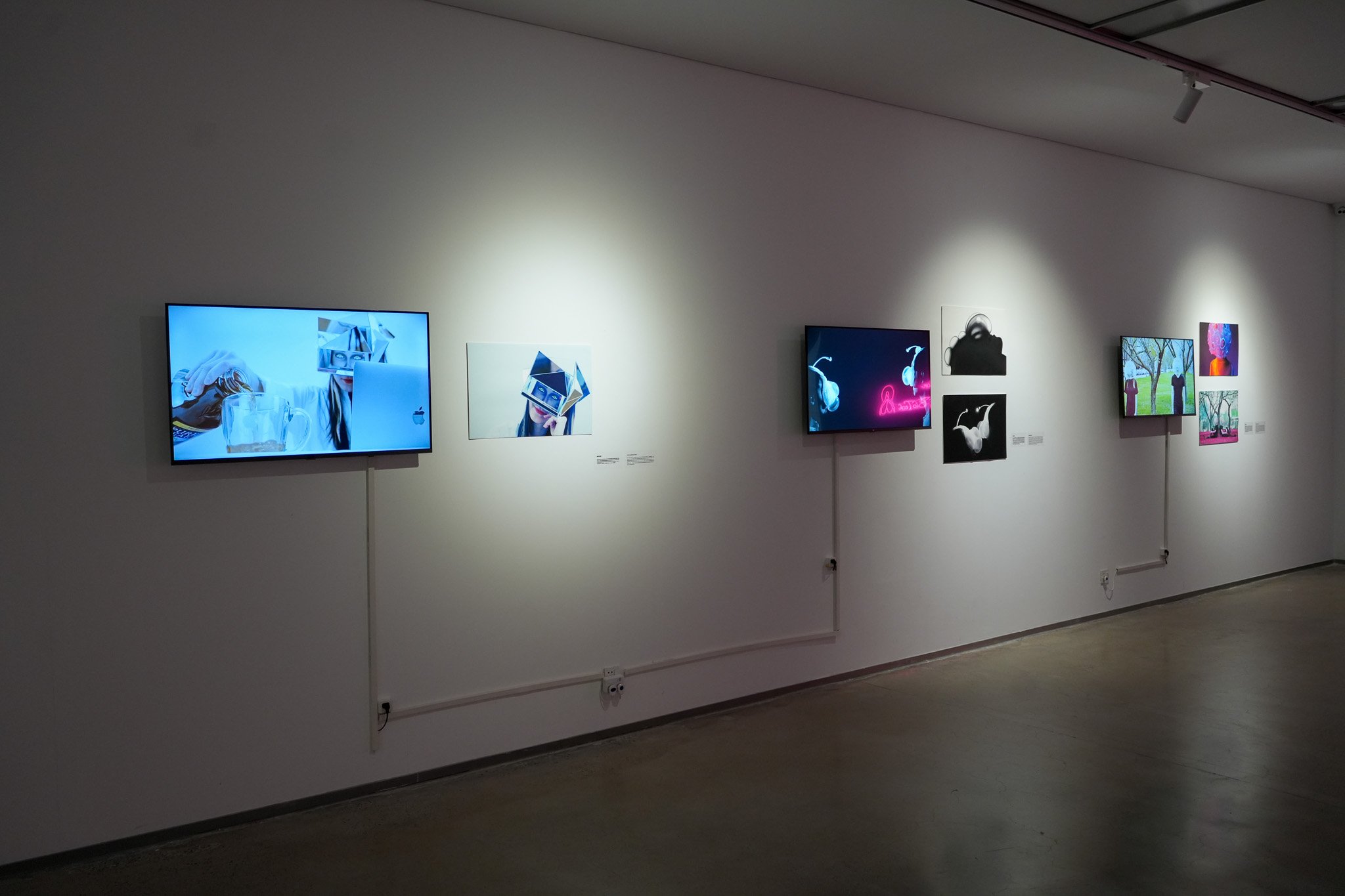

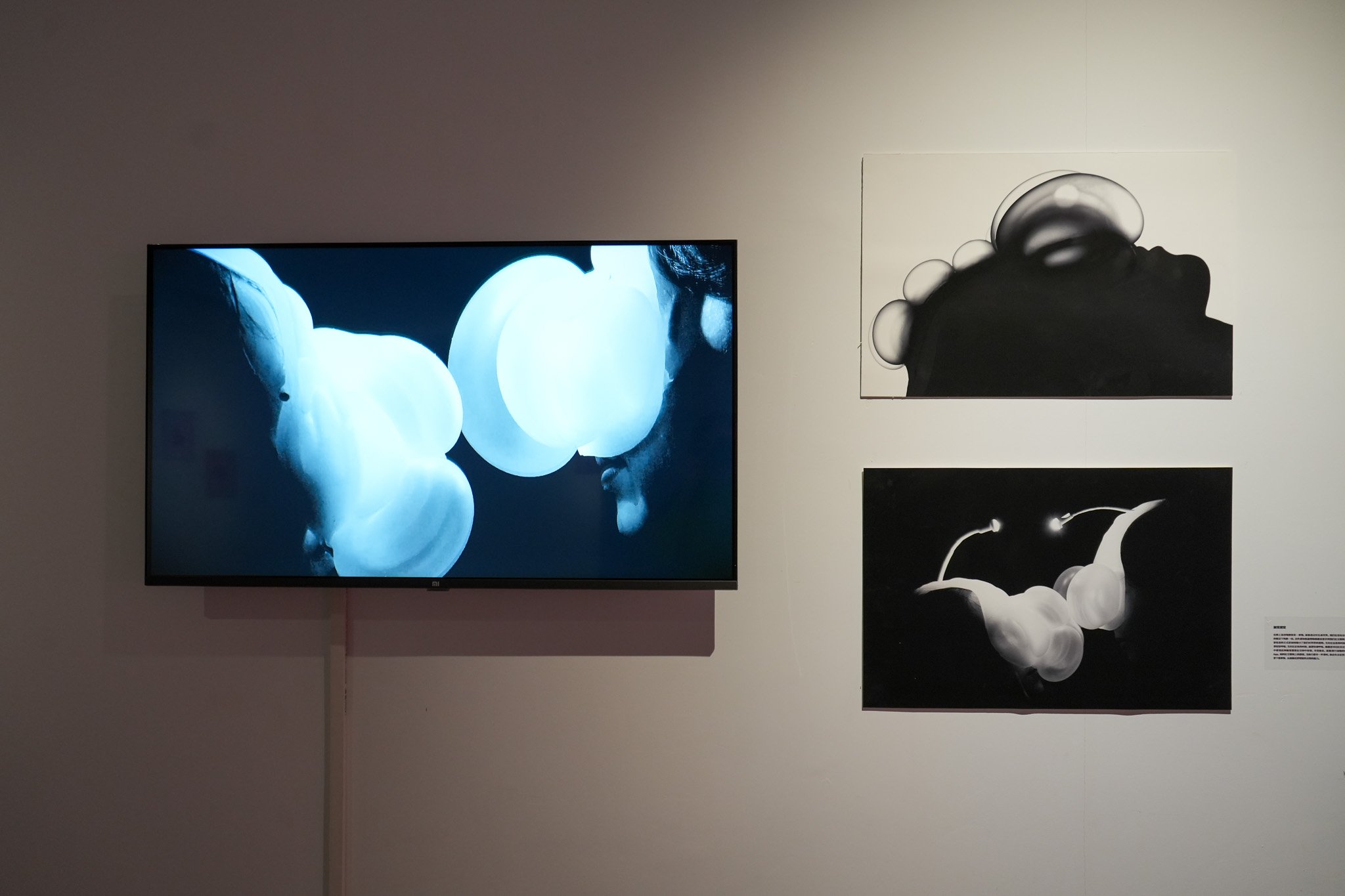
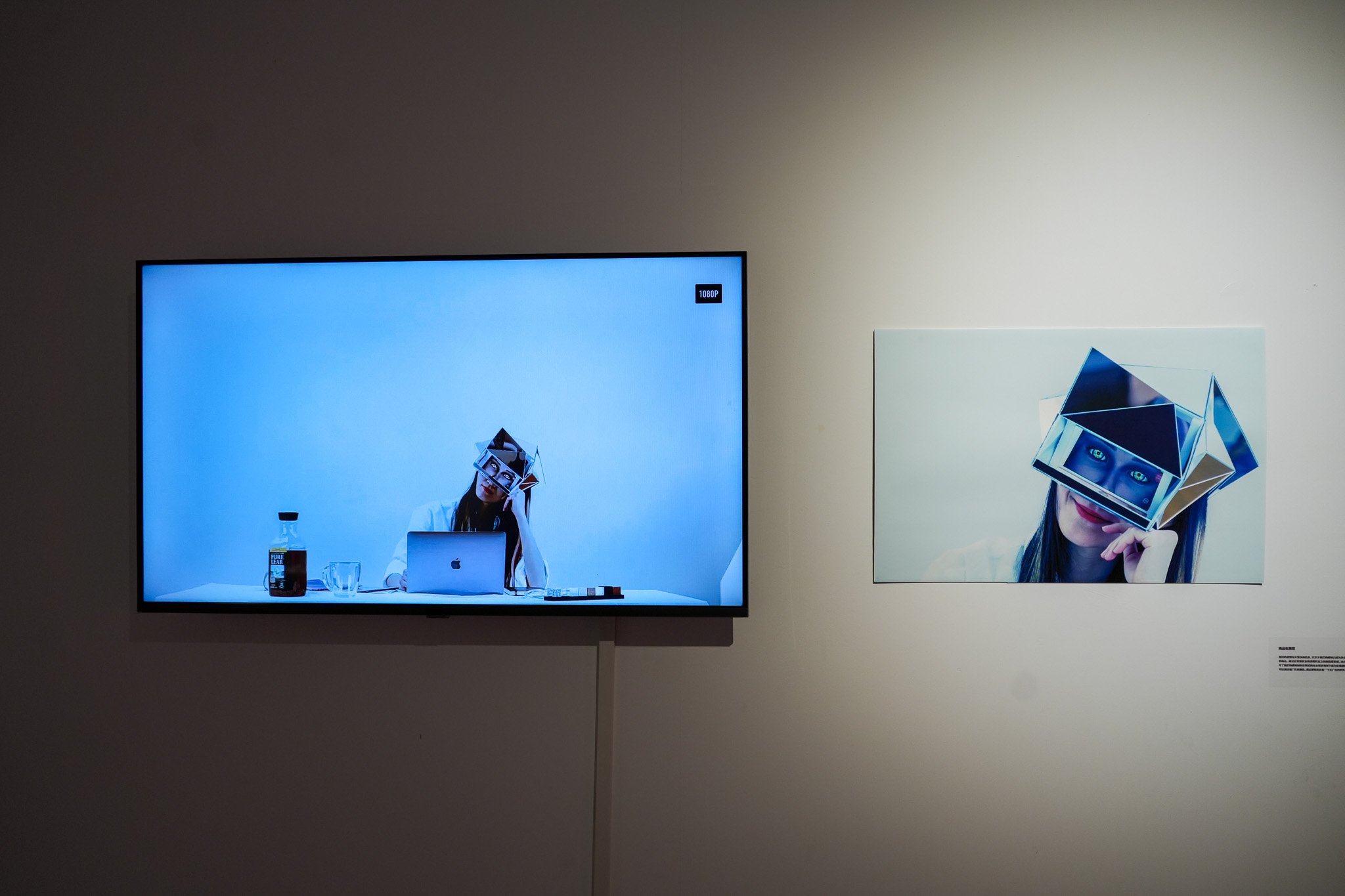
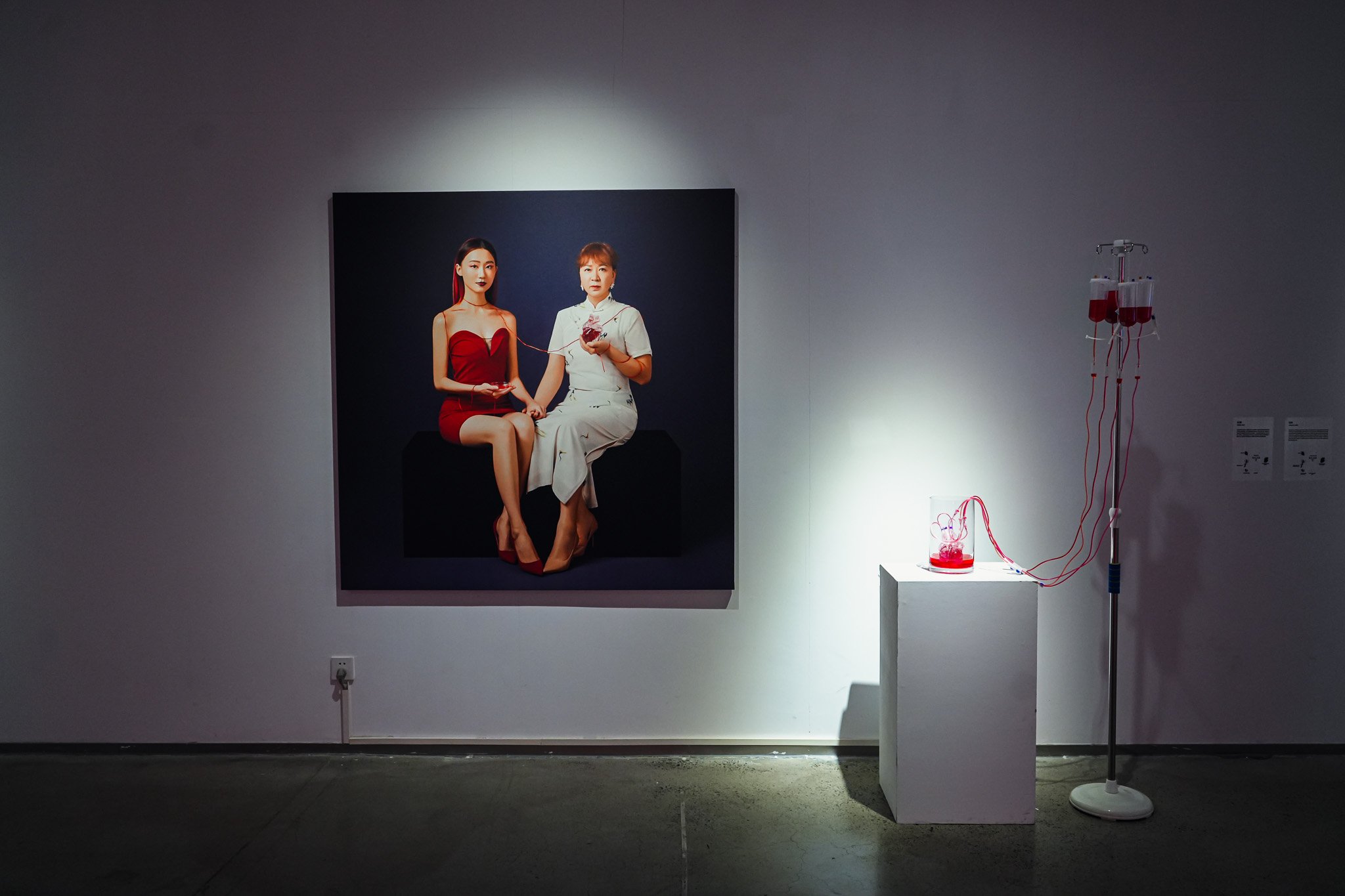
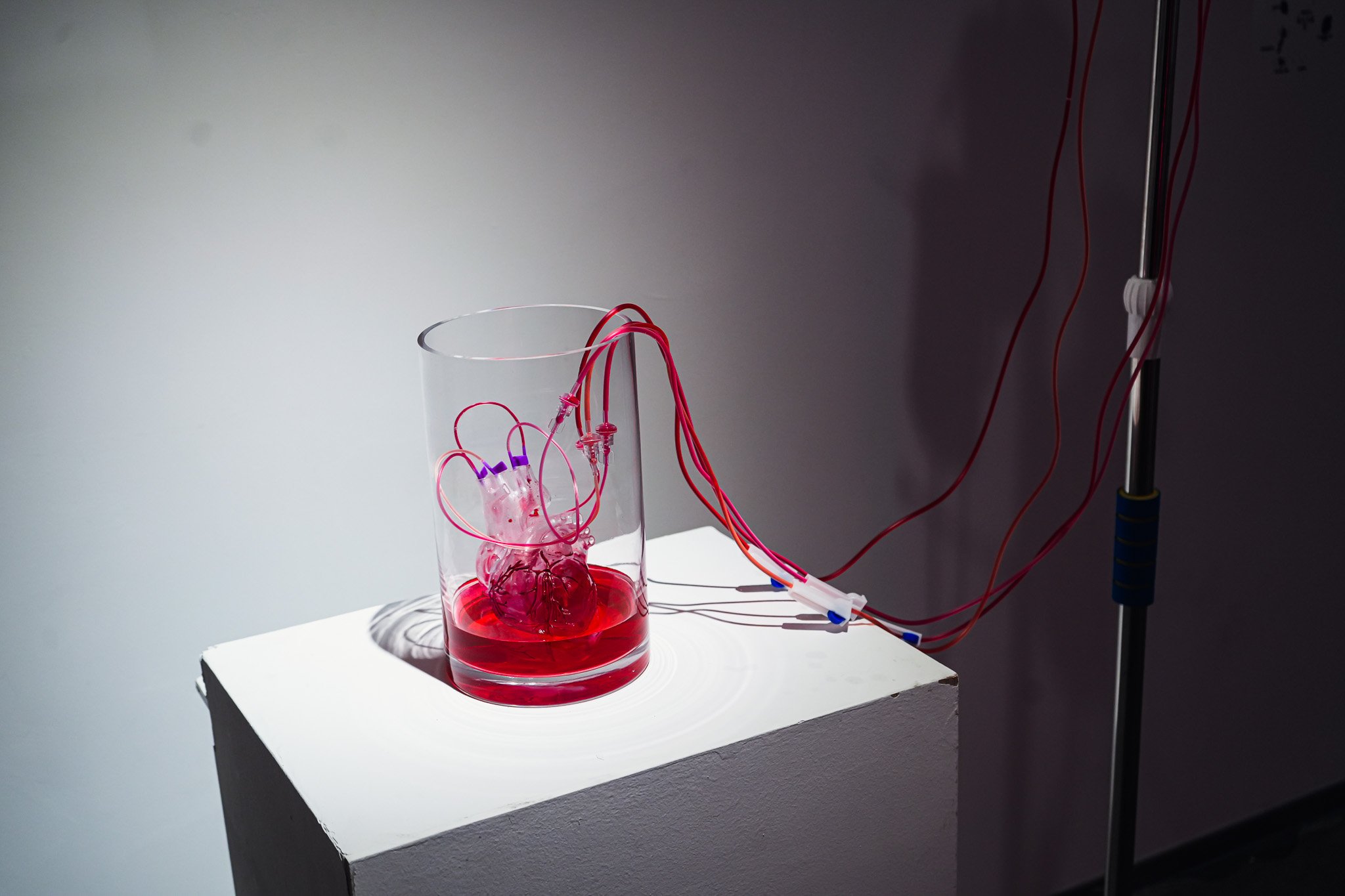
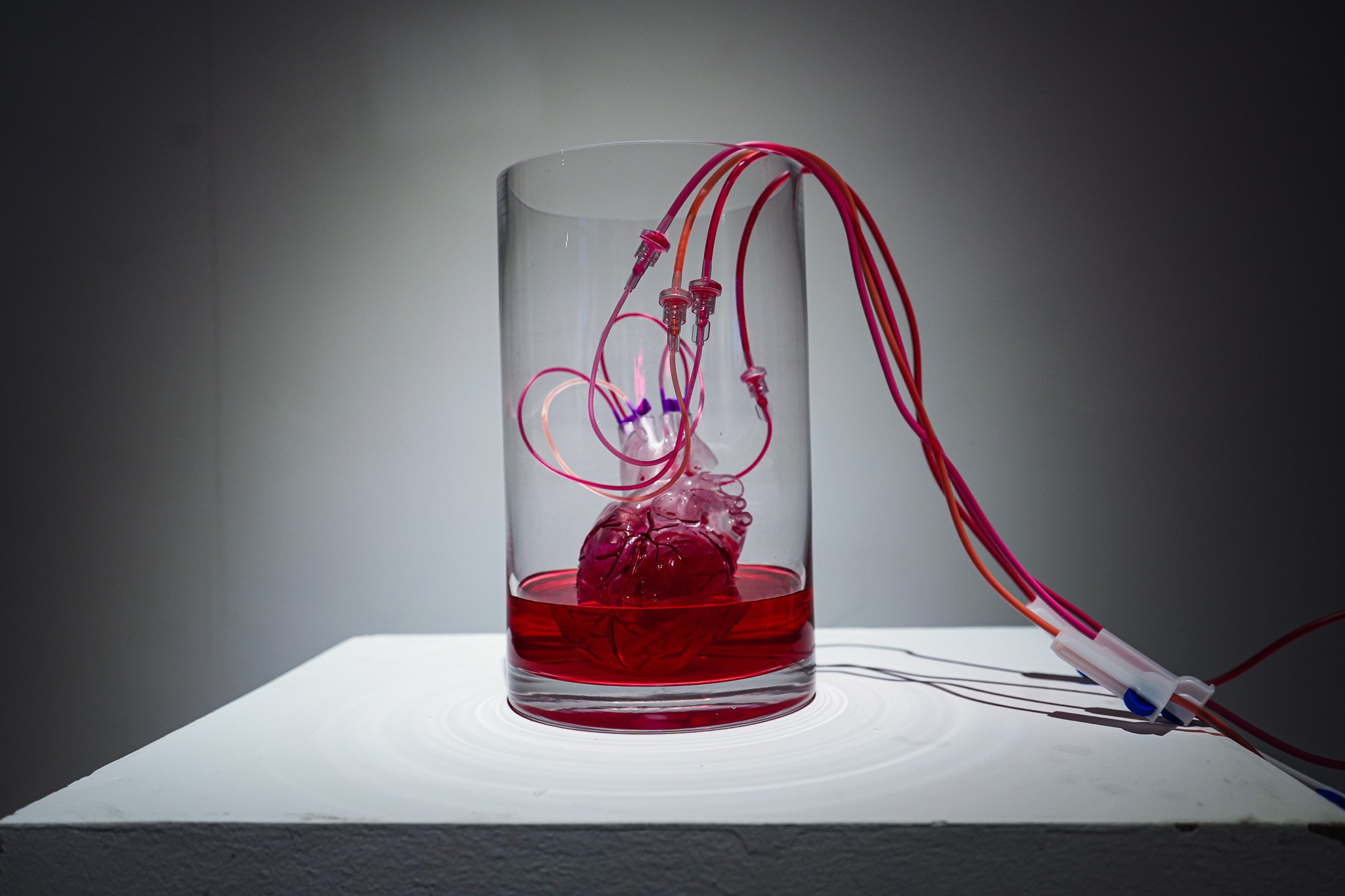
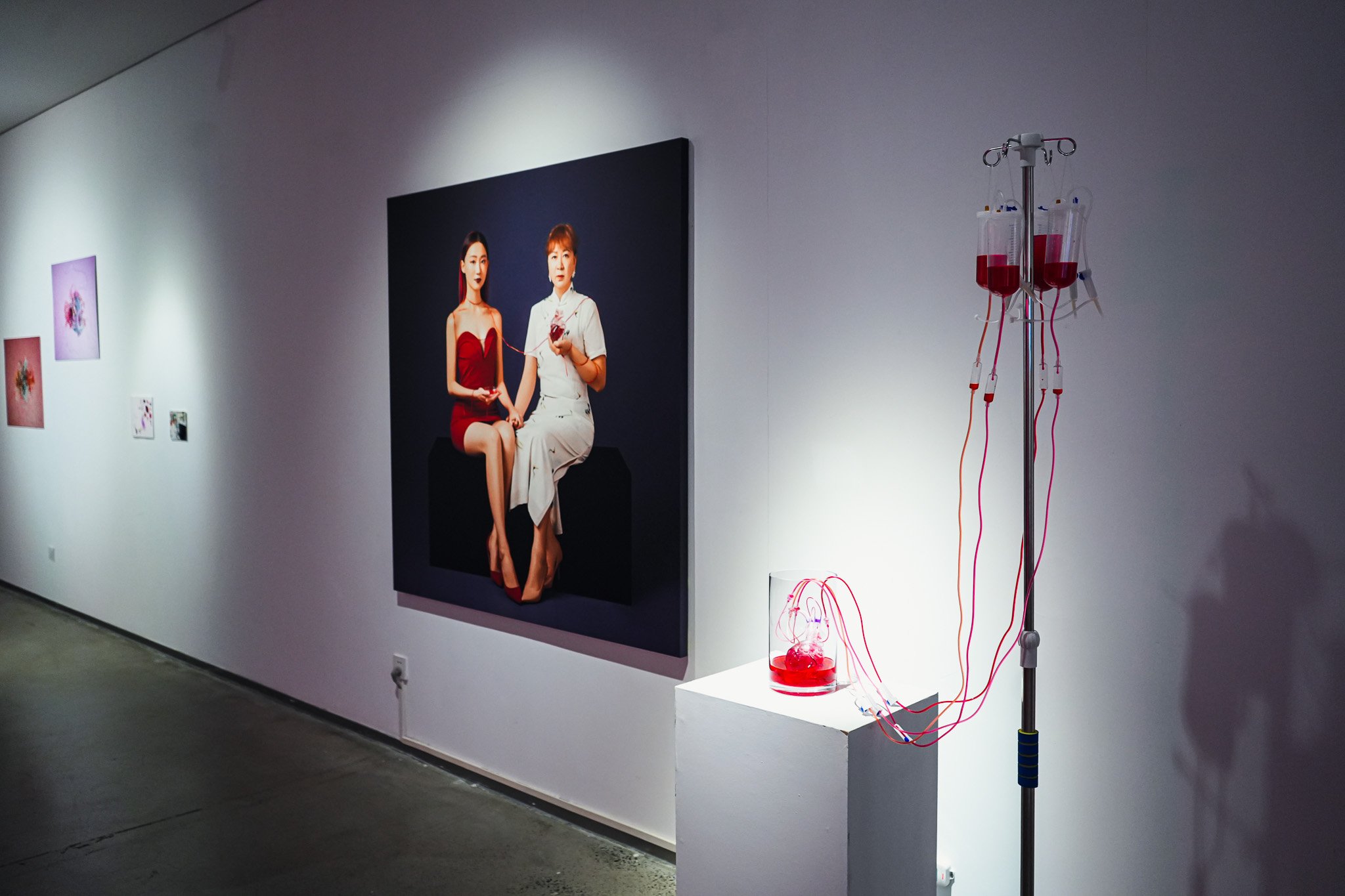
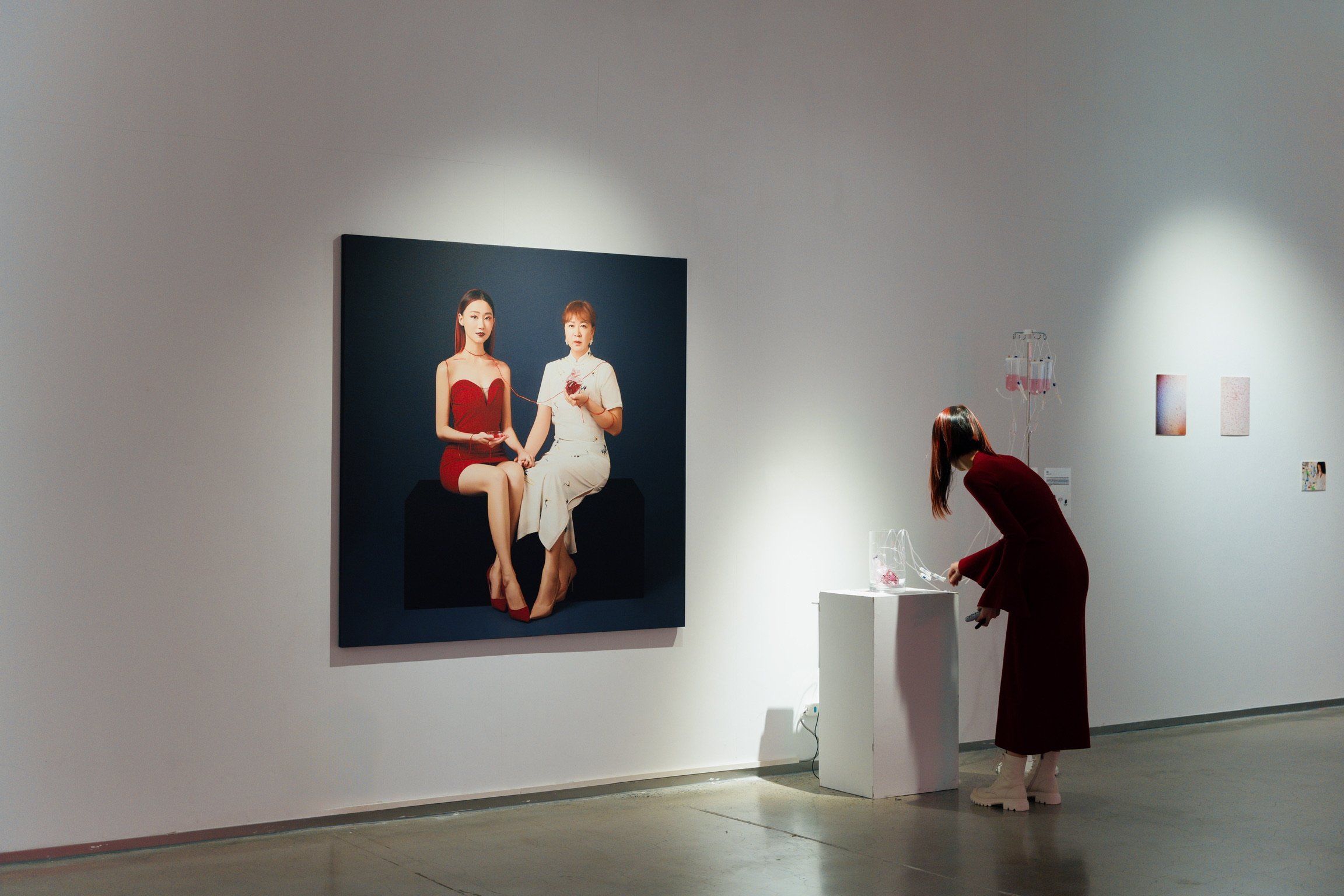
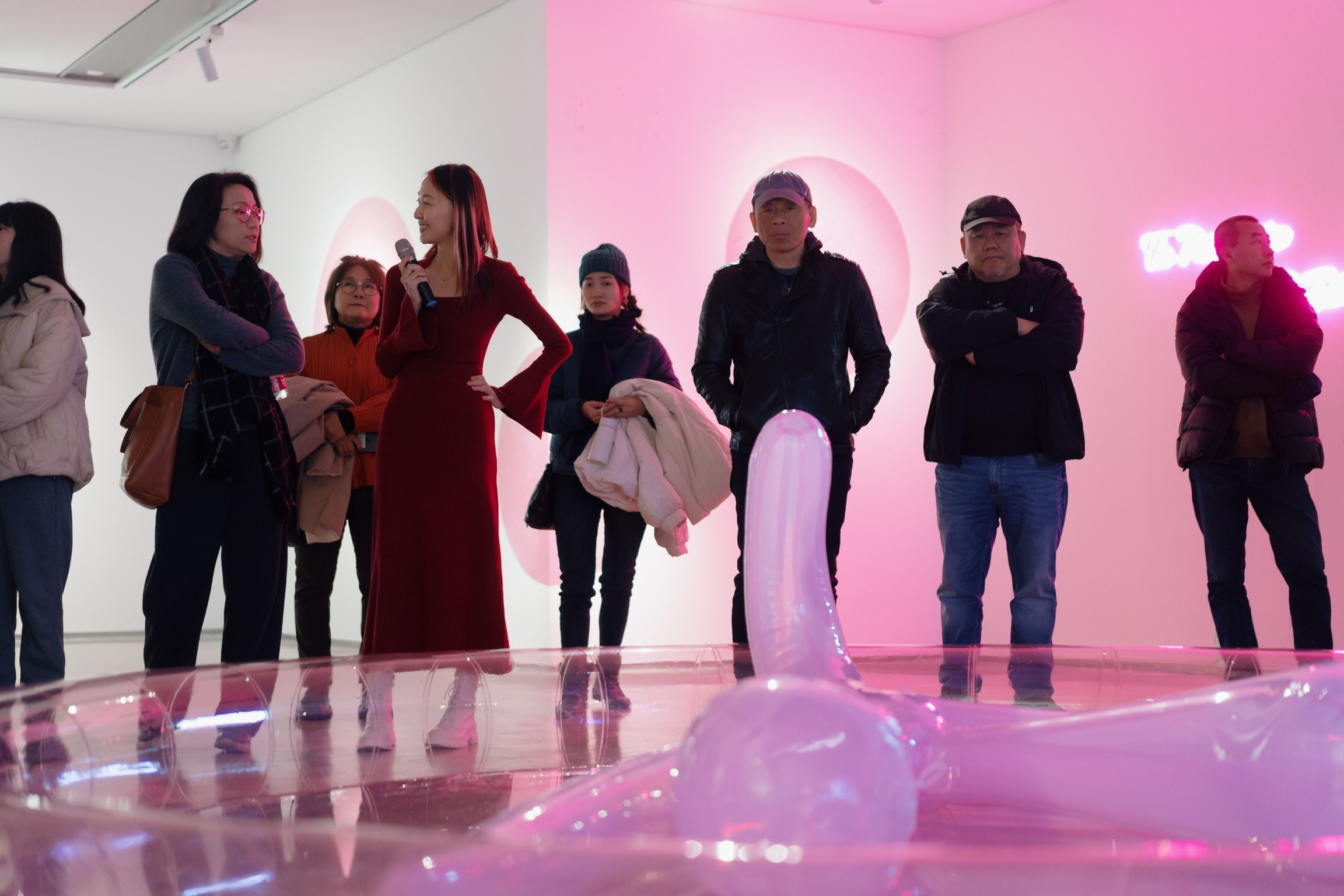
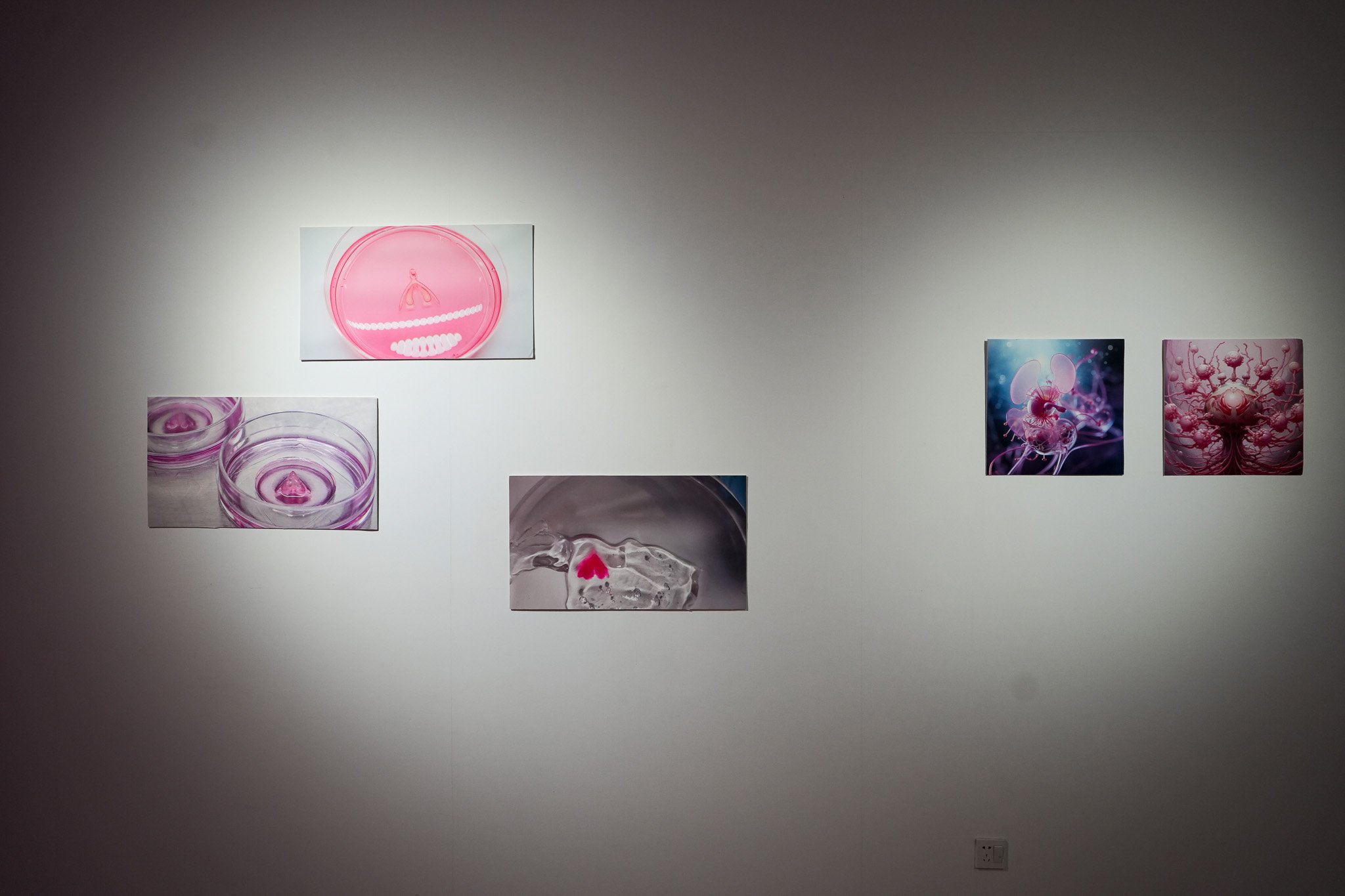
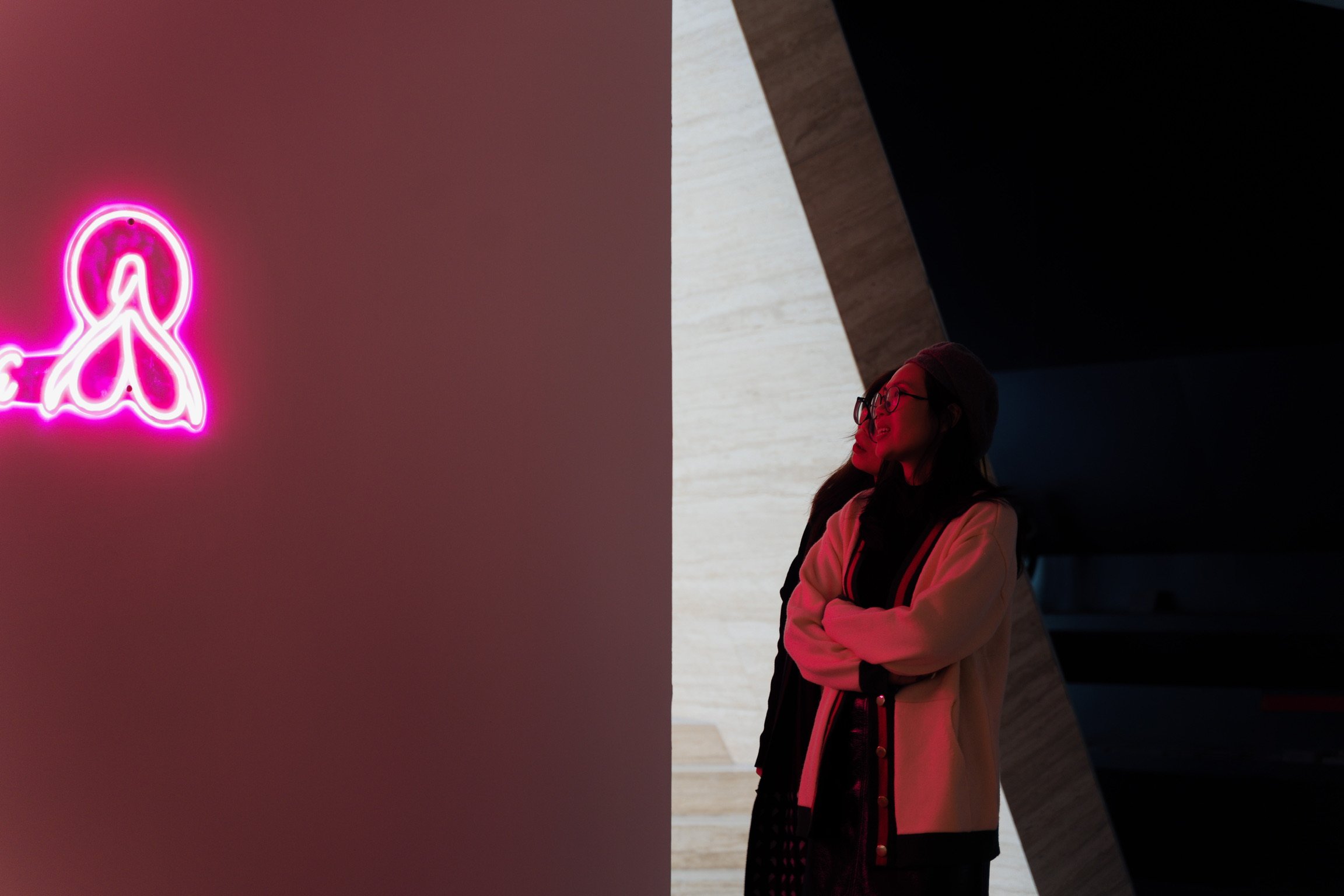

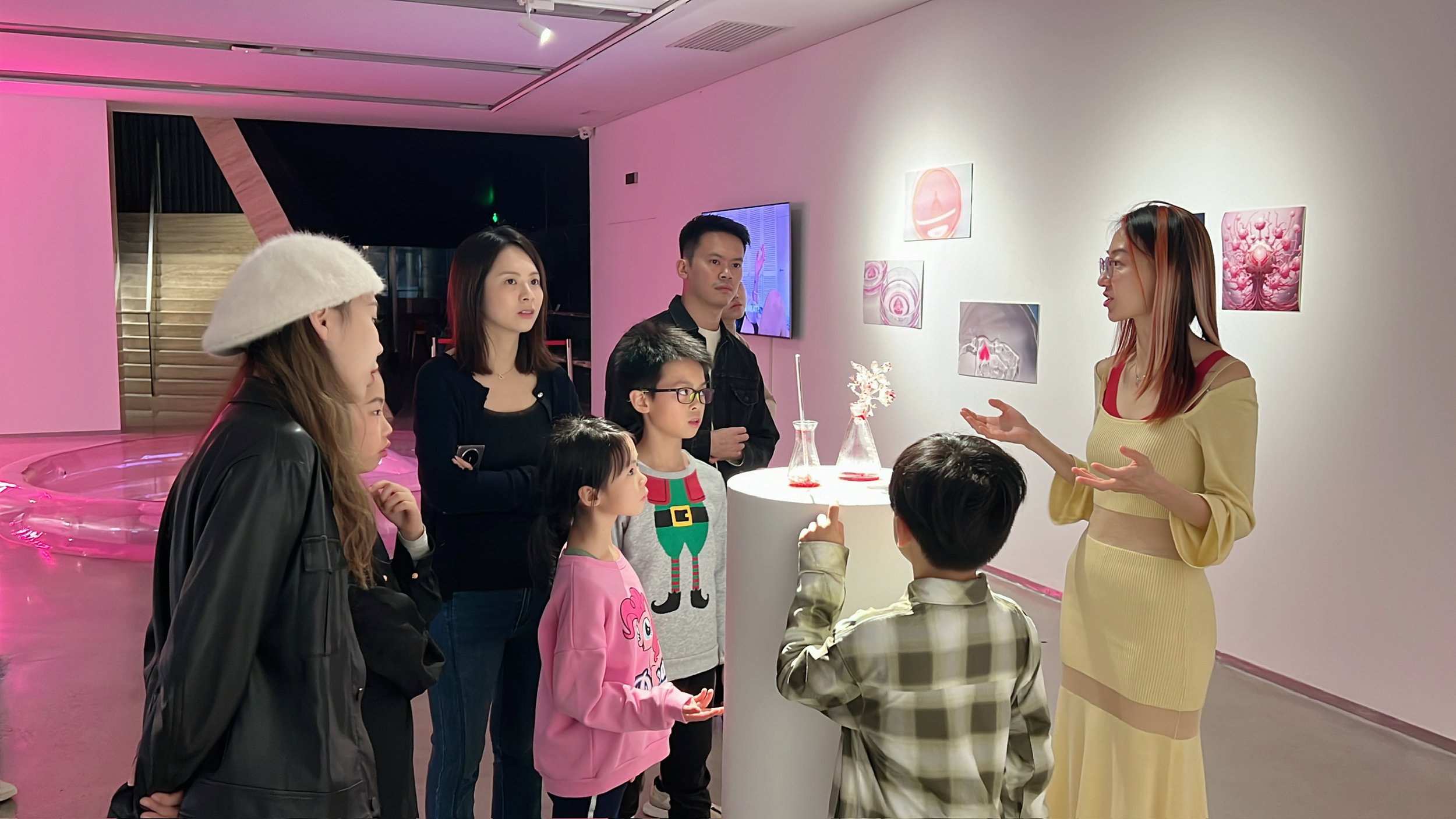
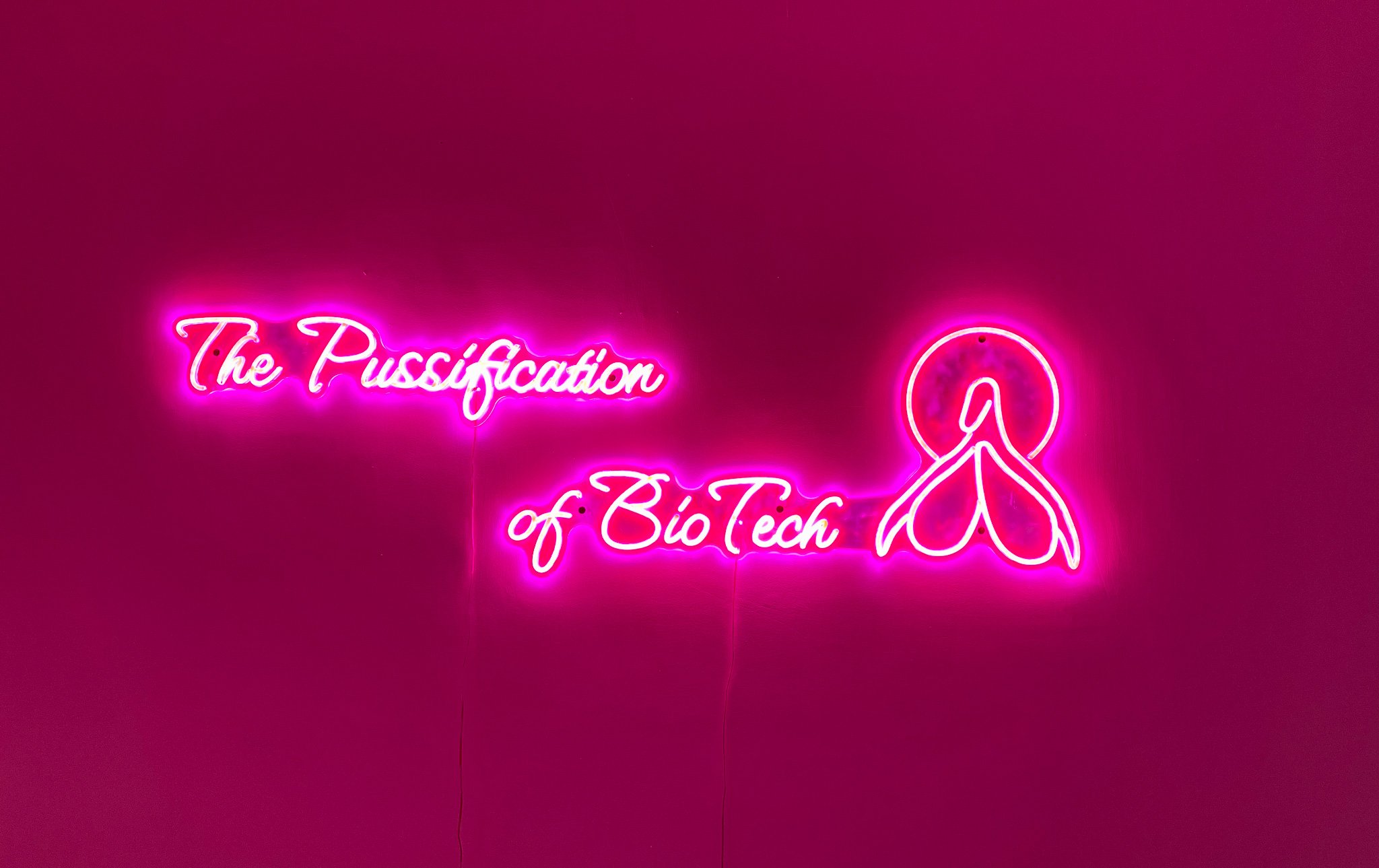
Third Floor
